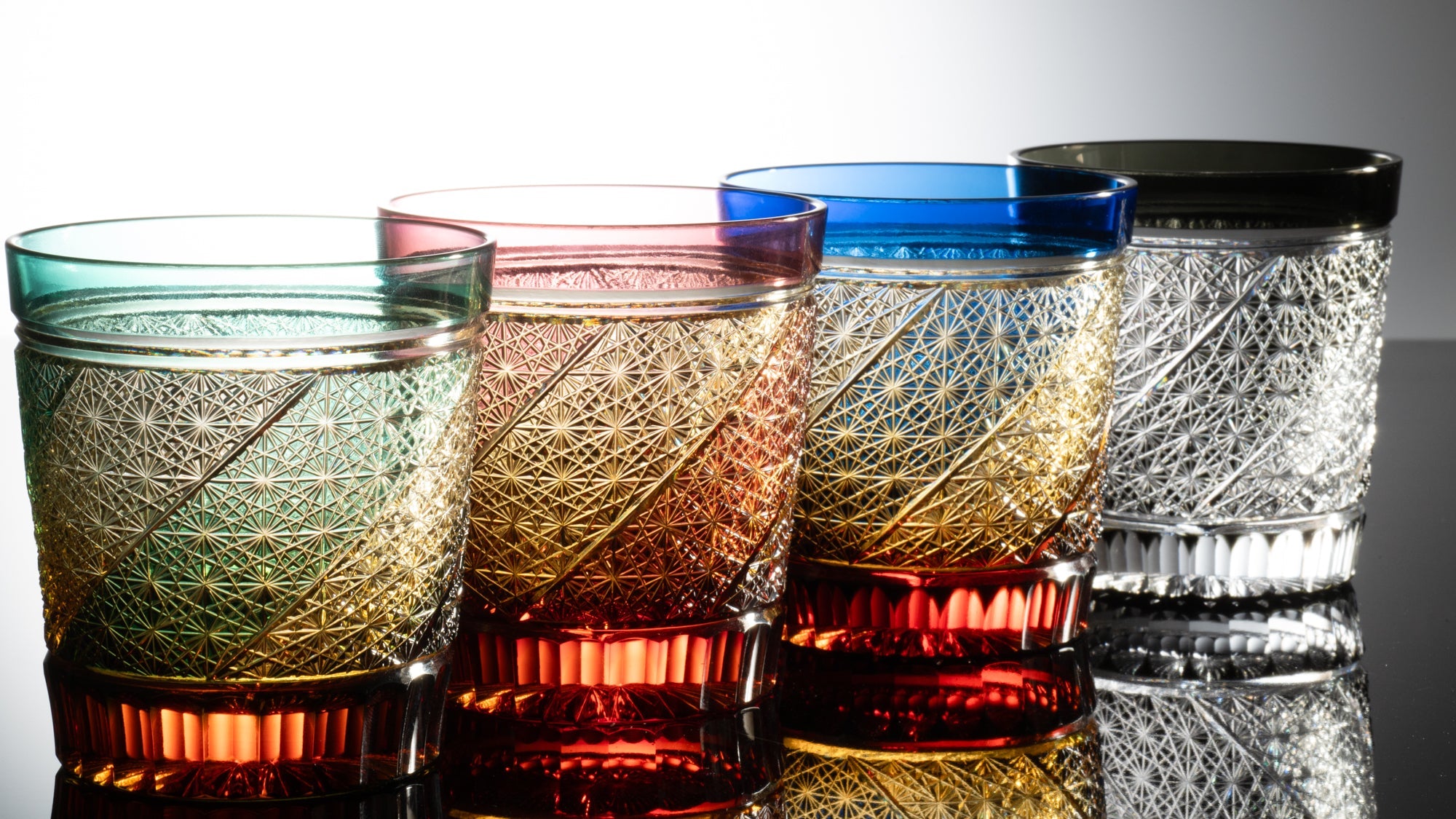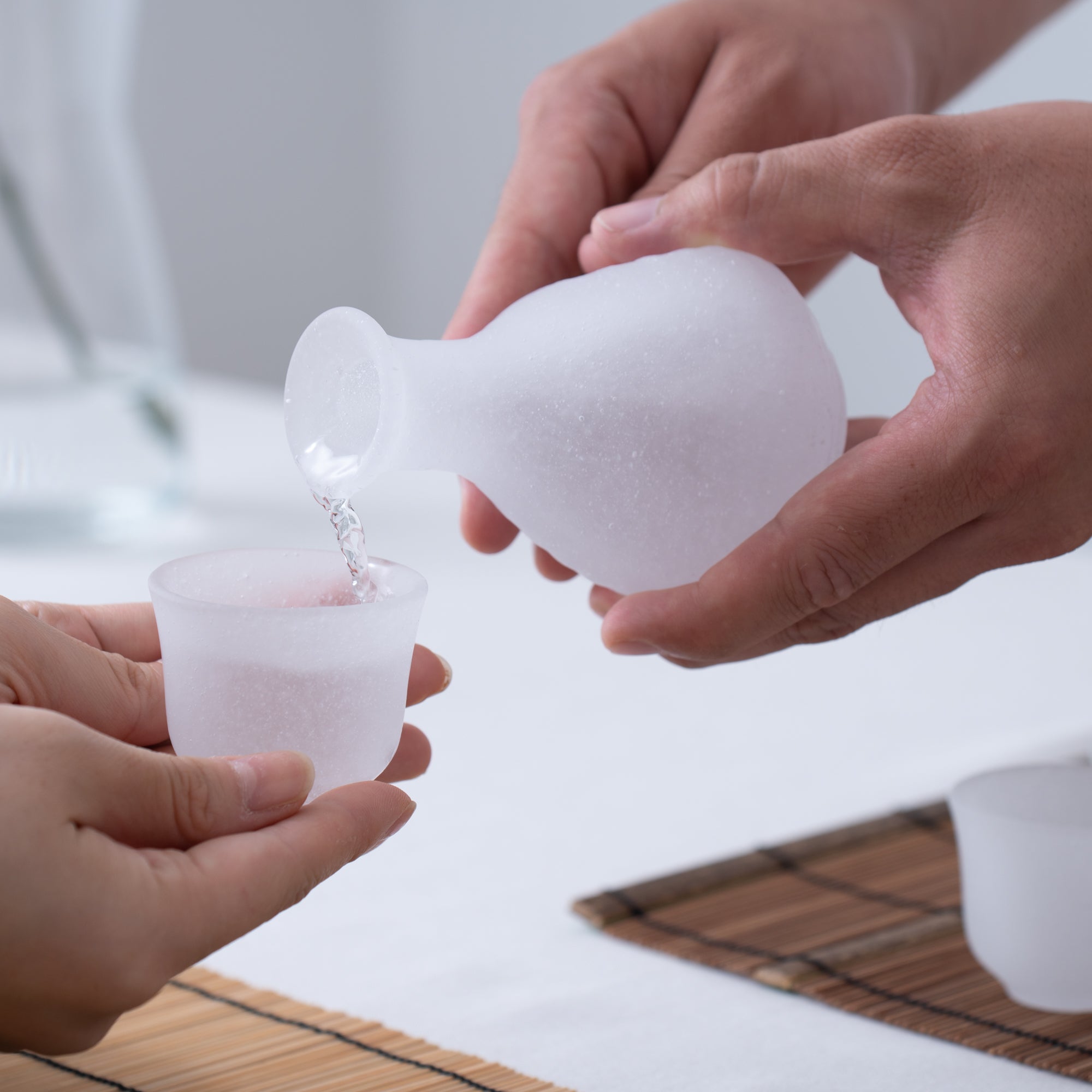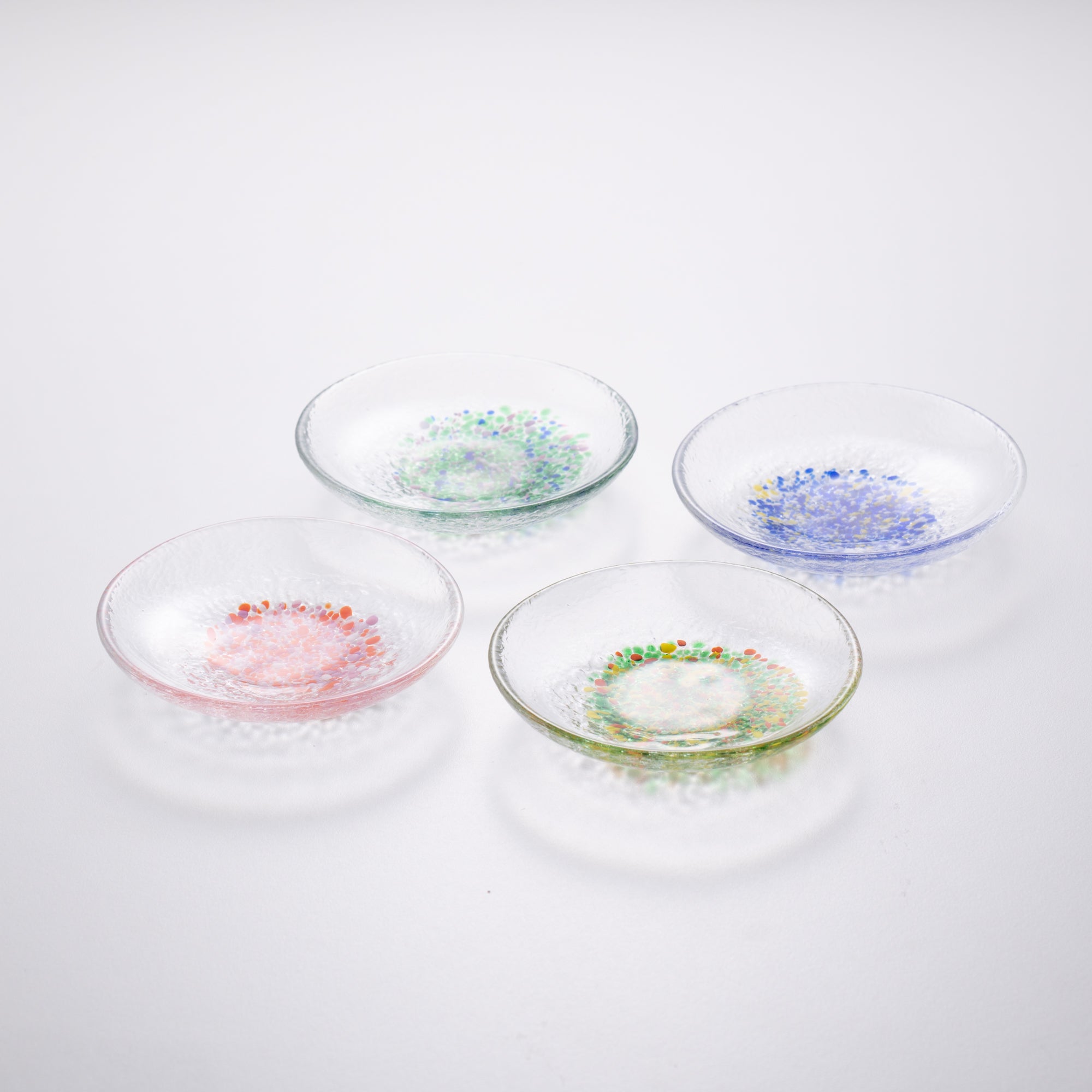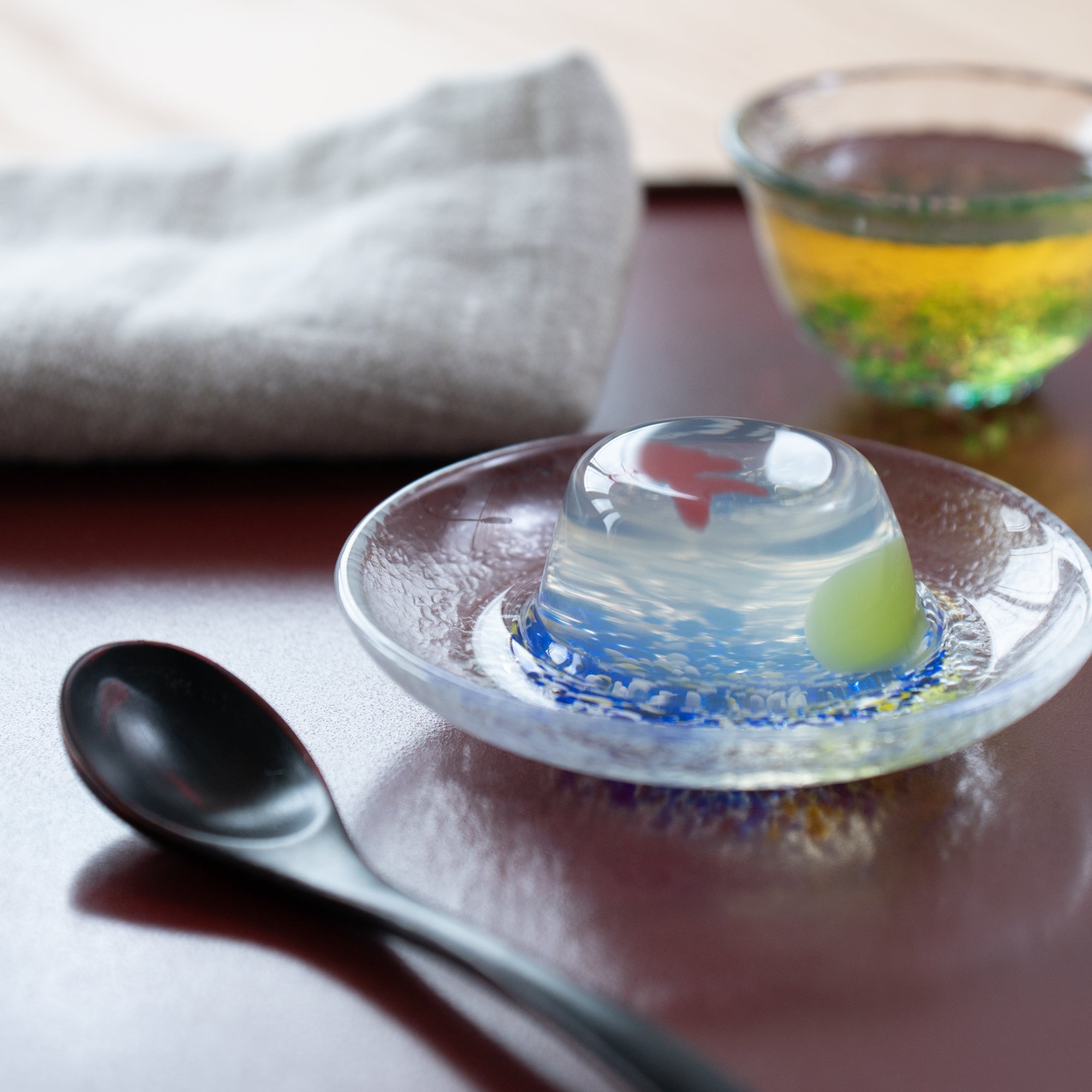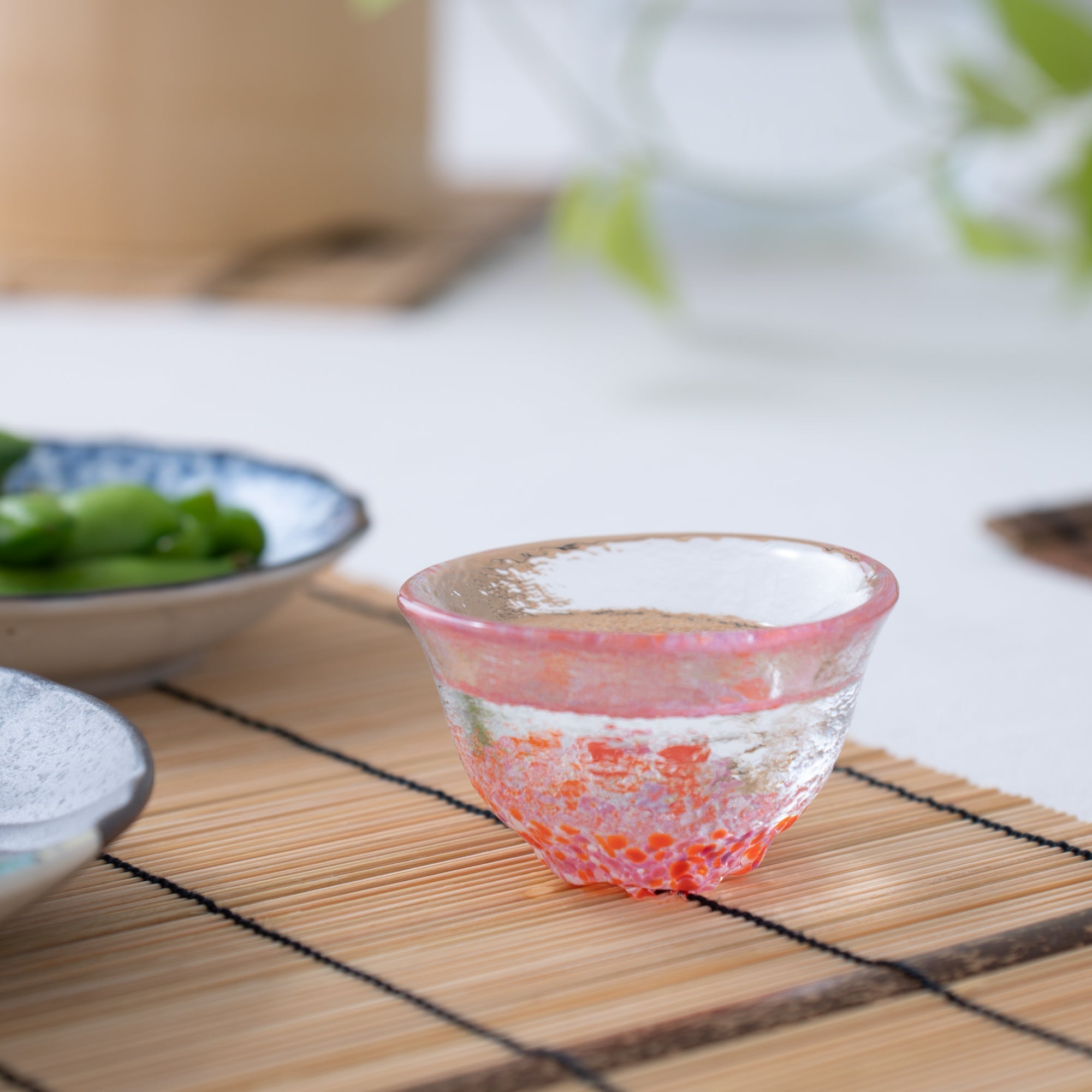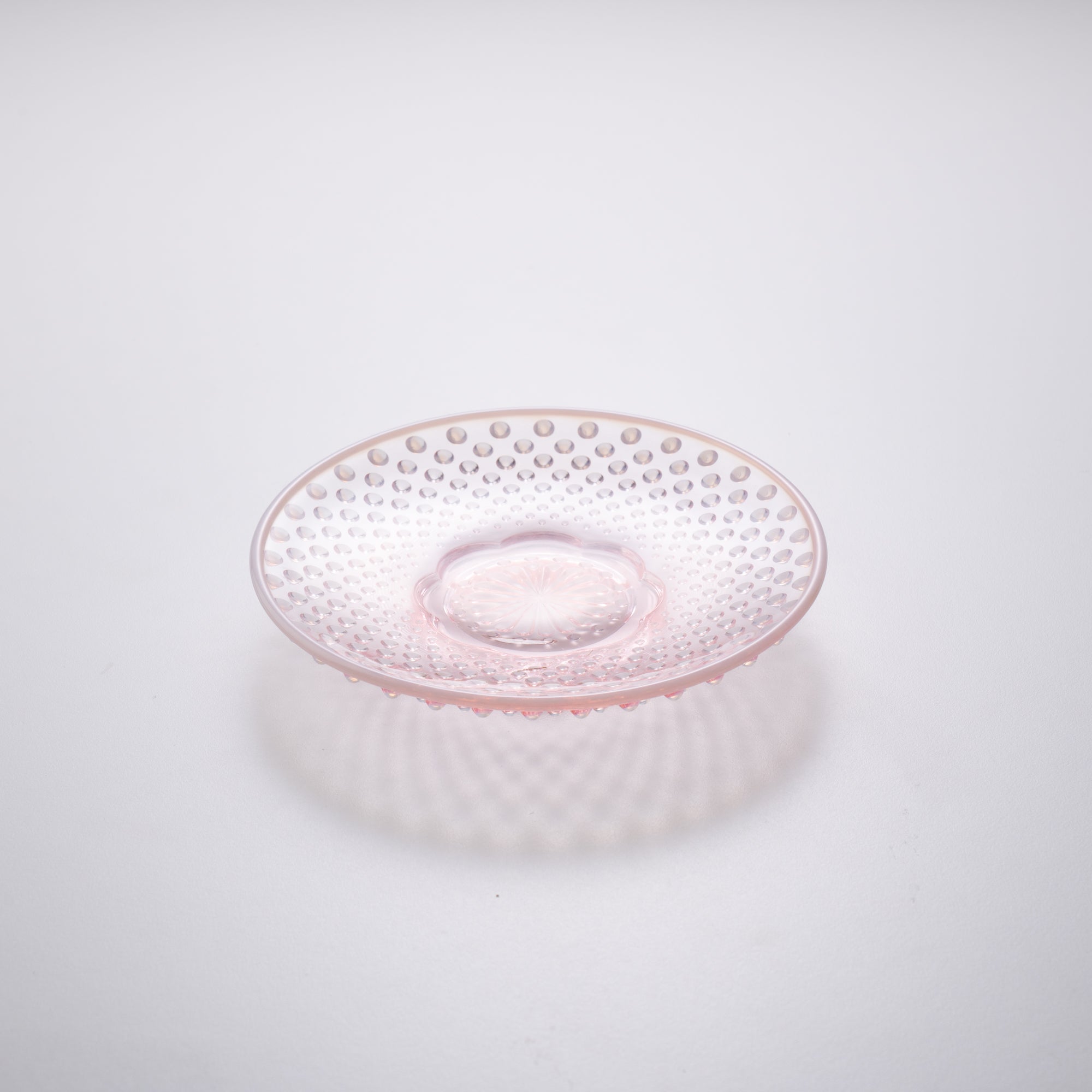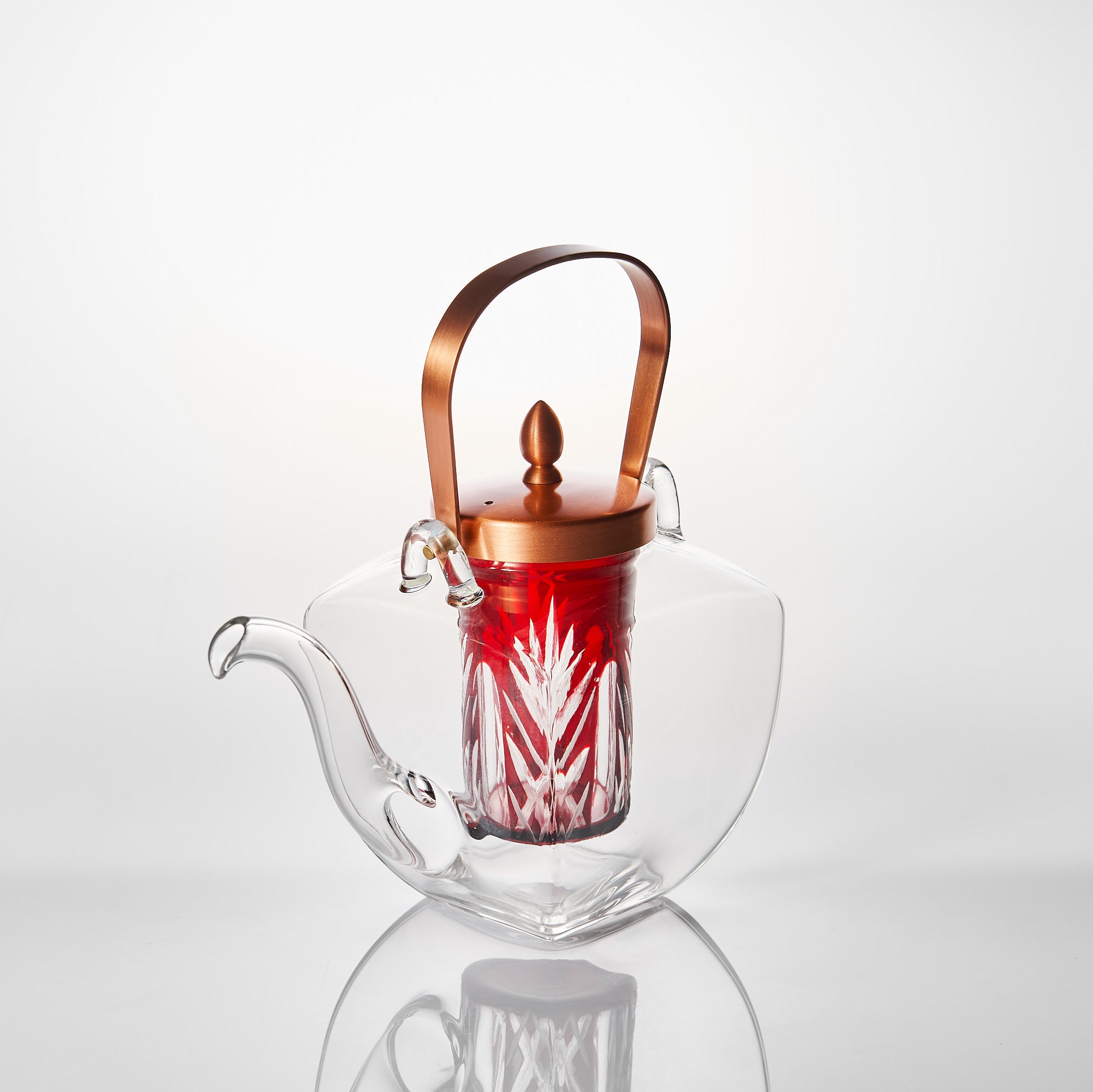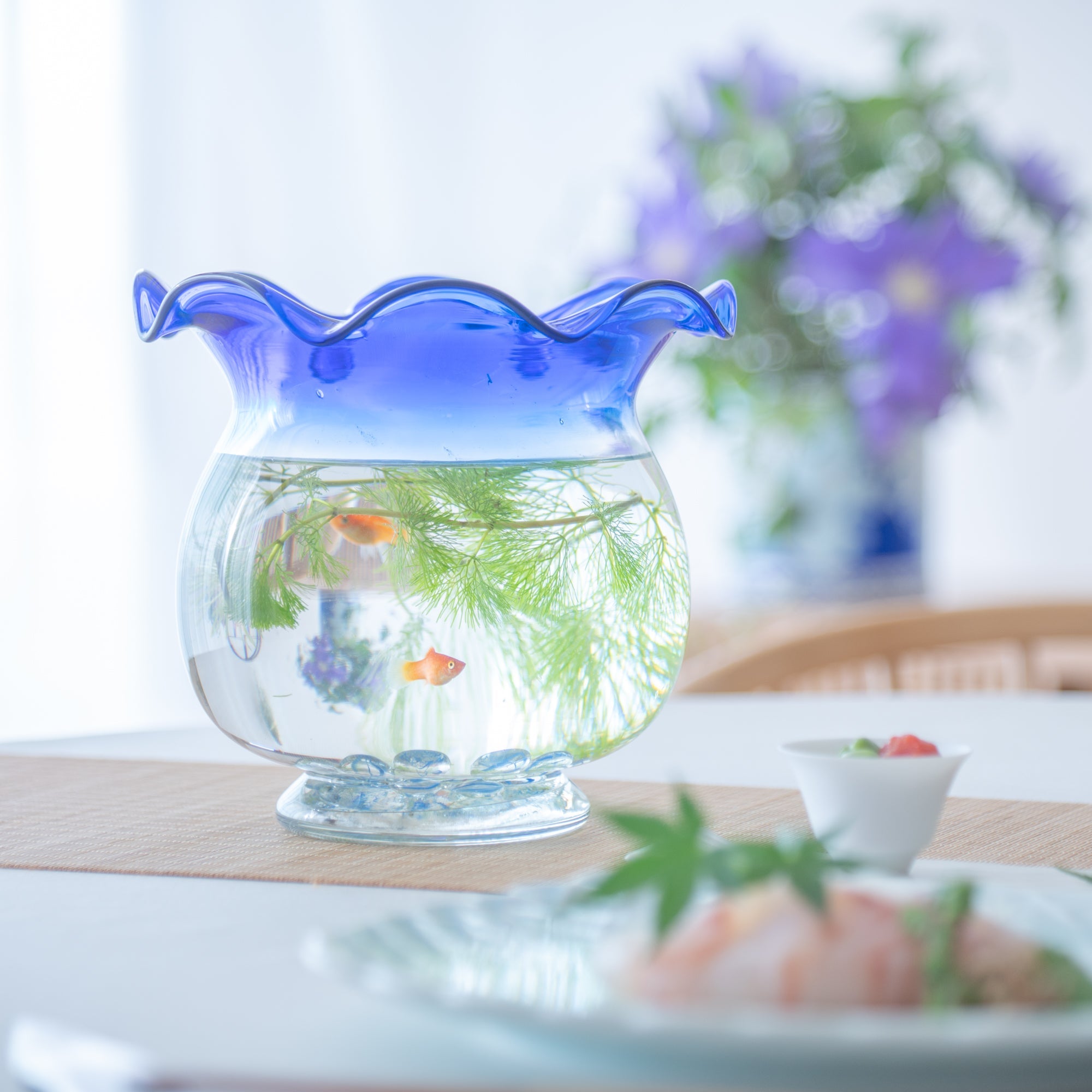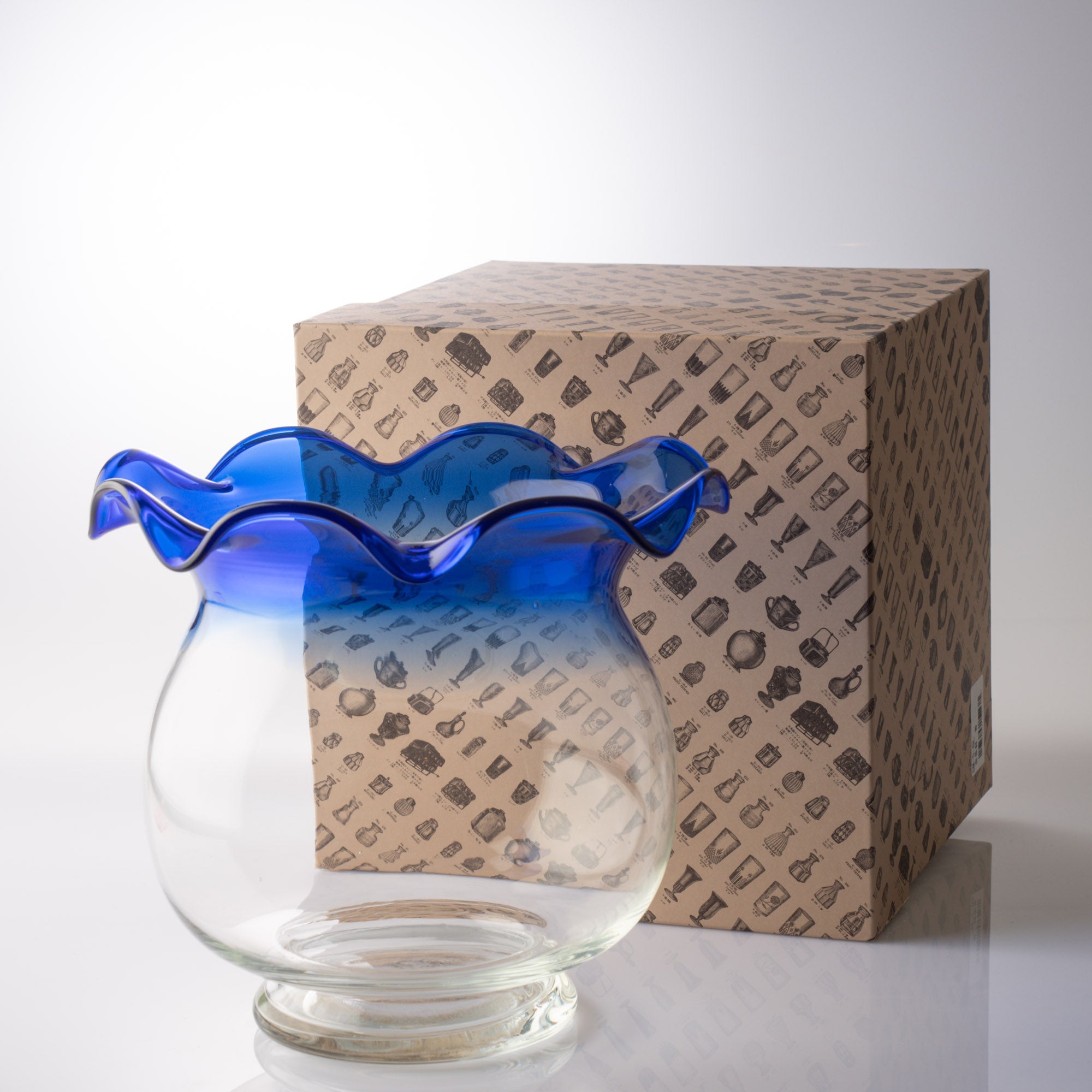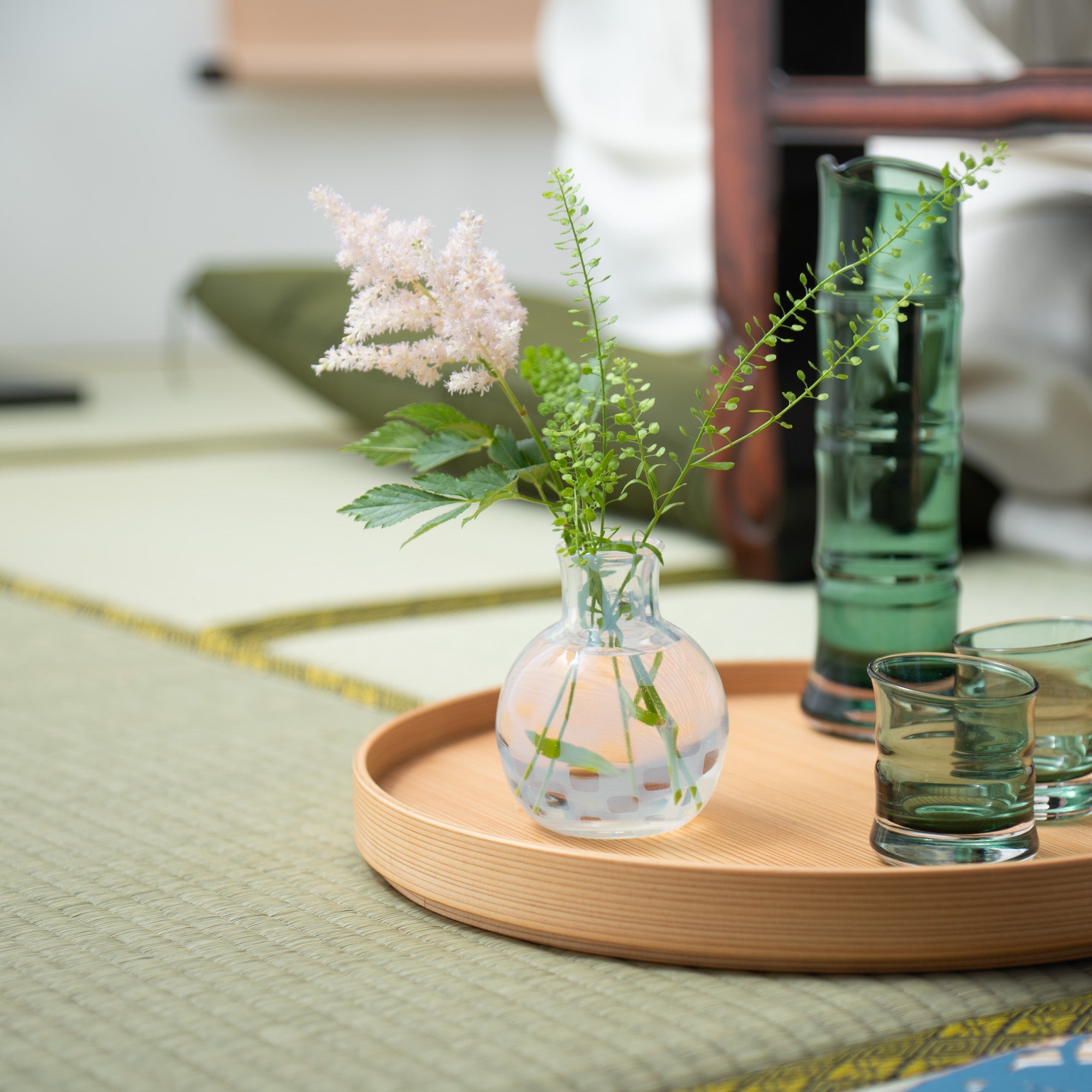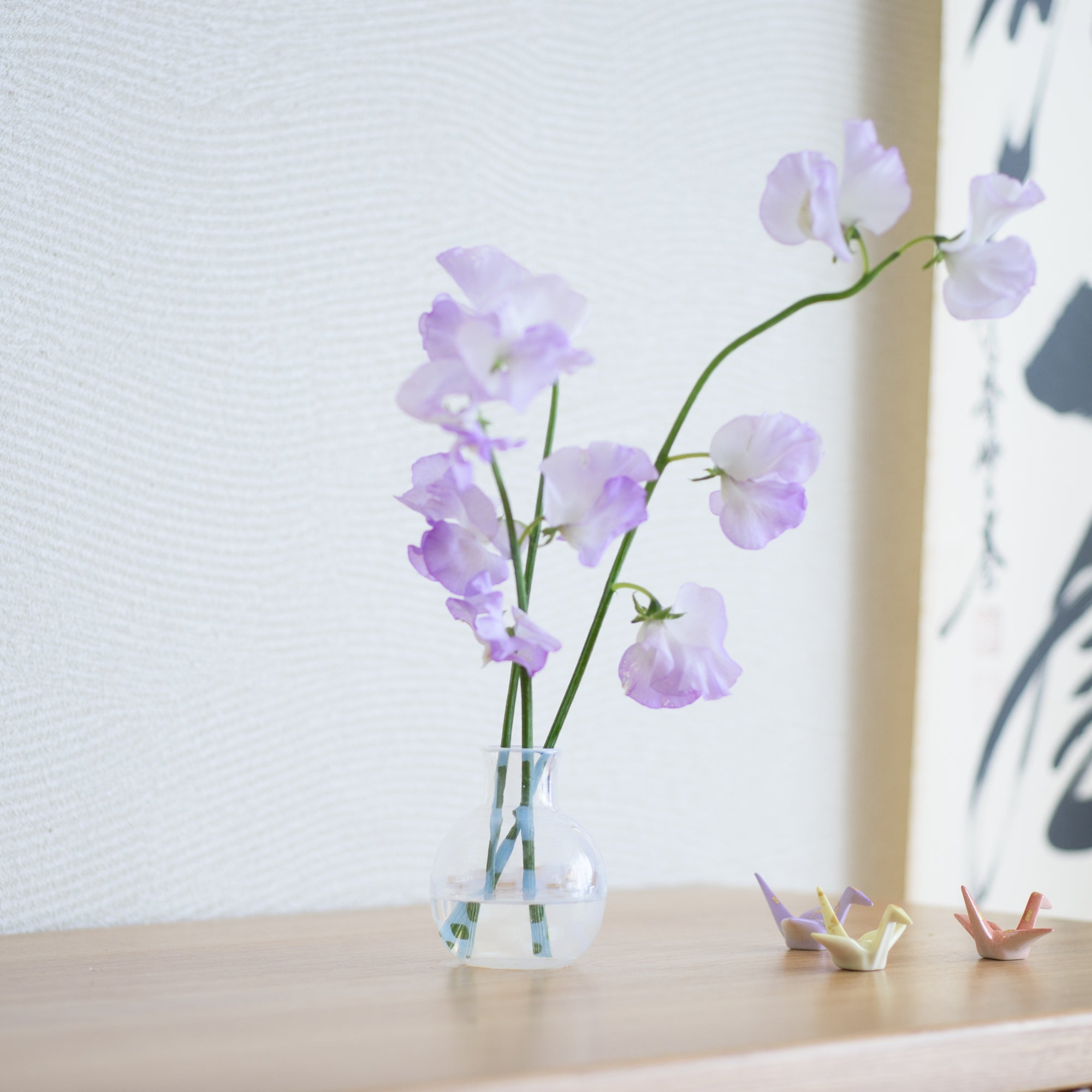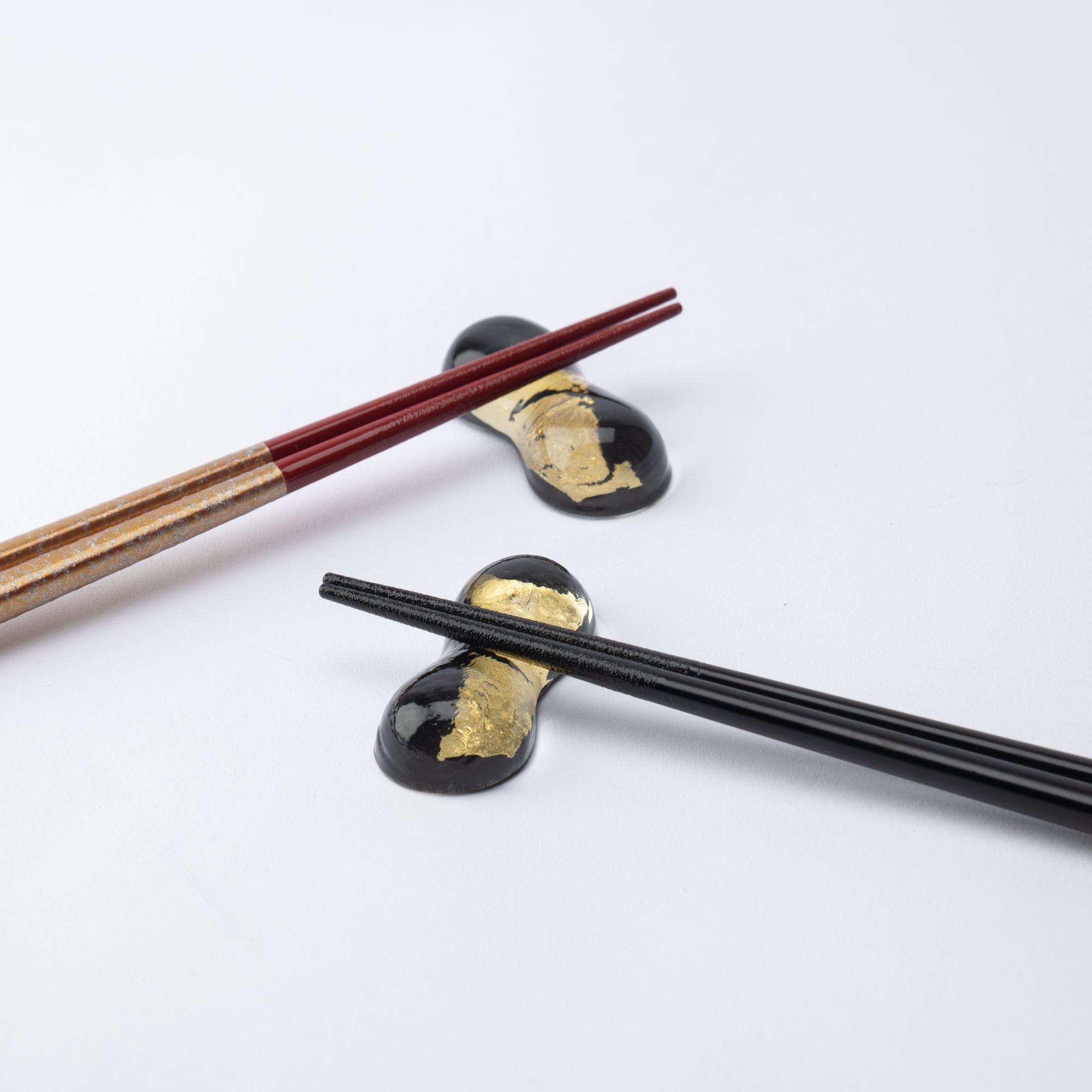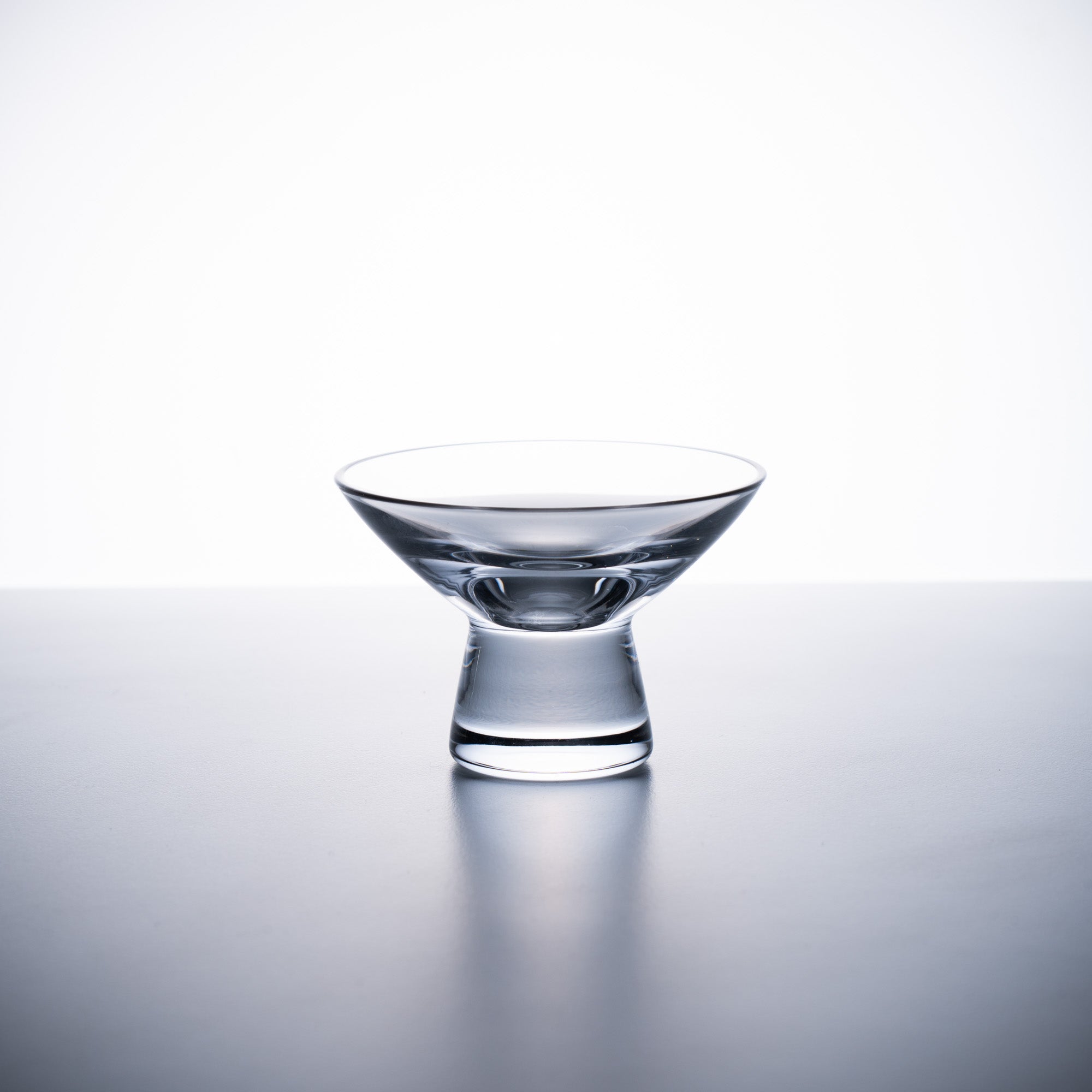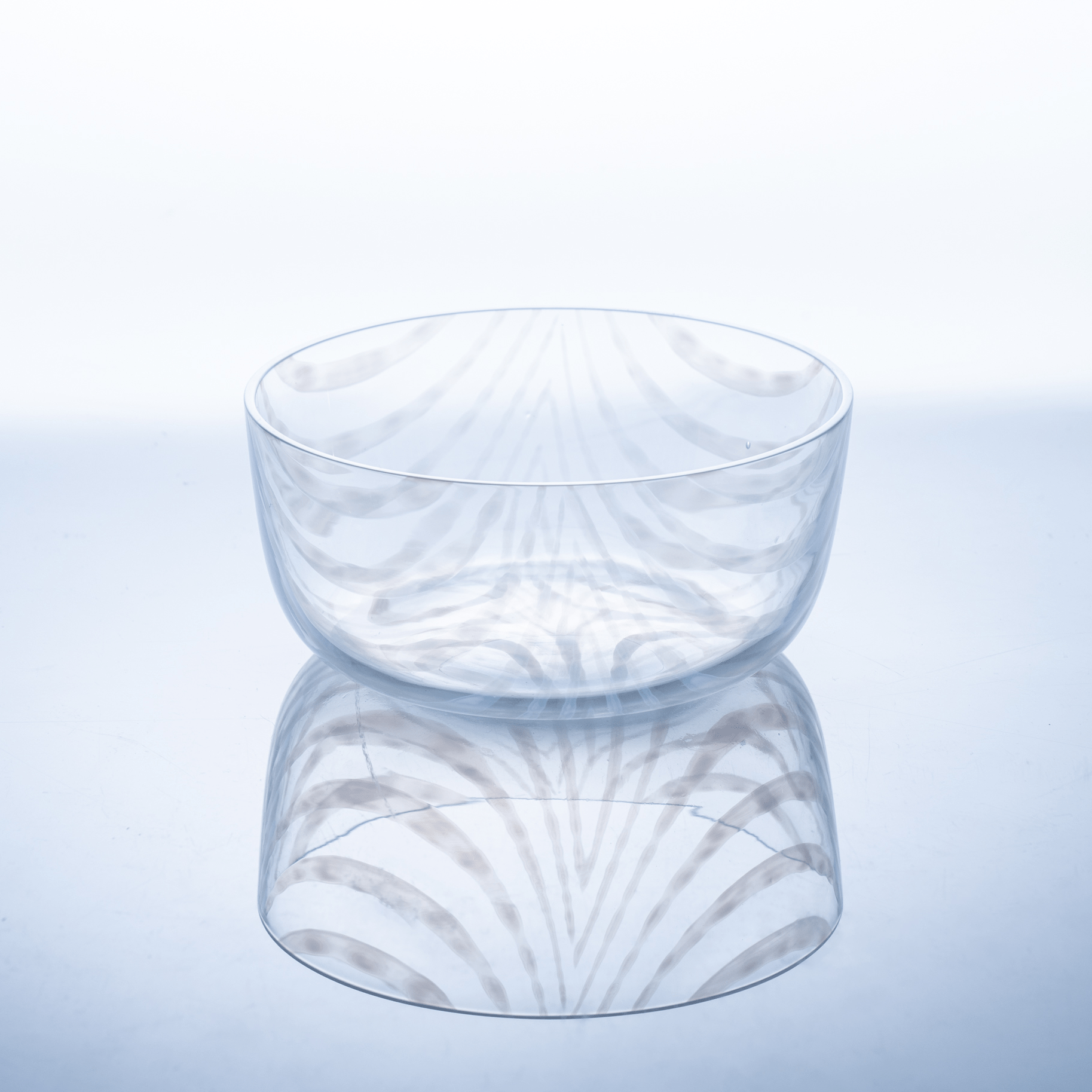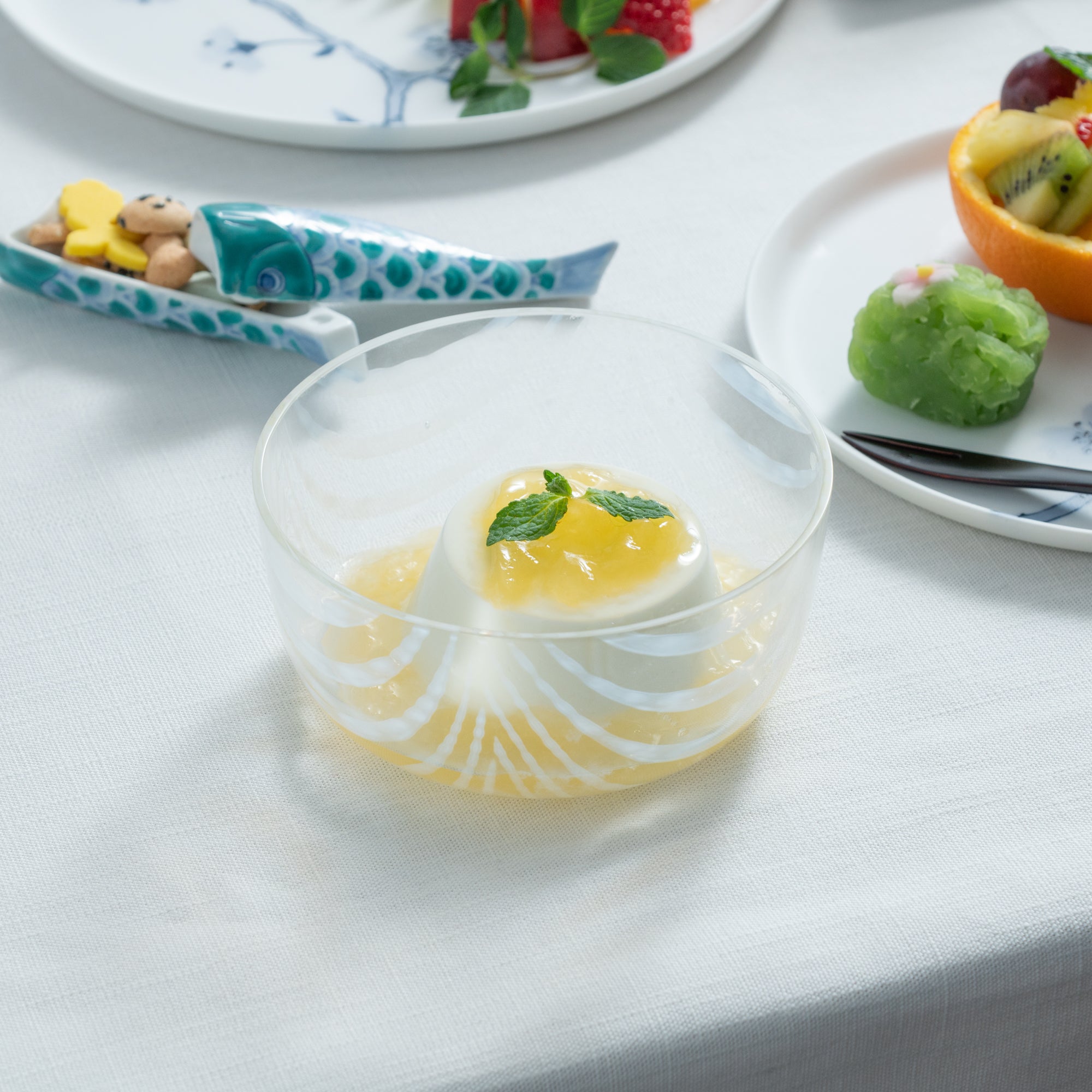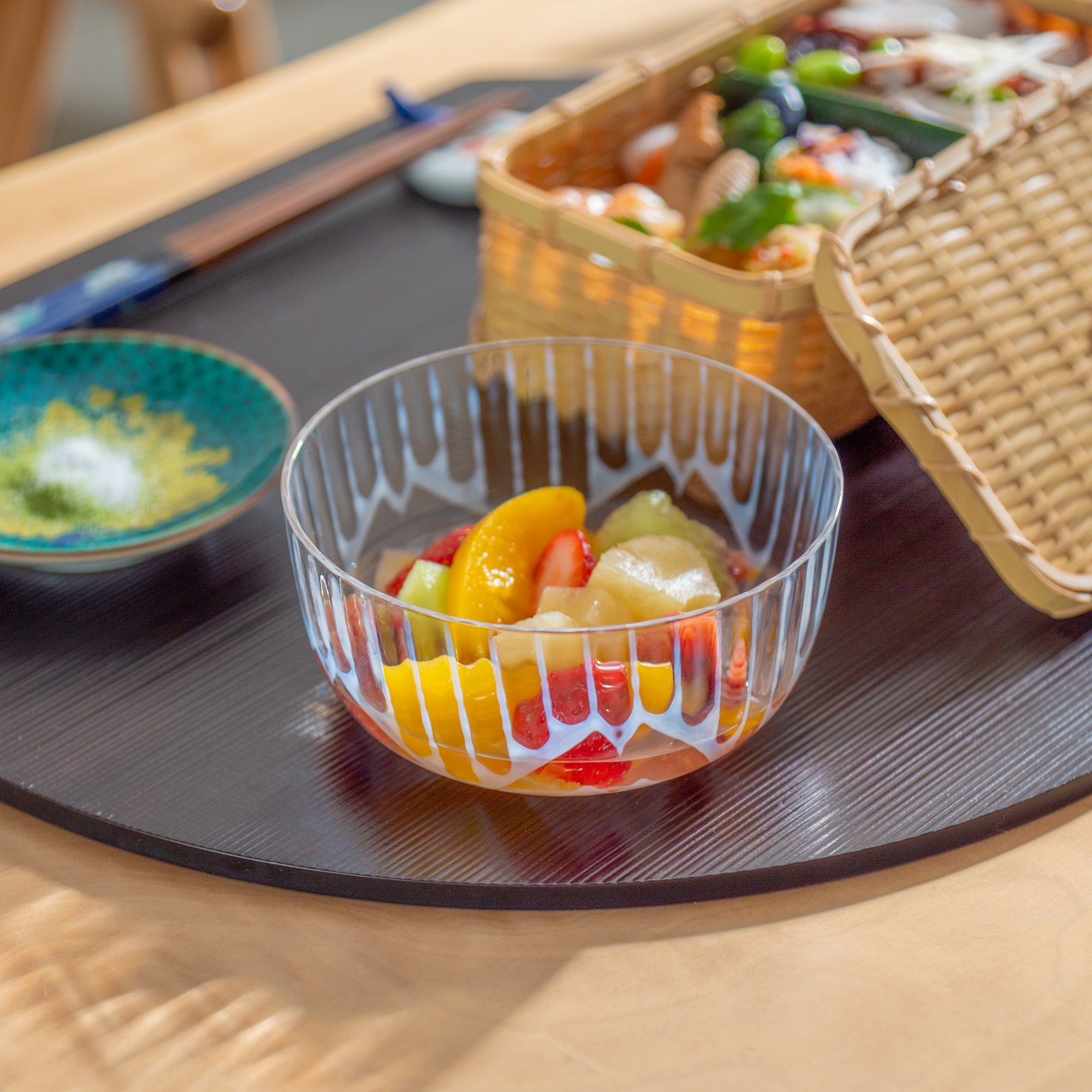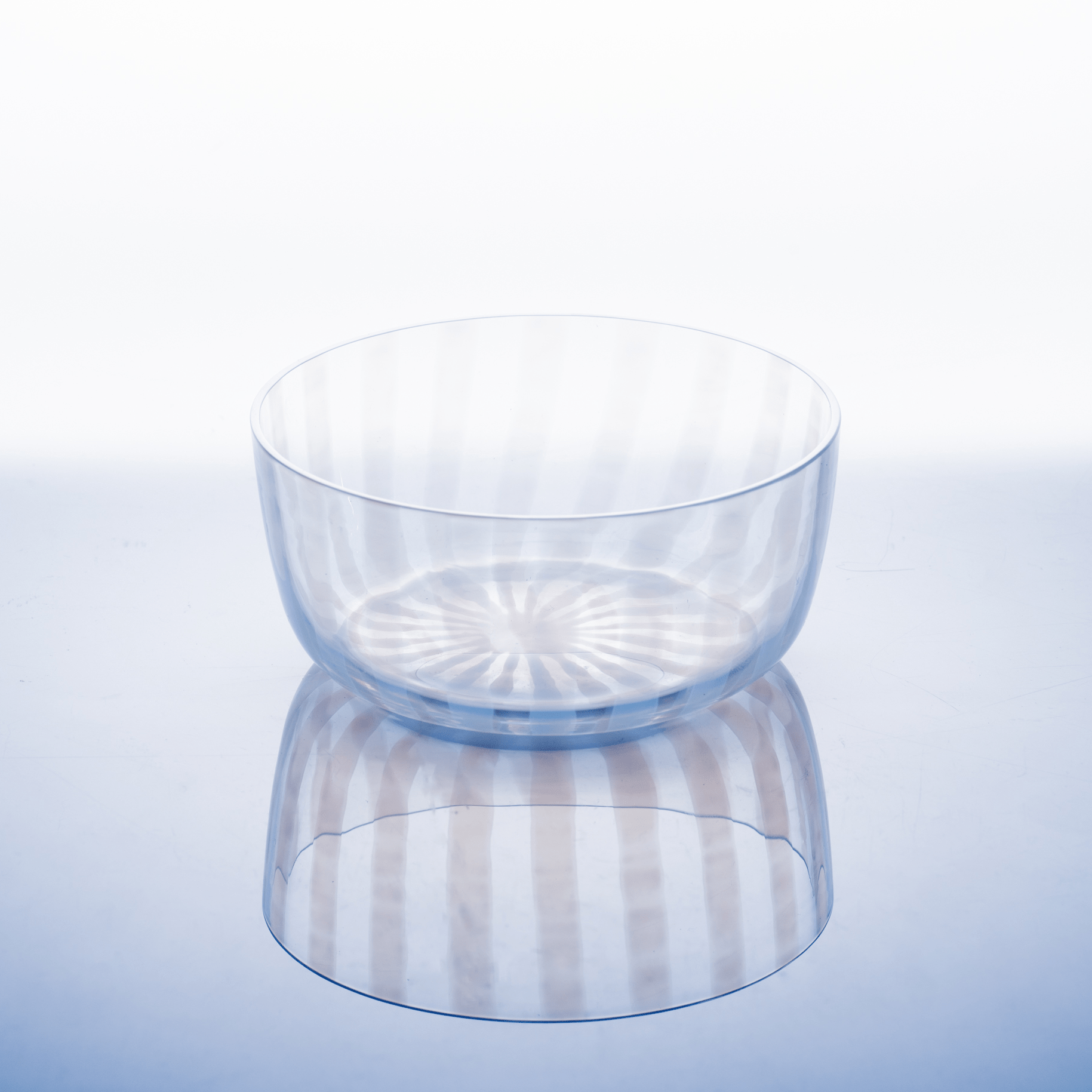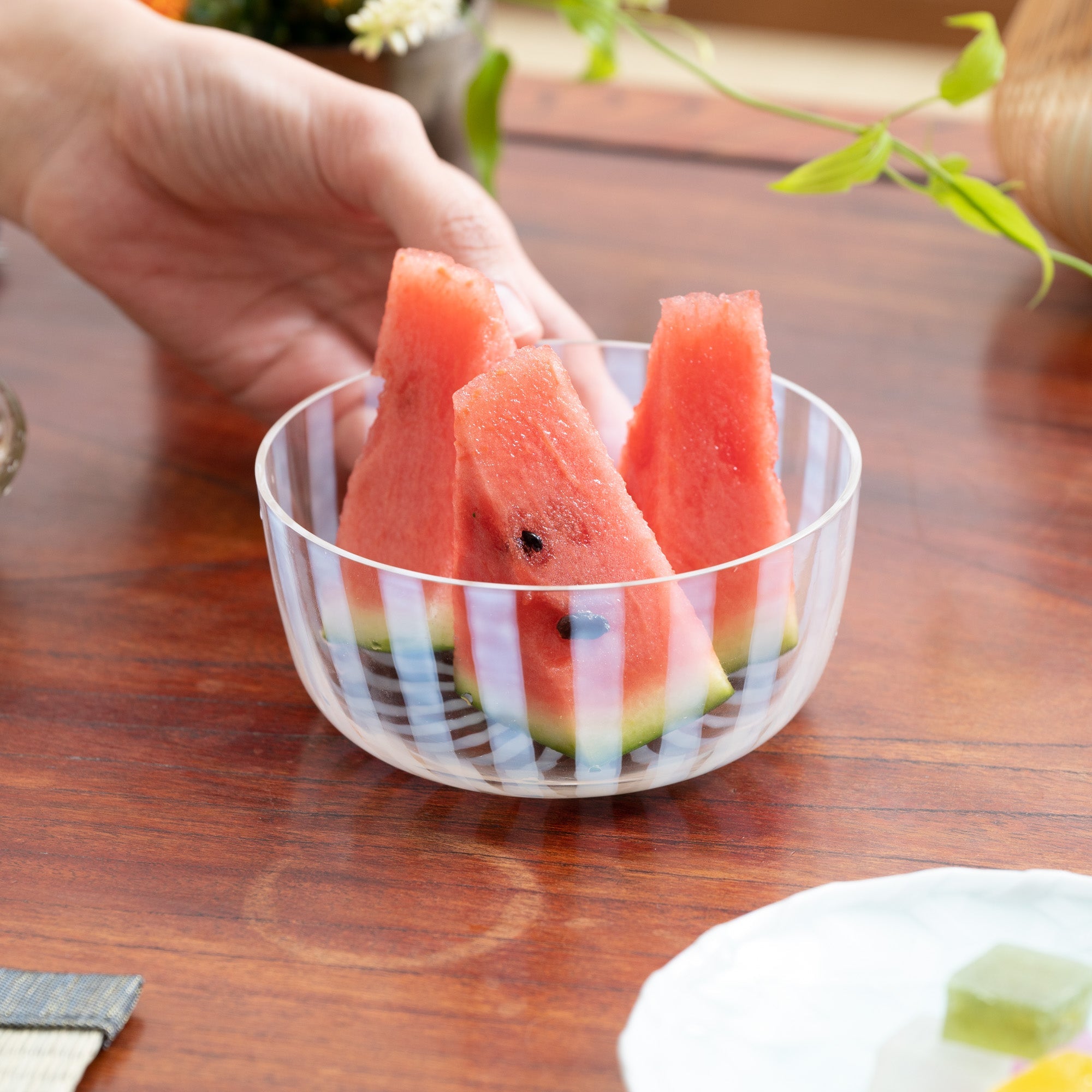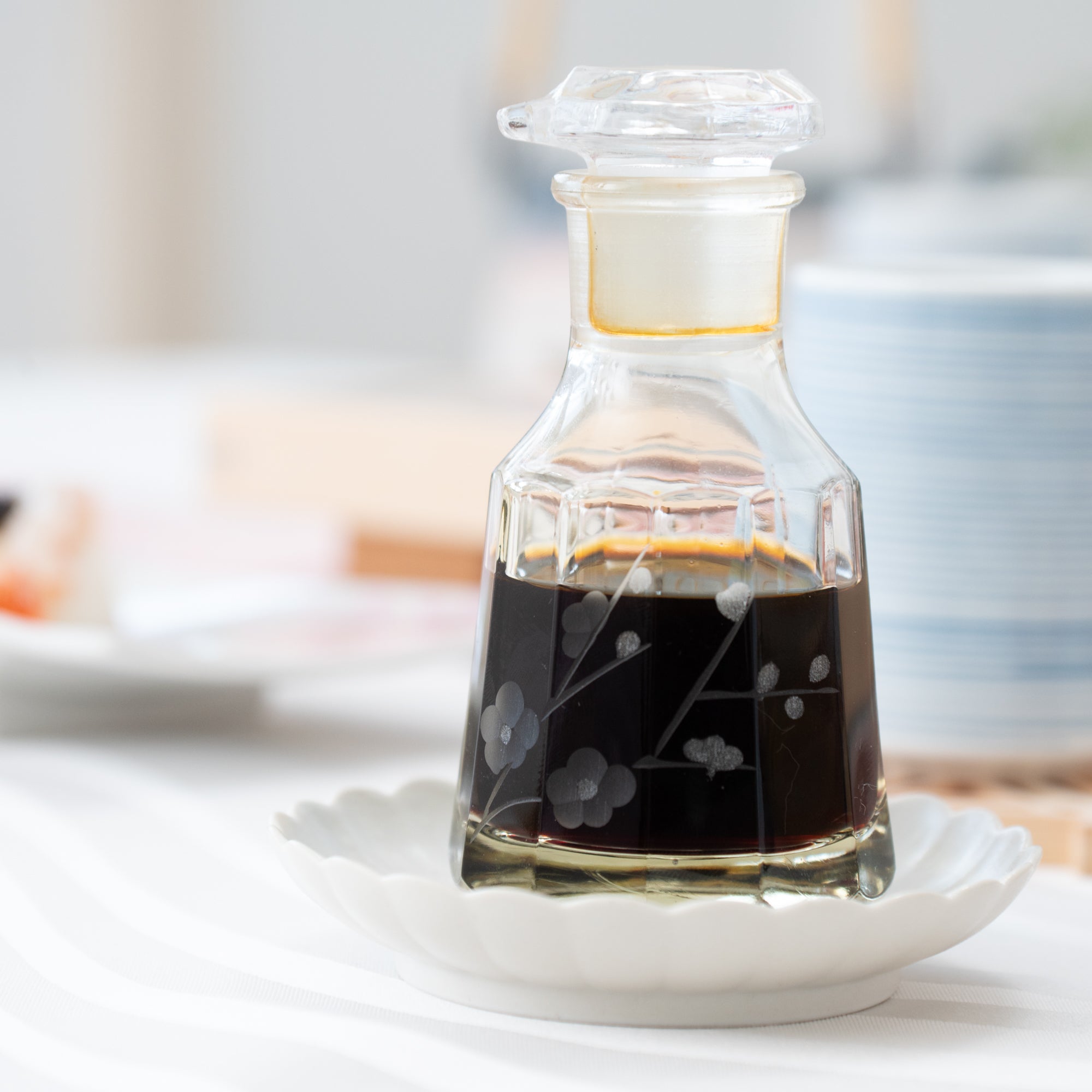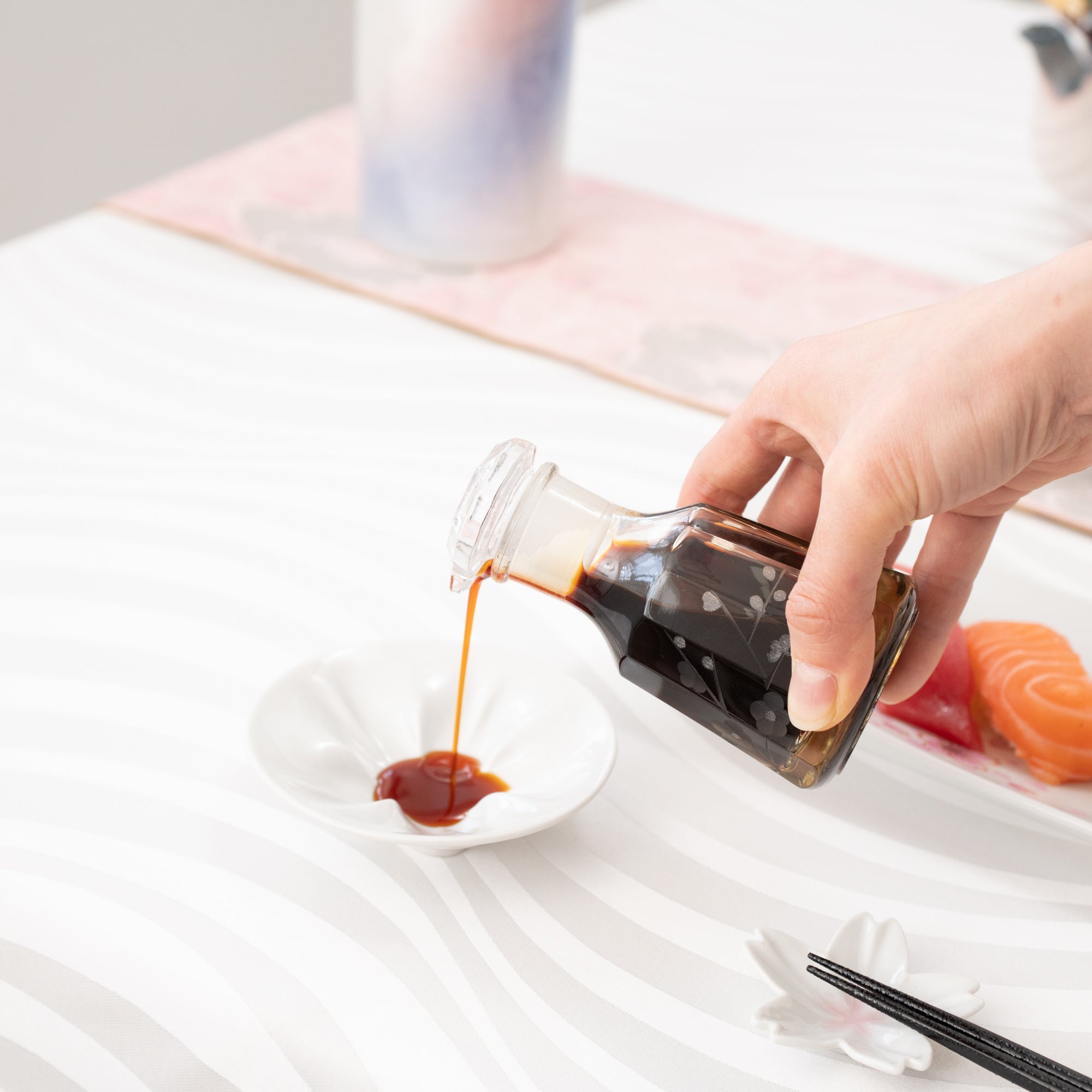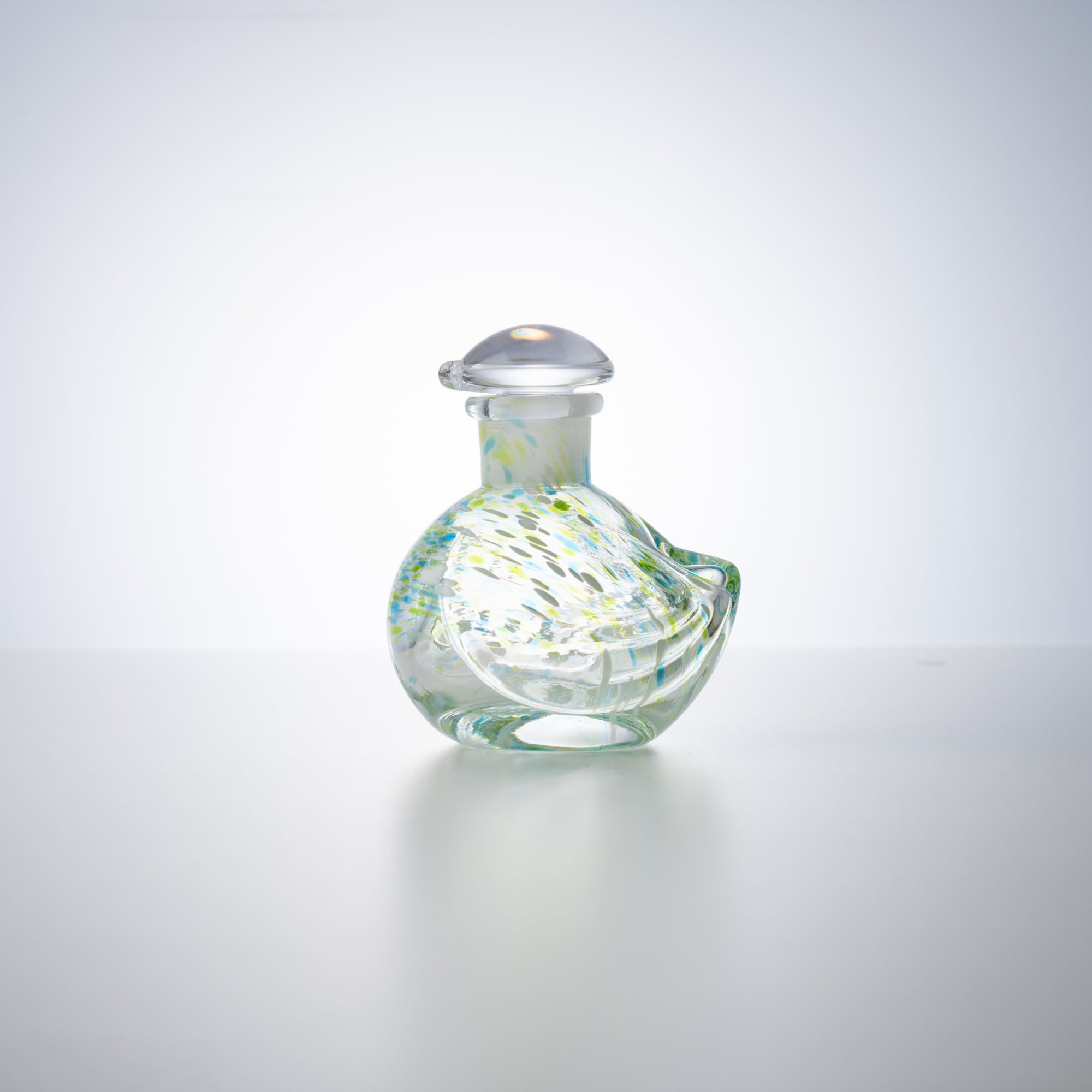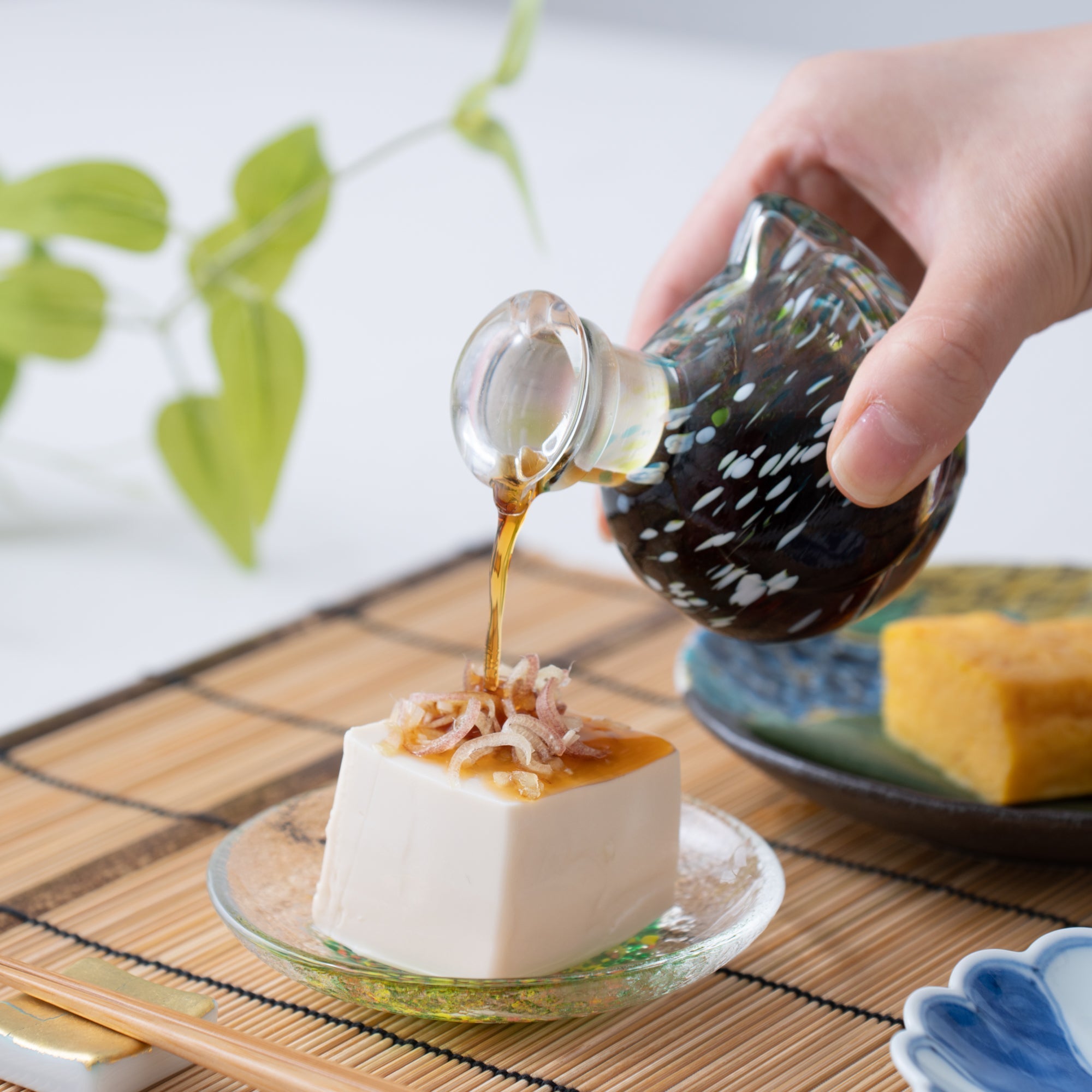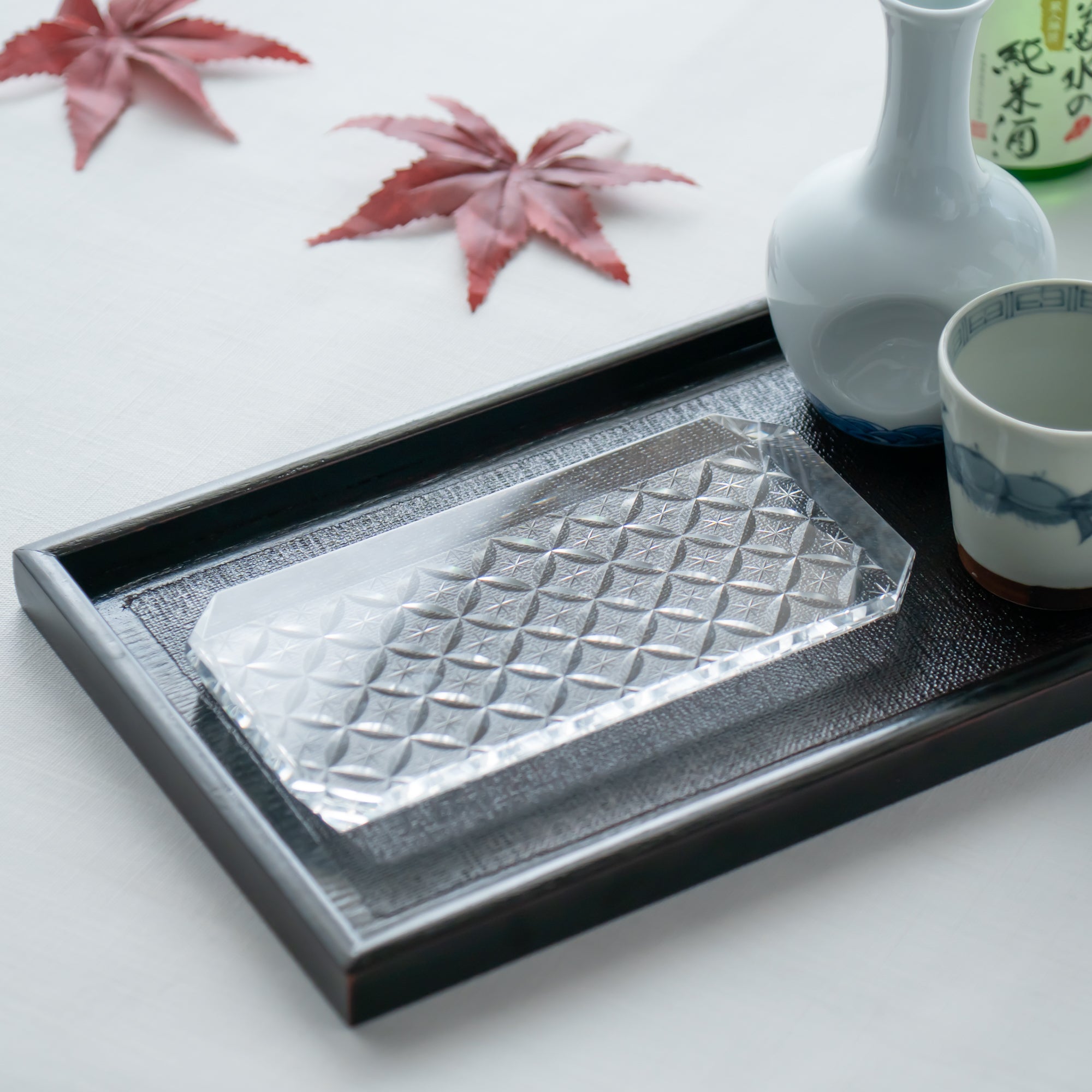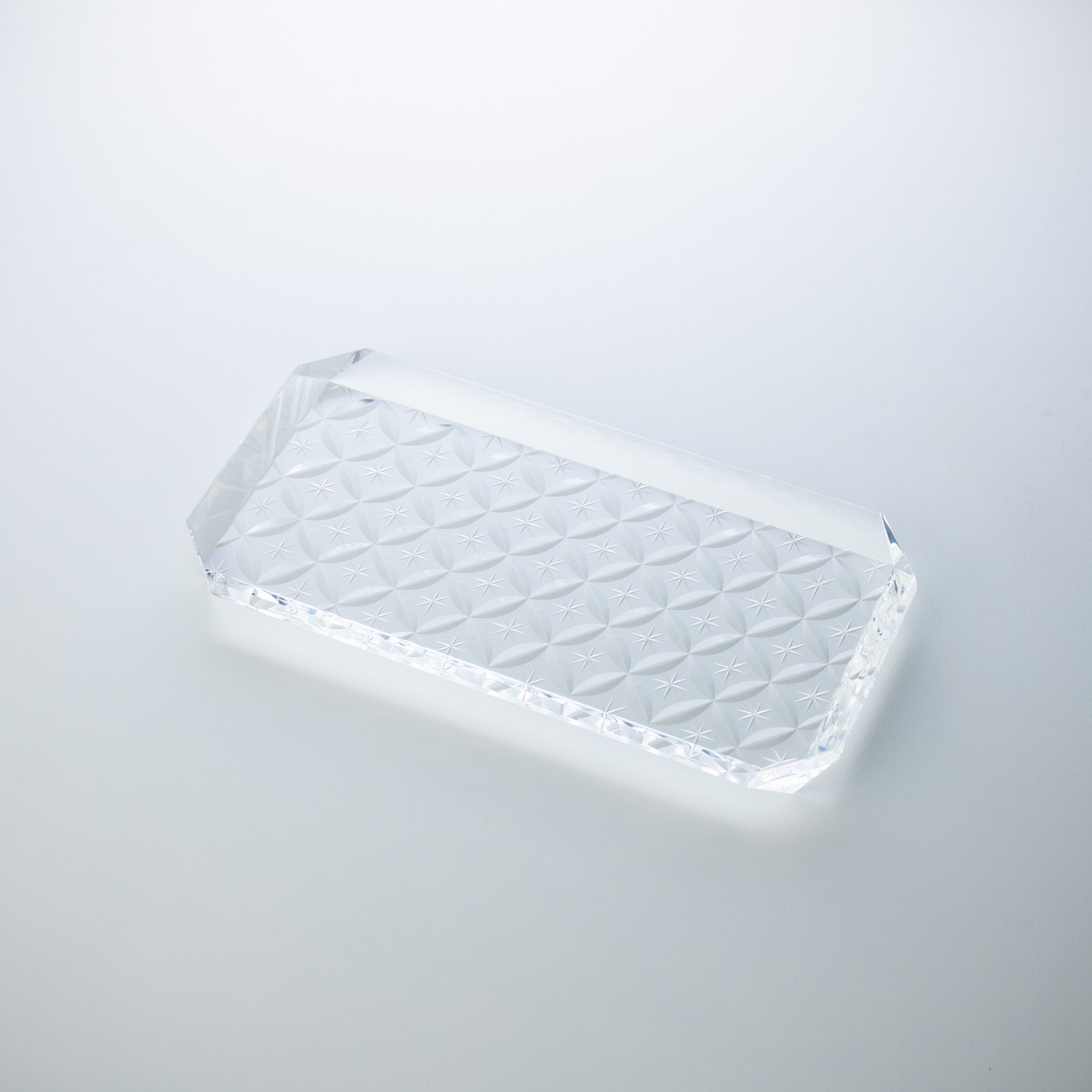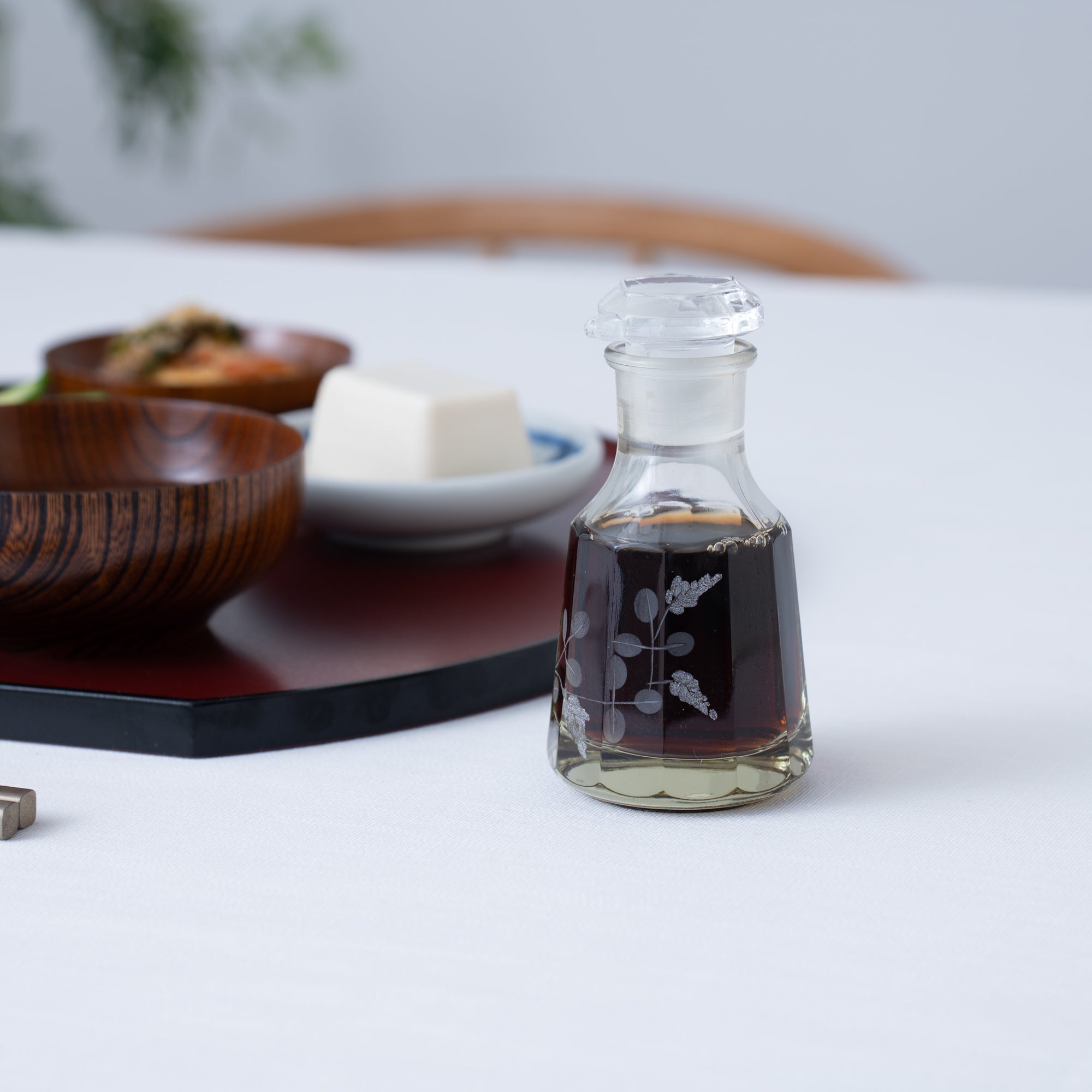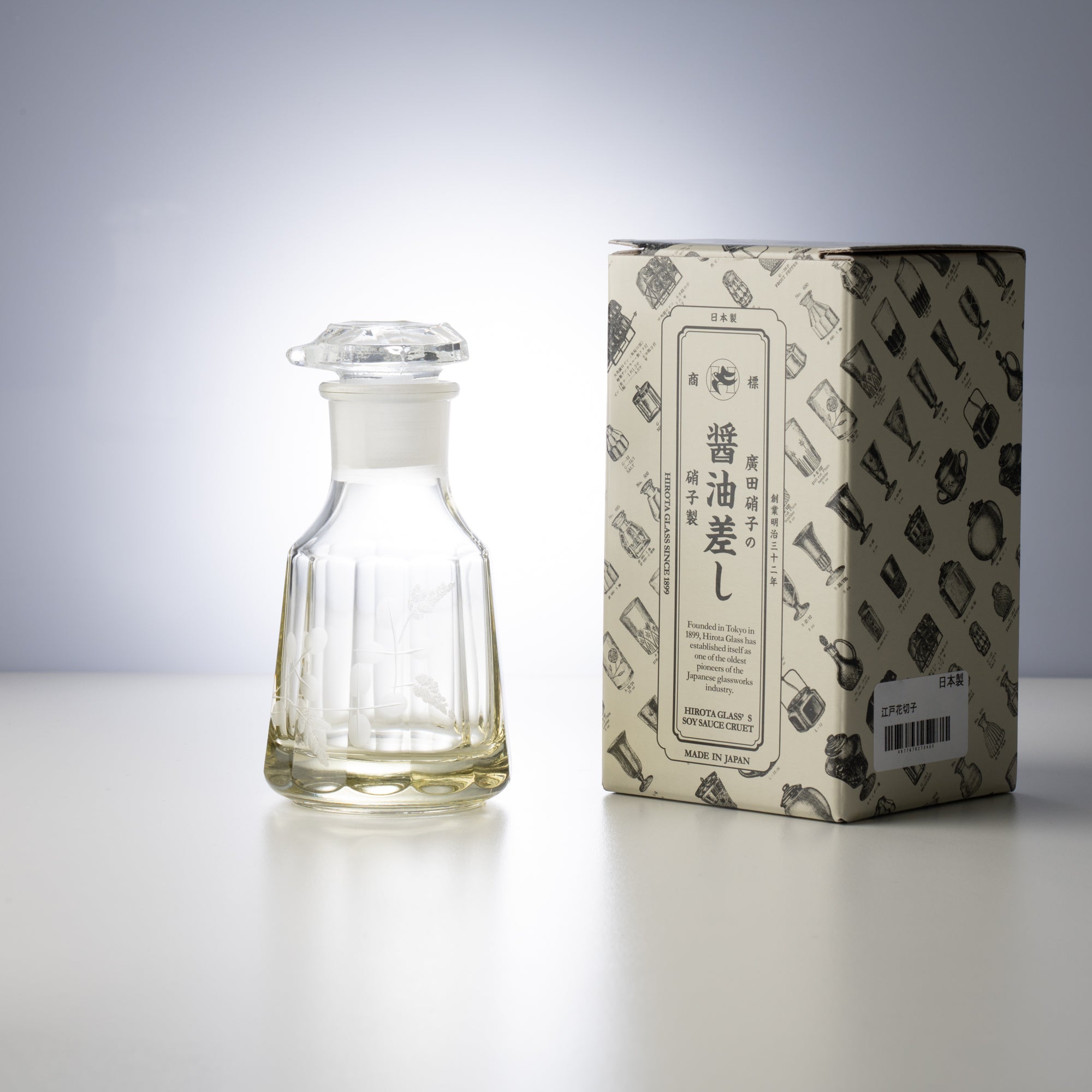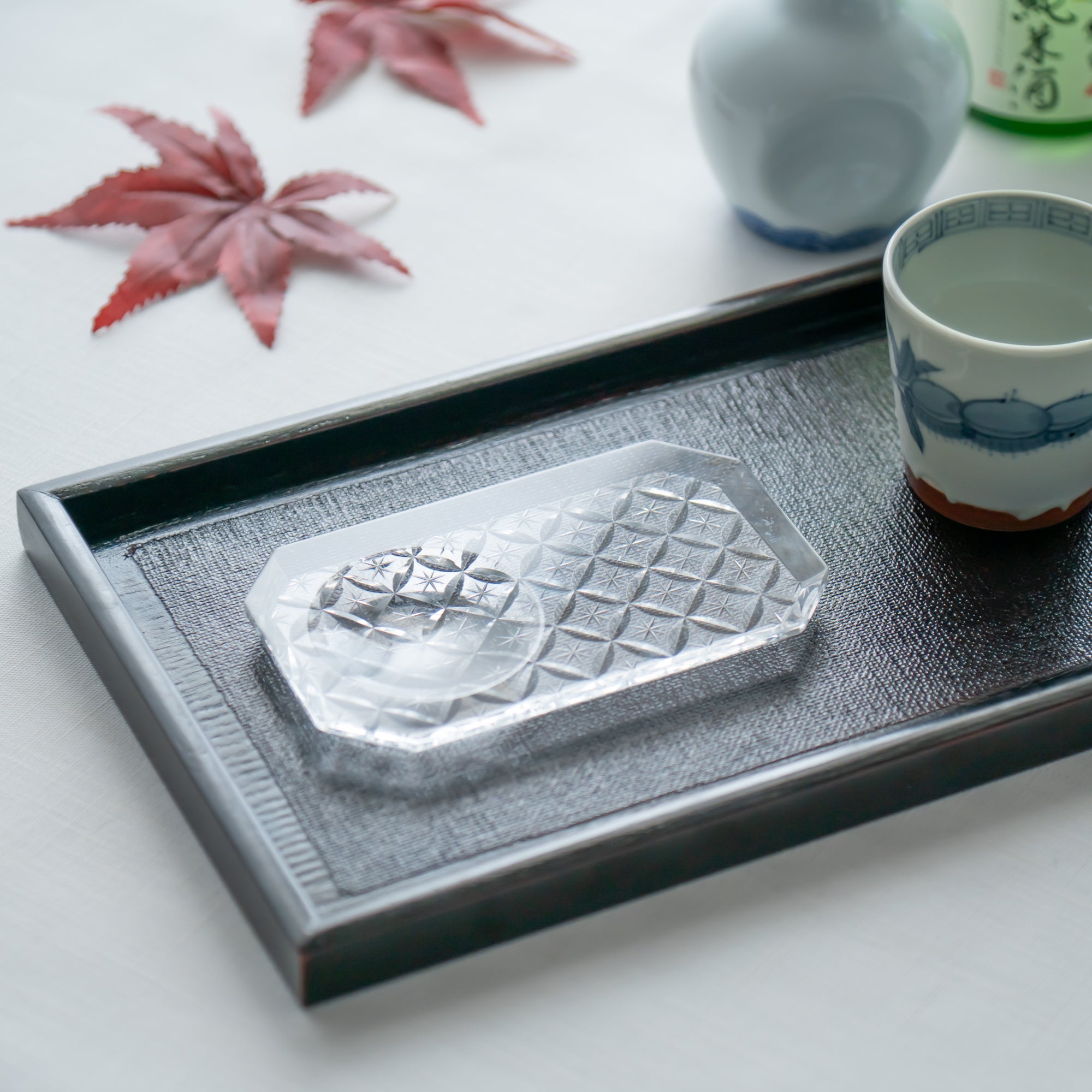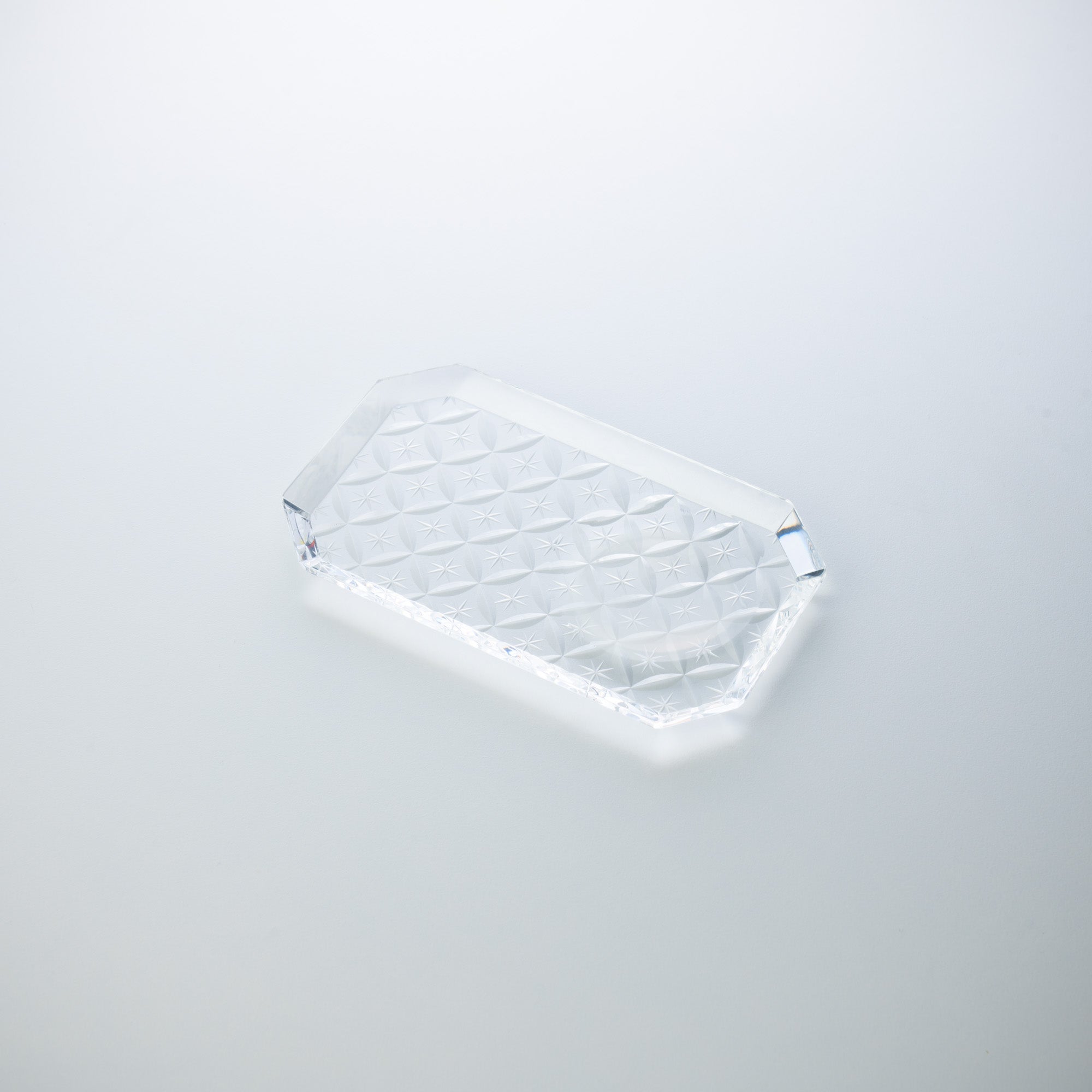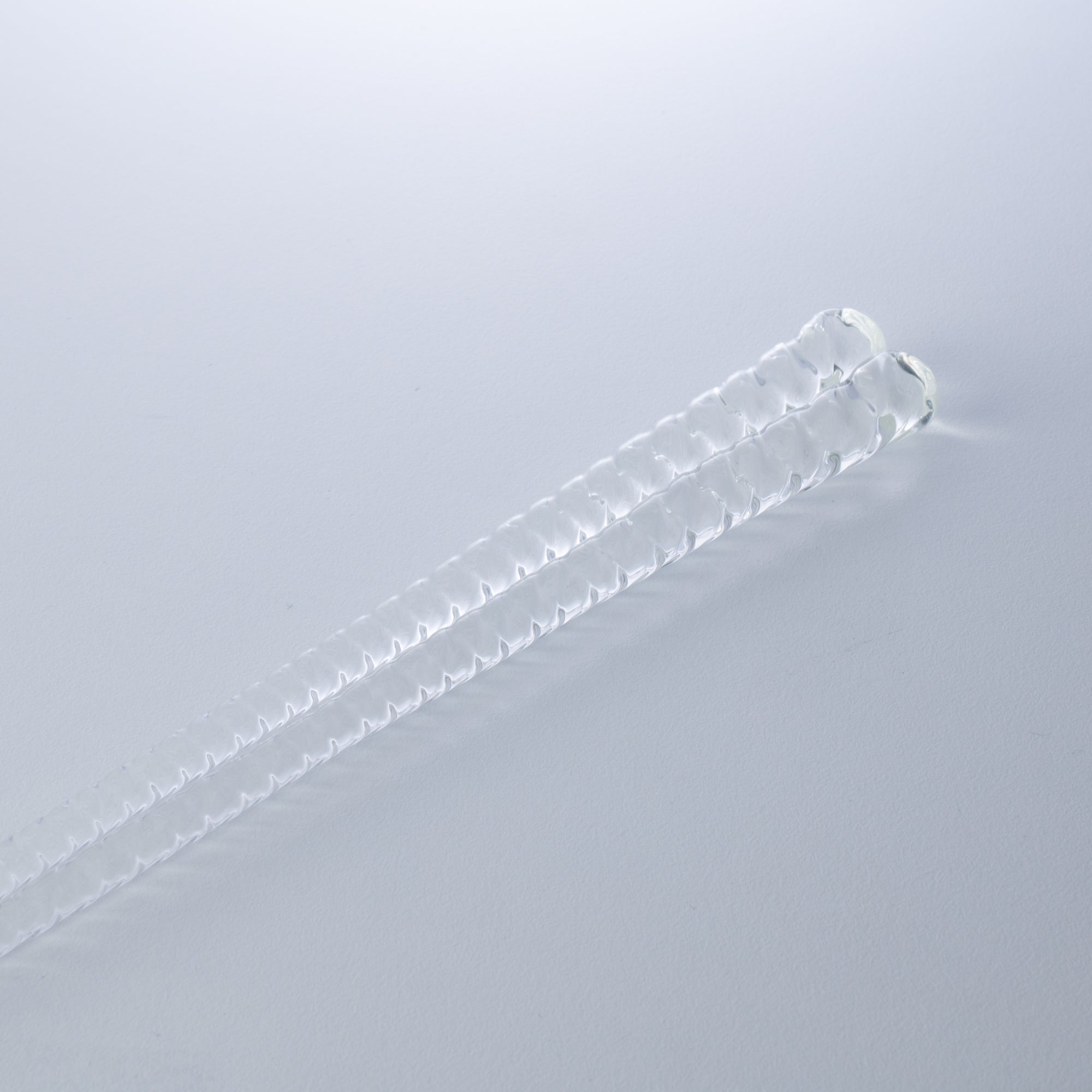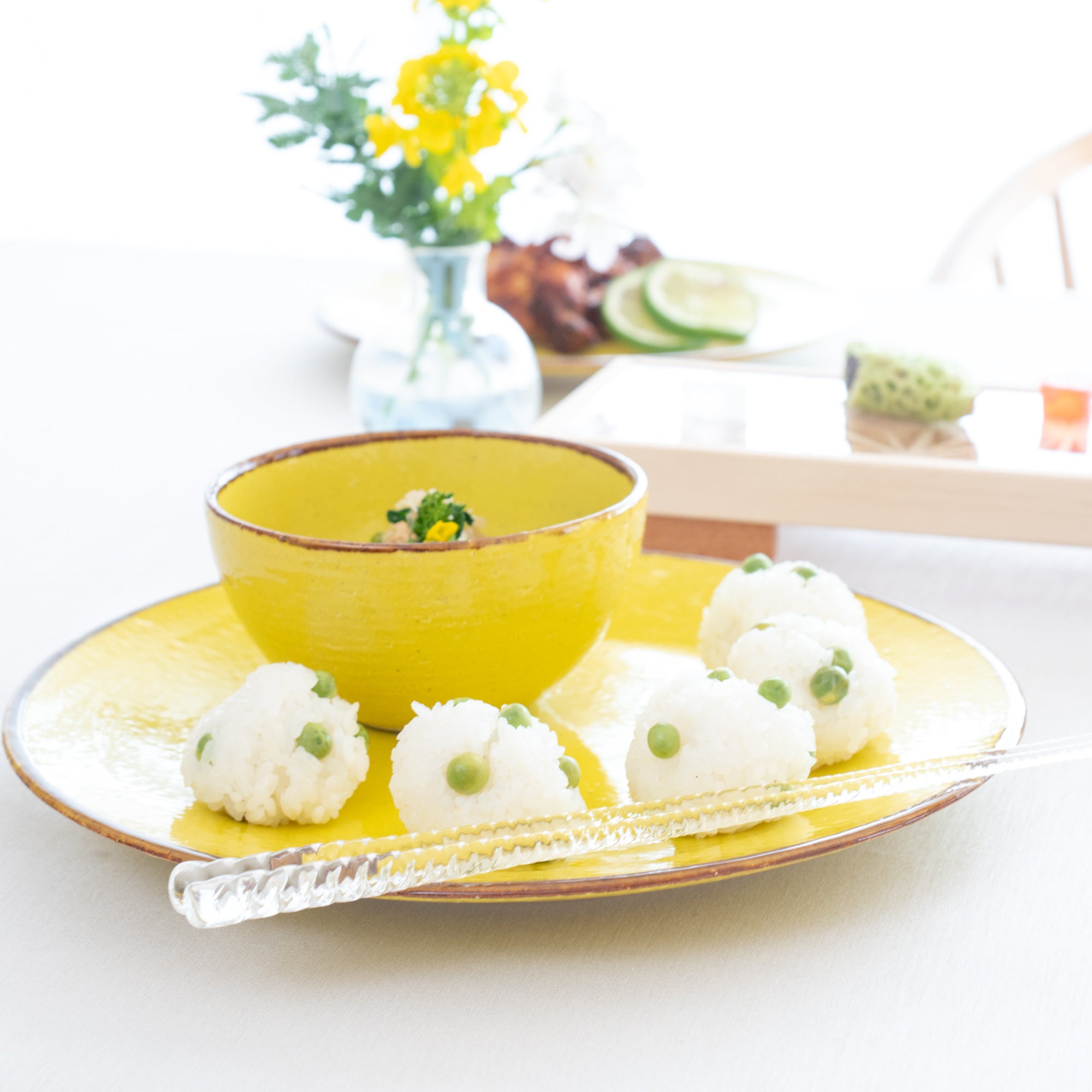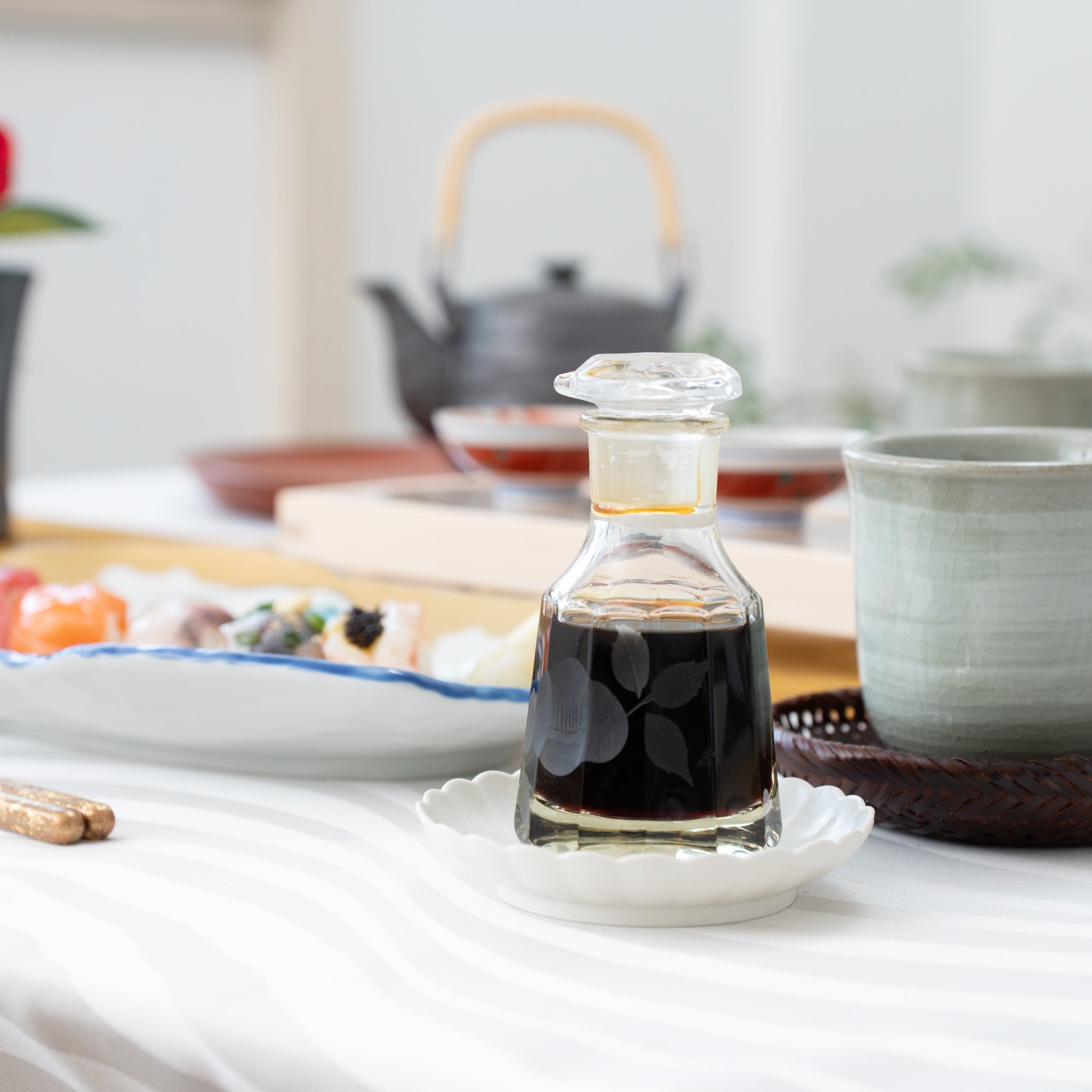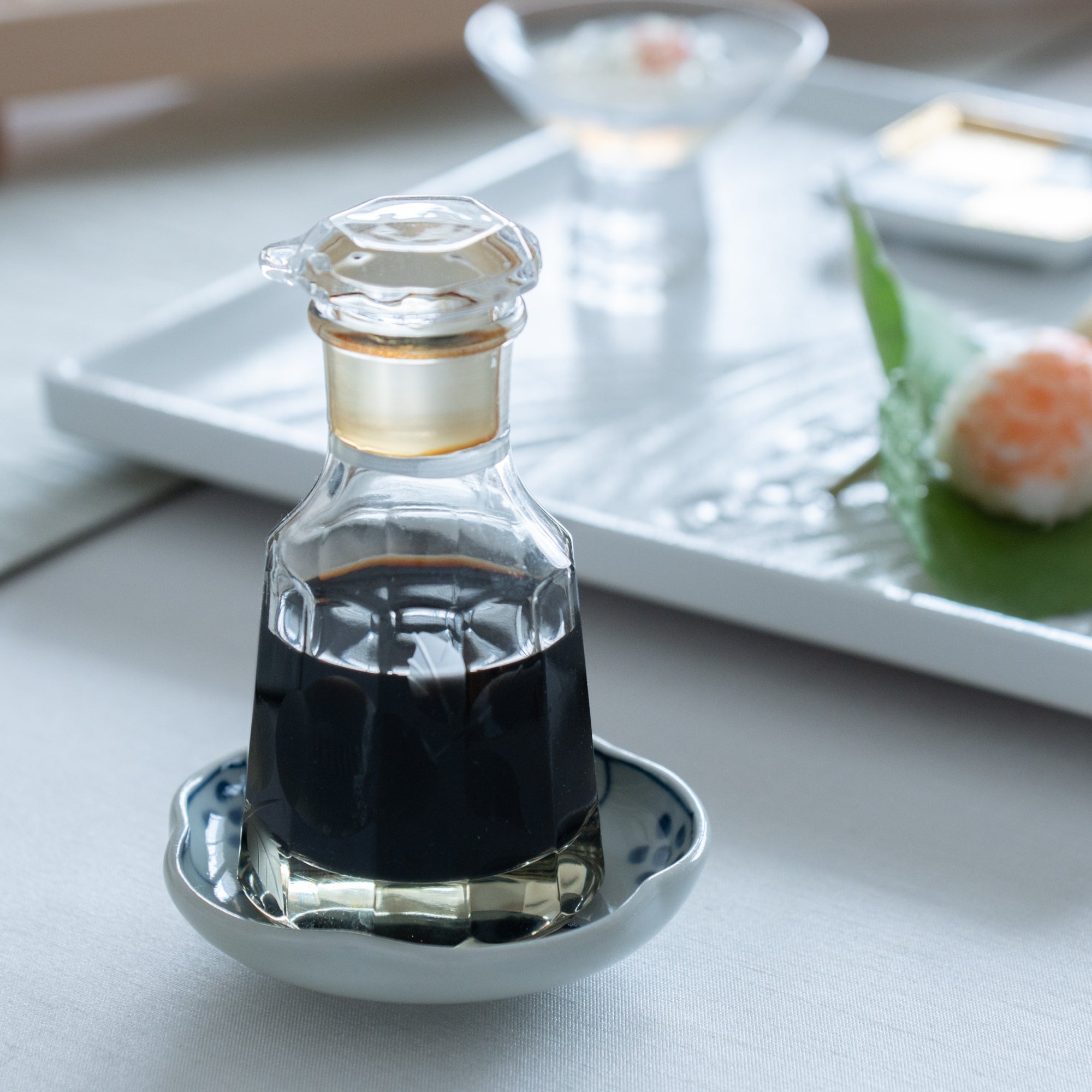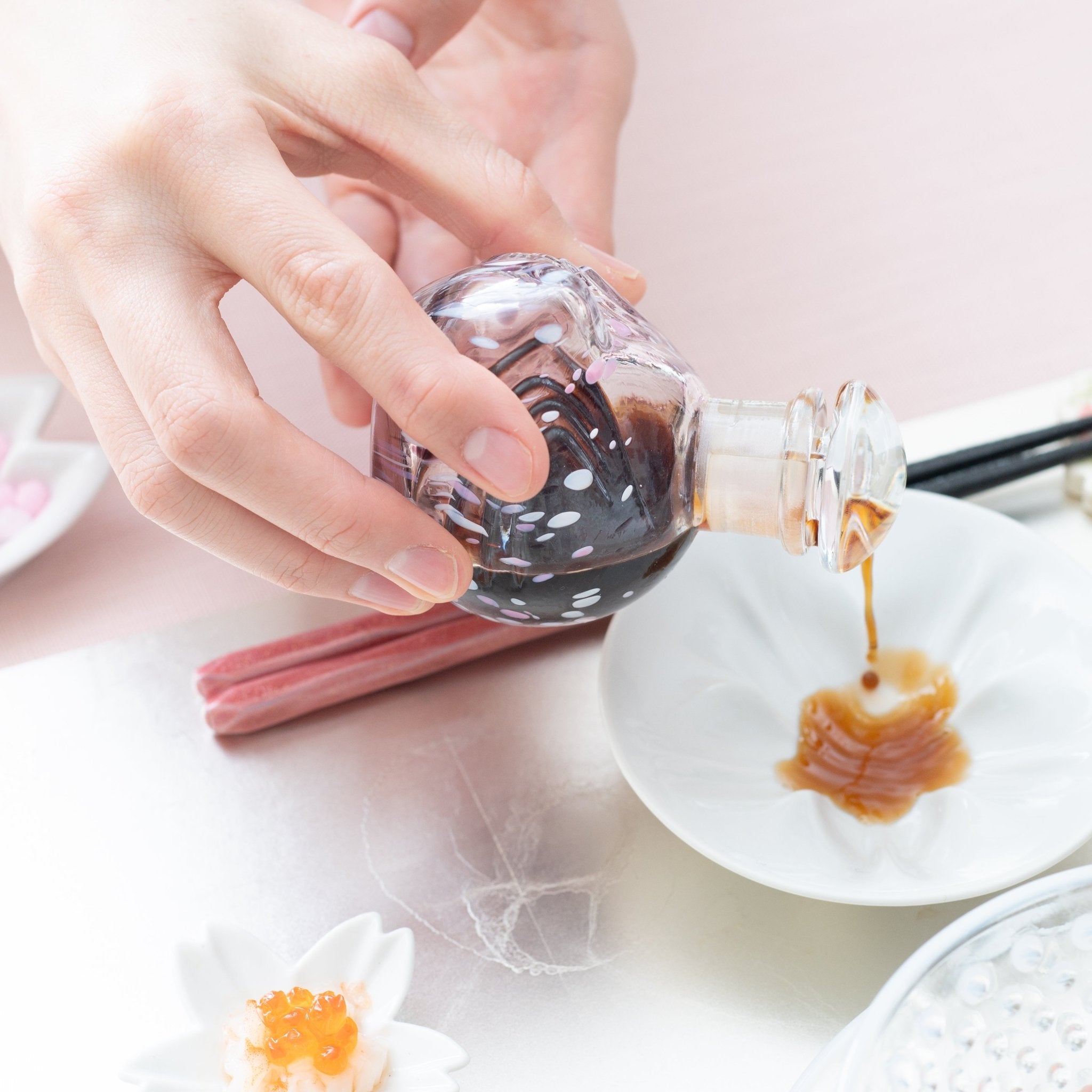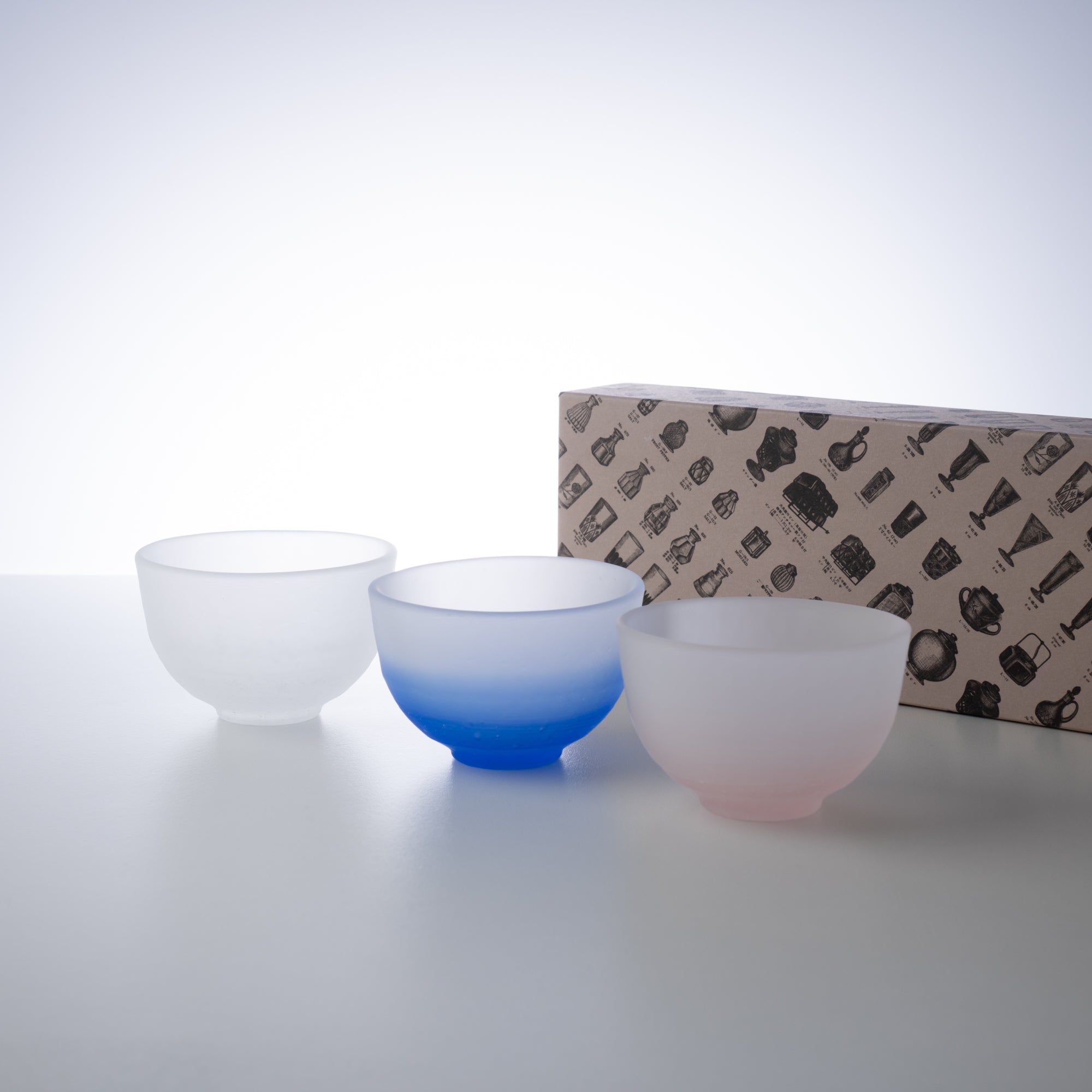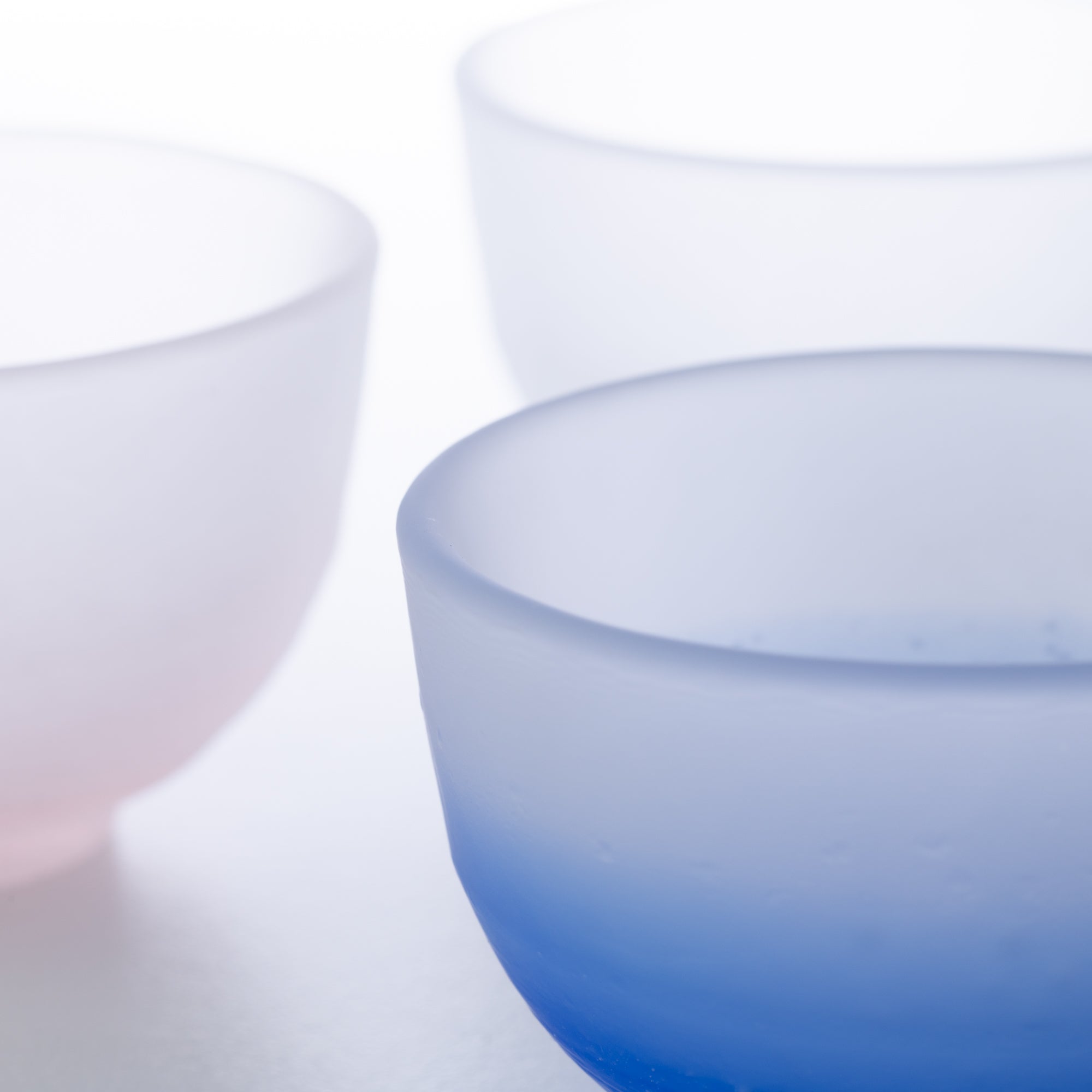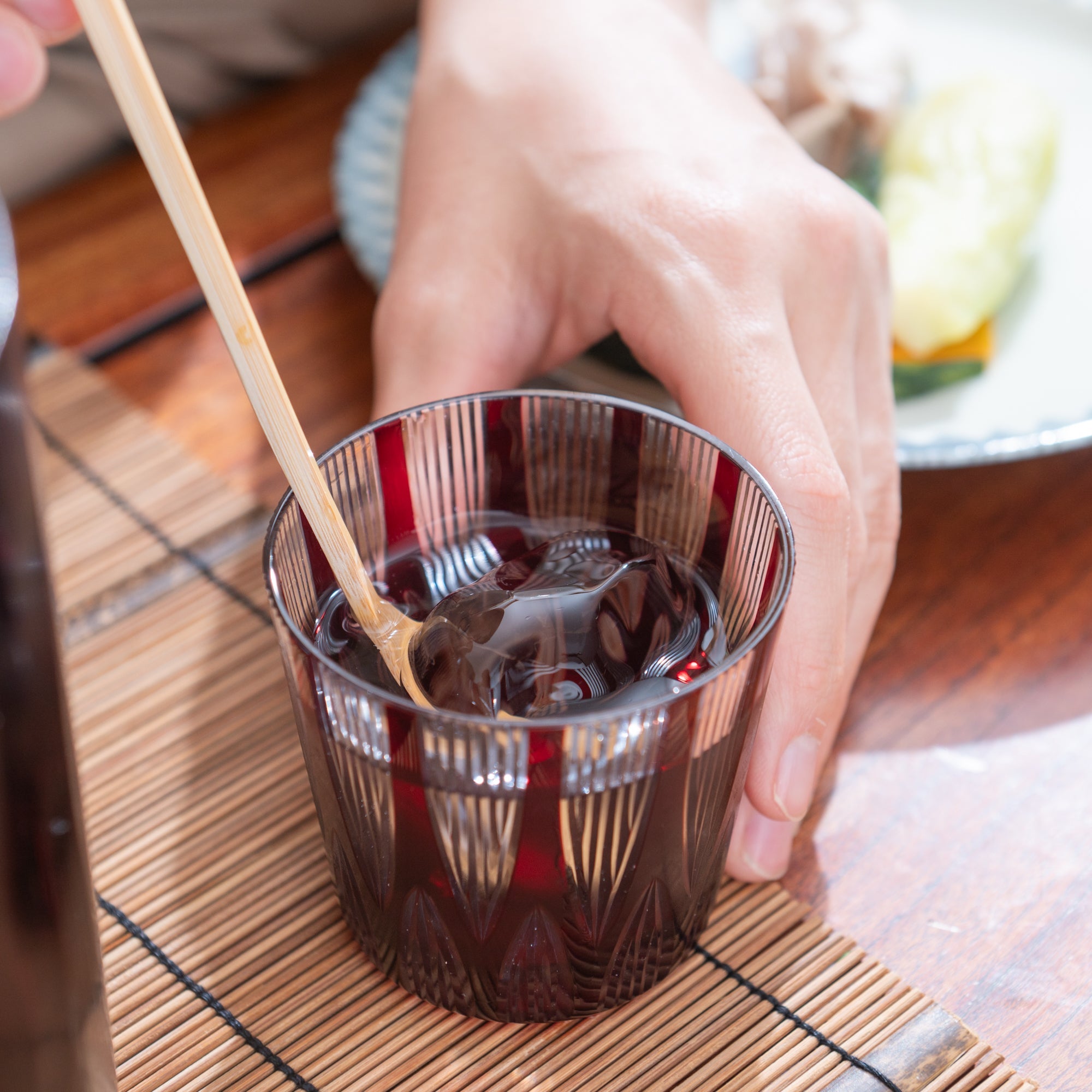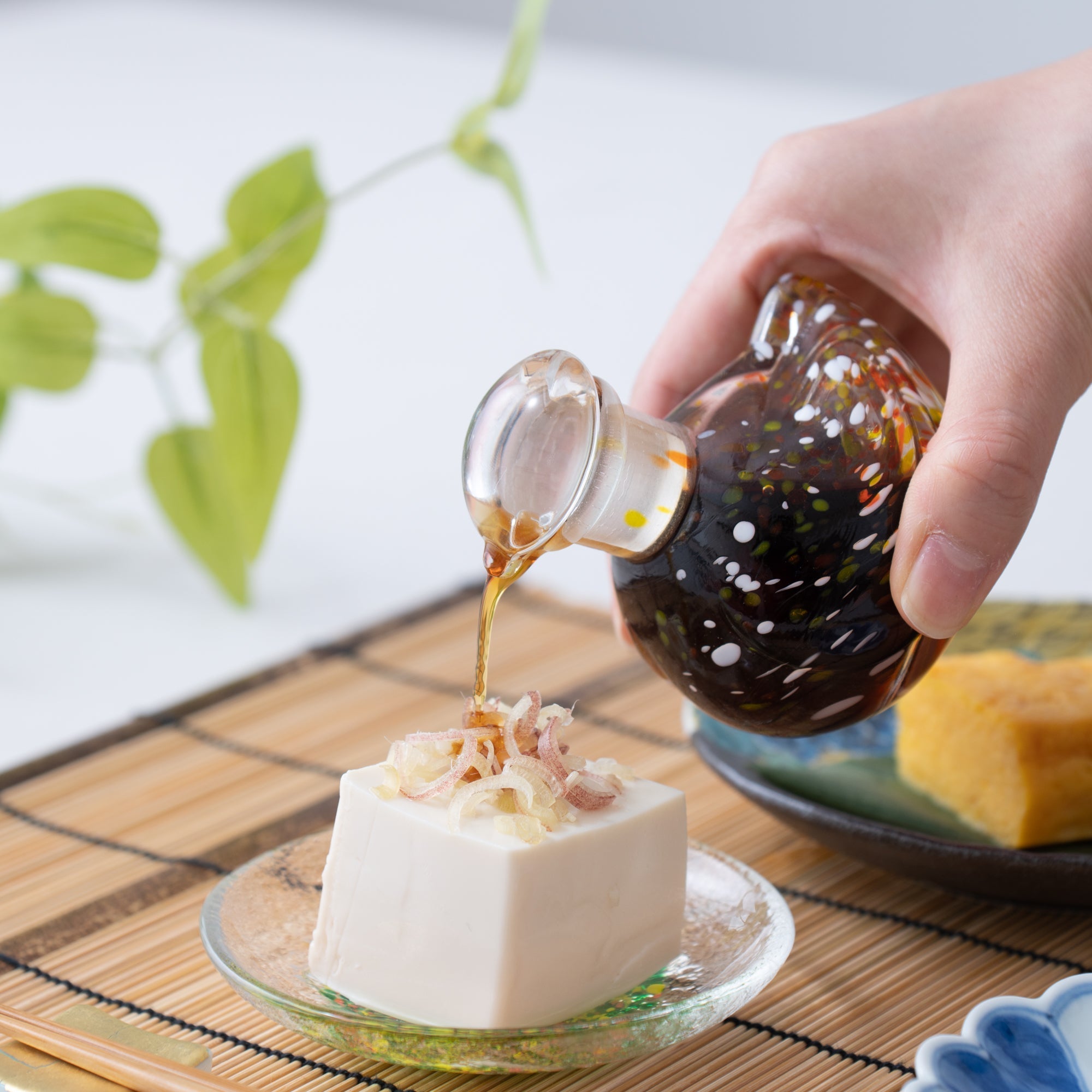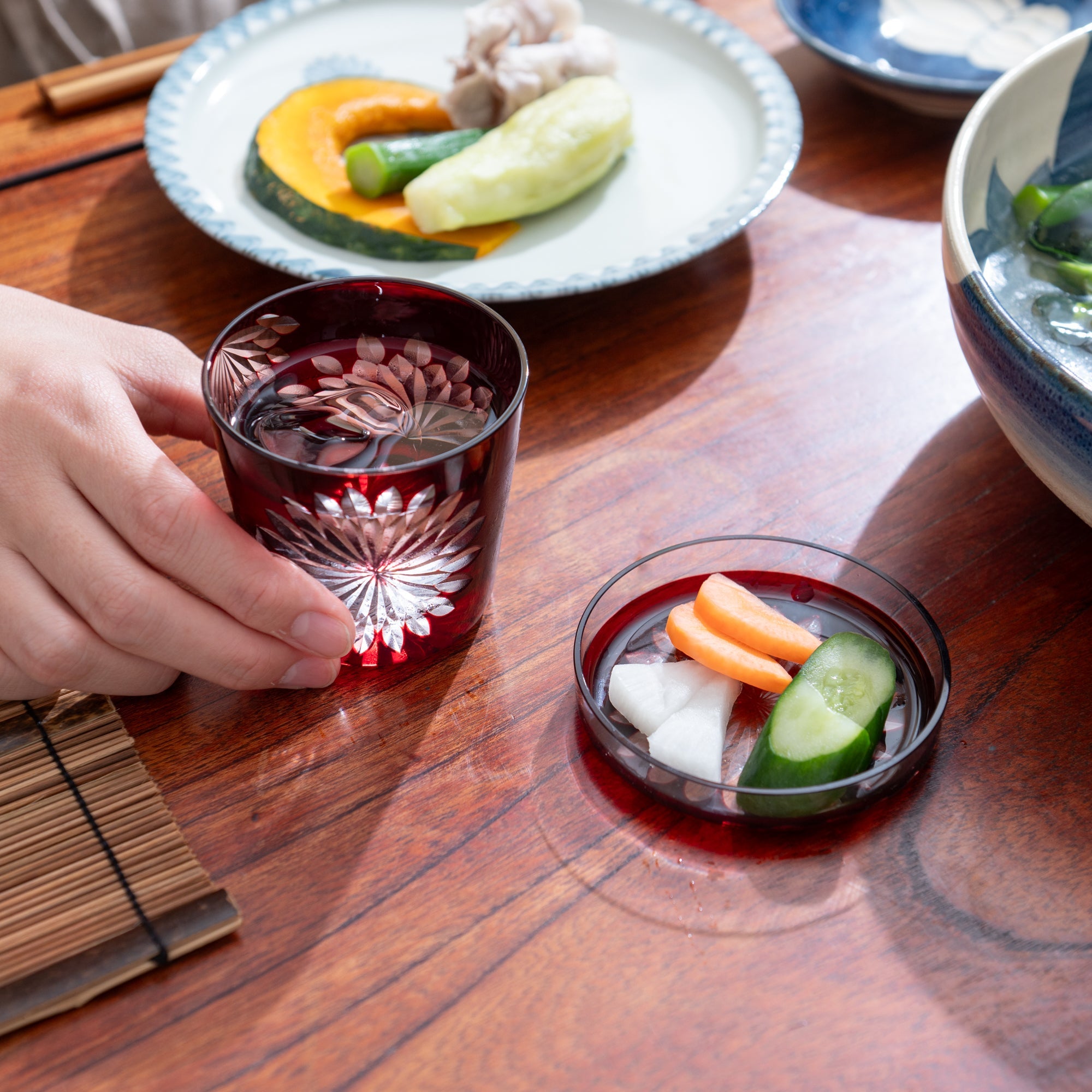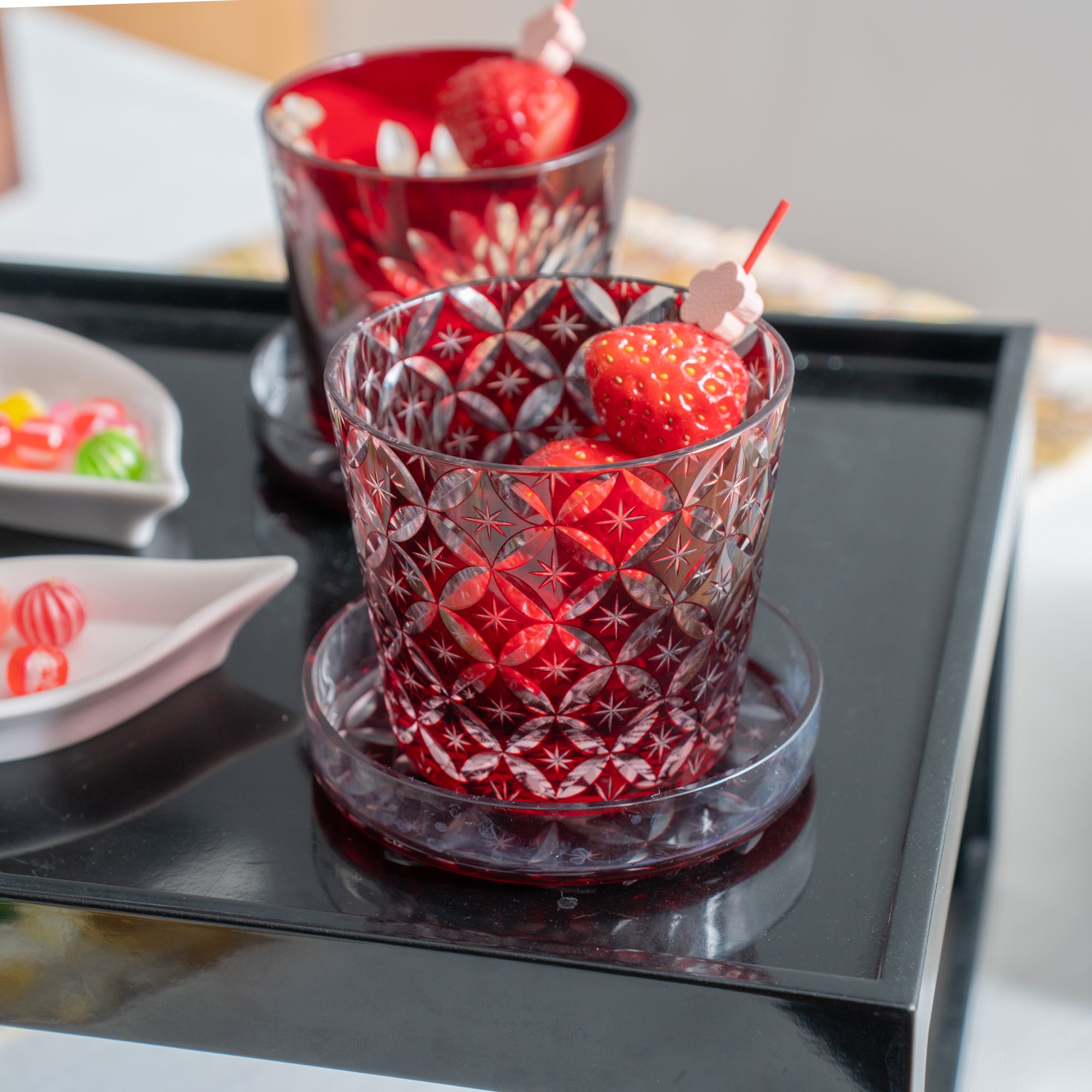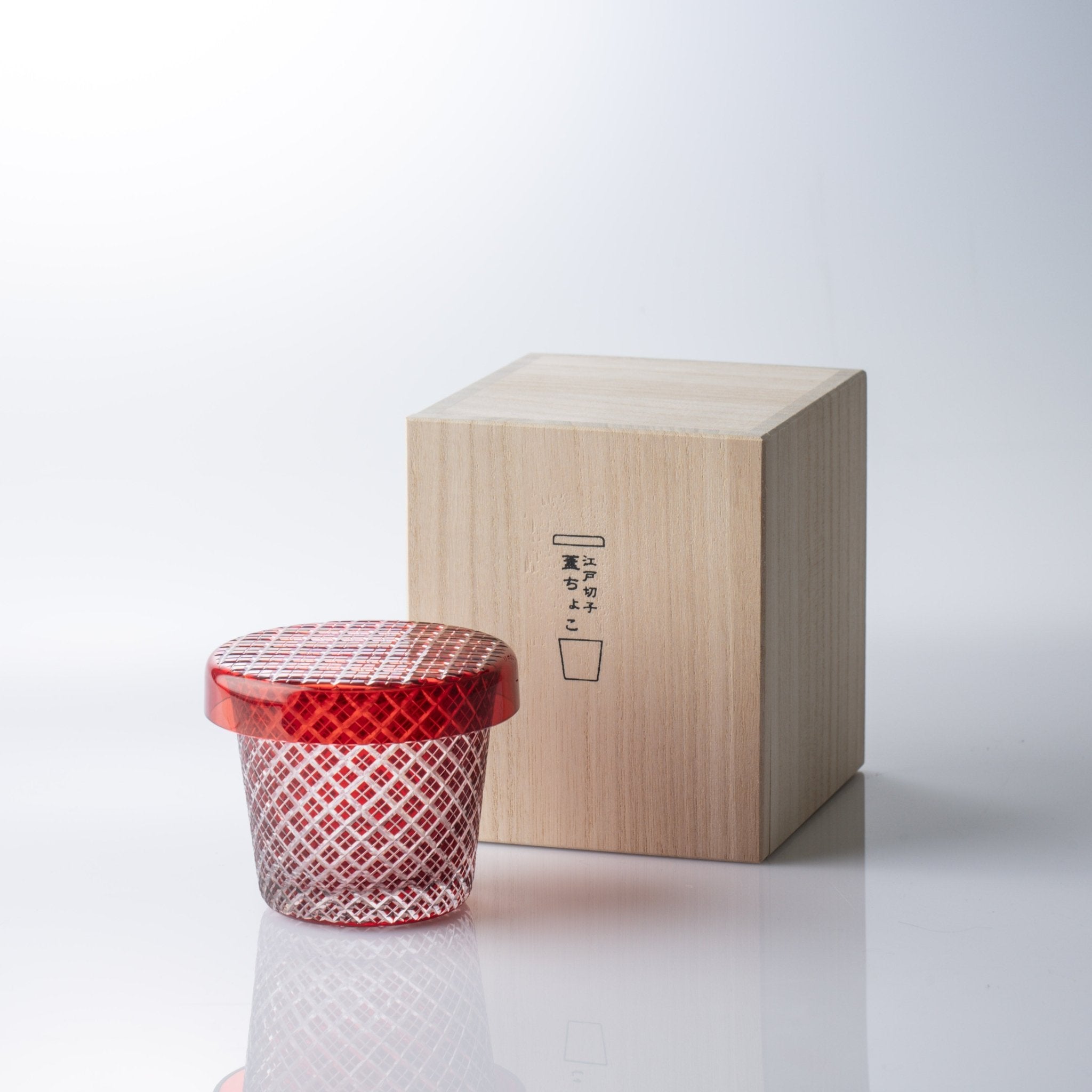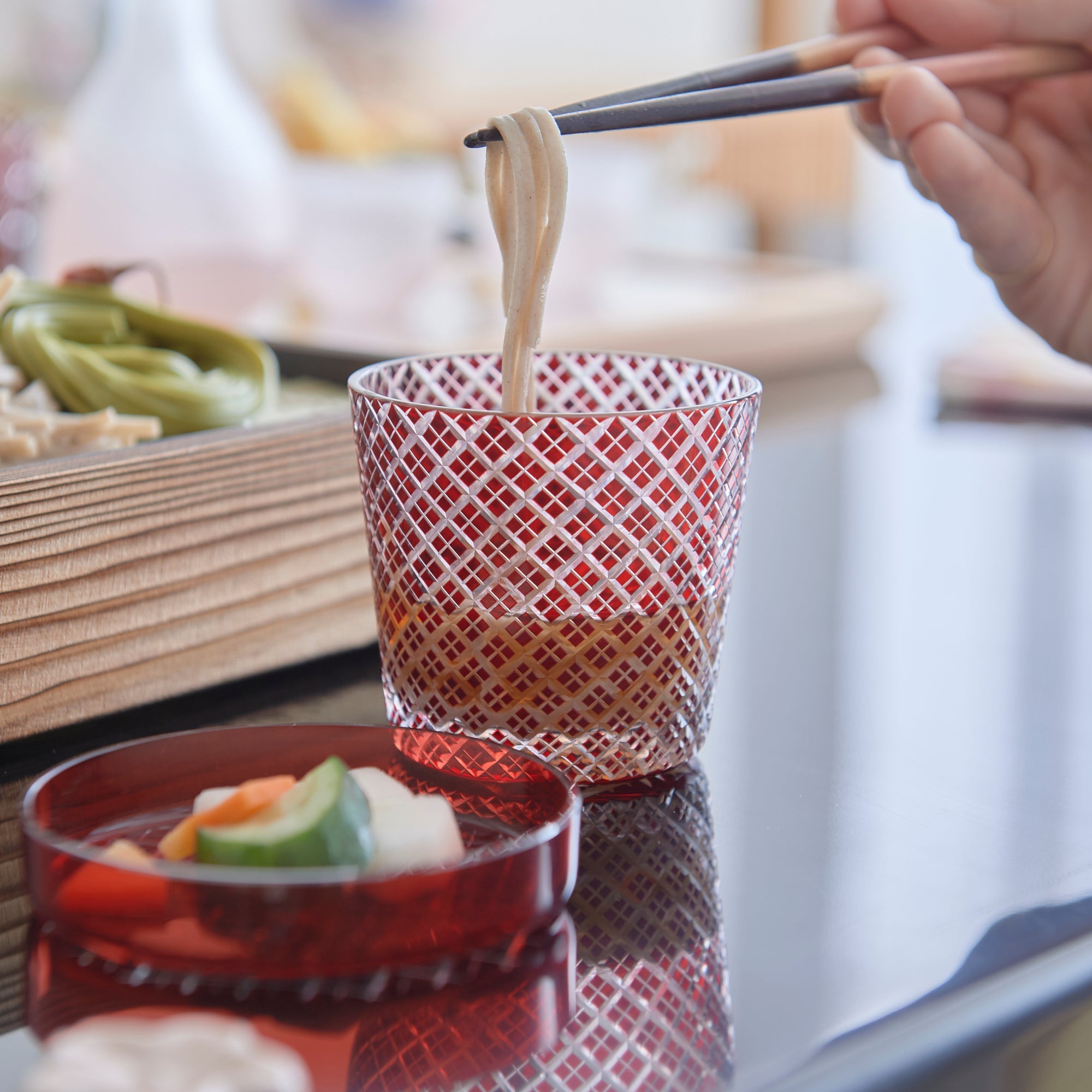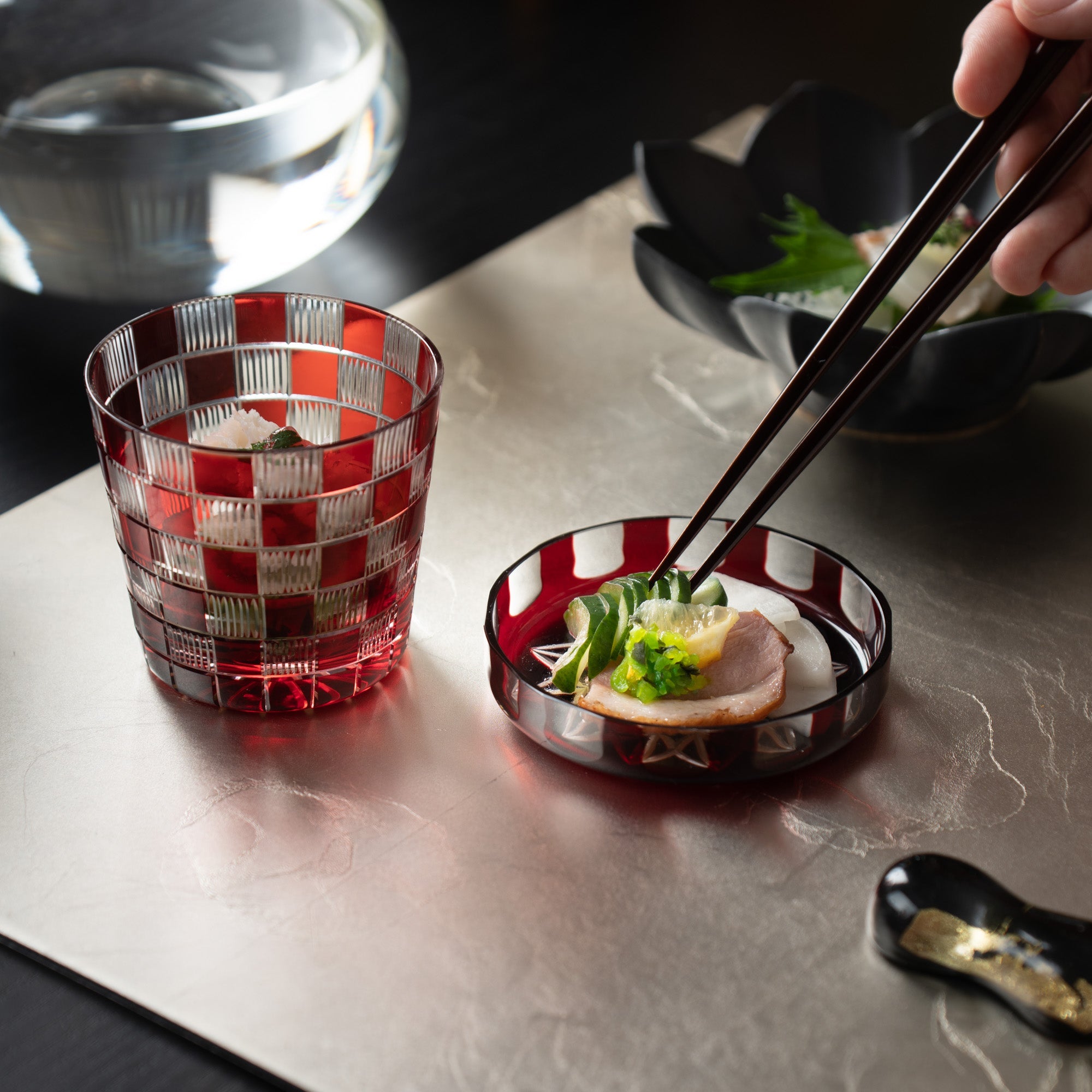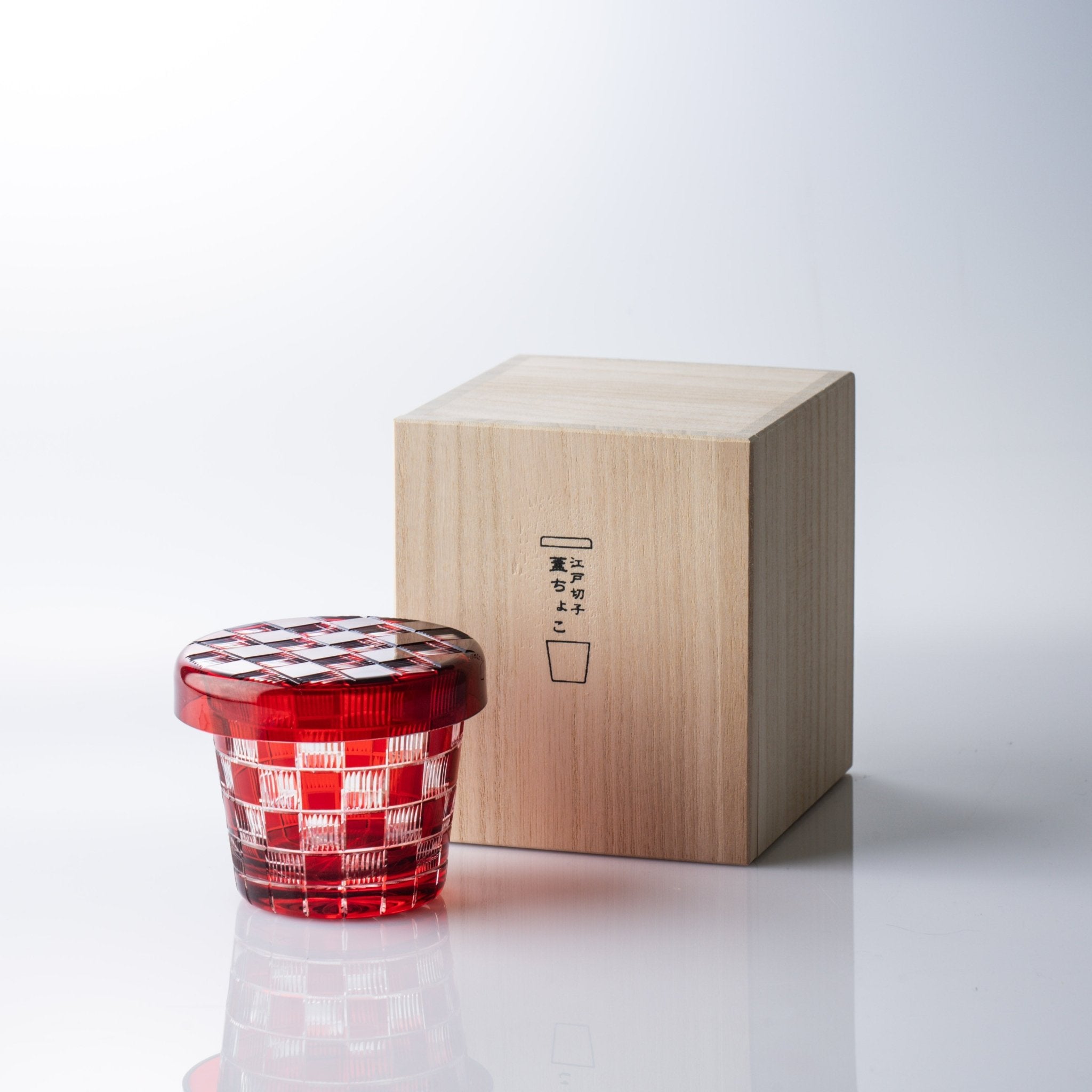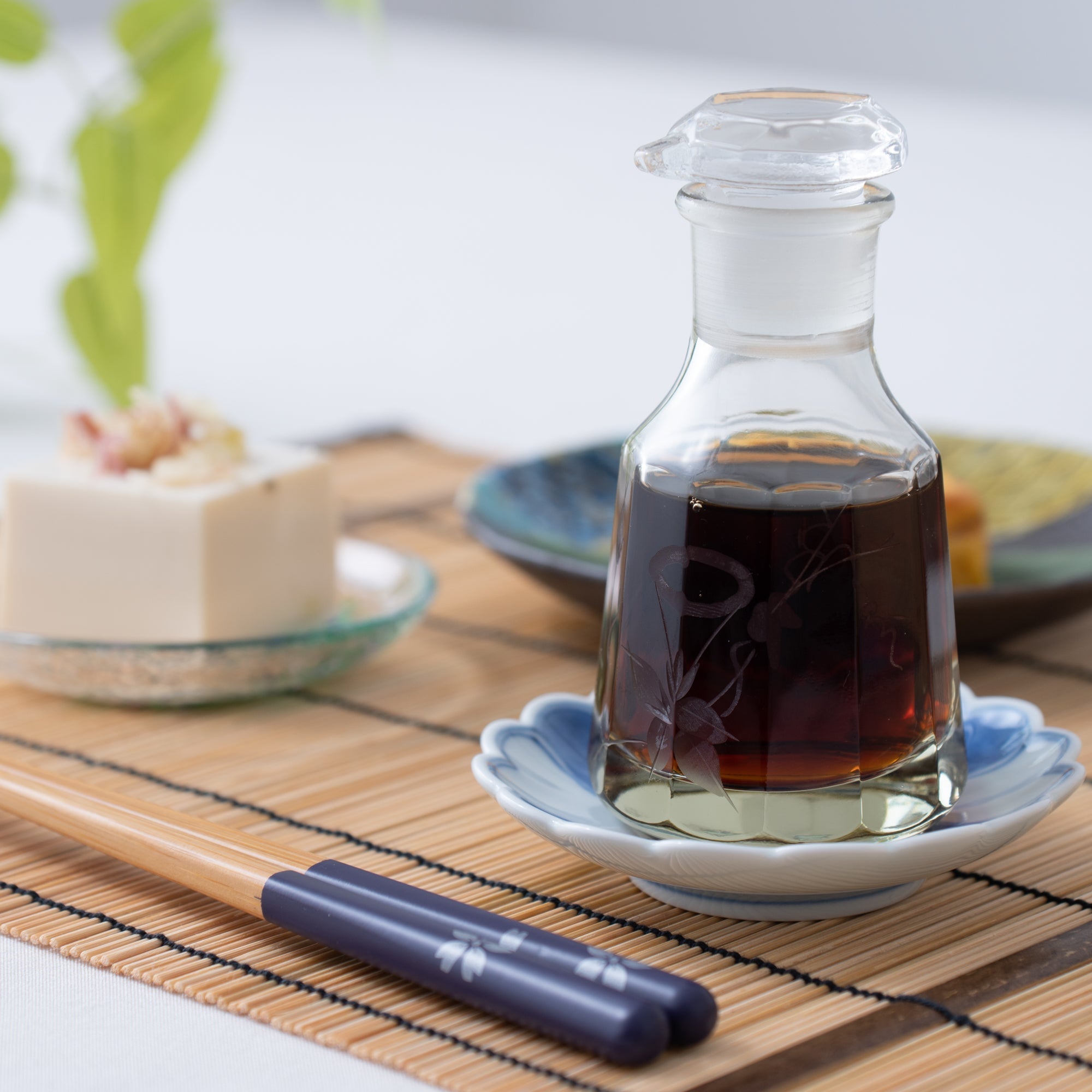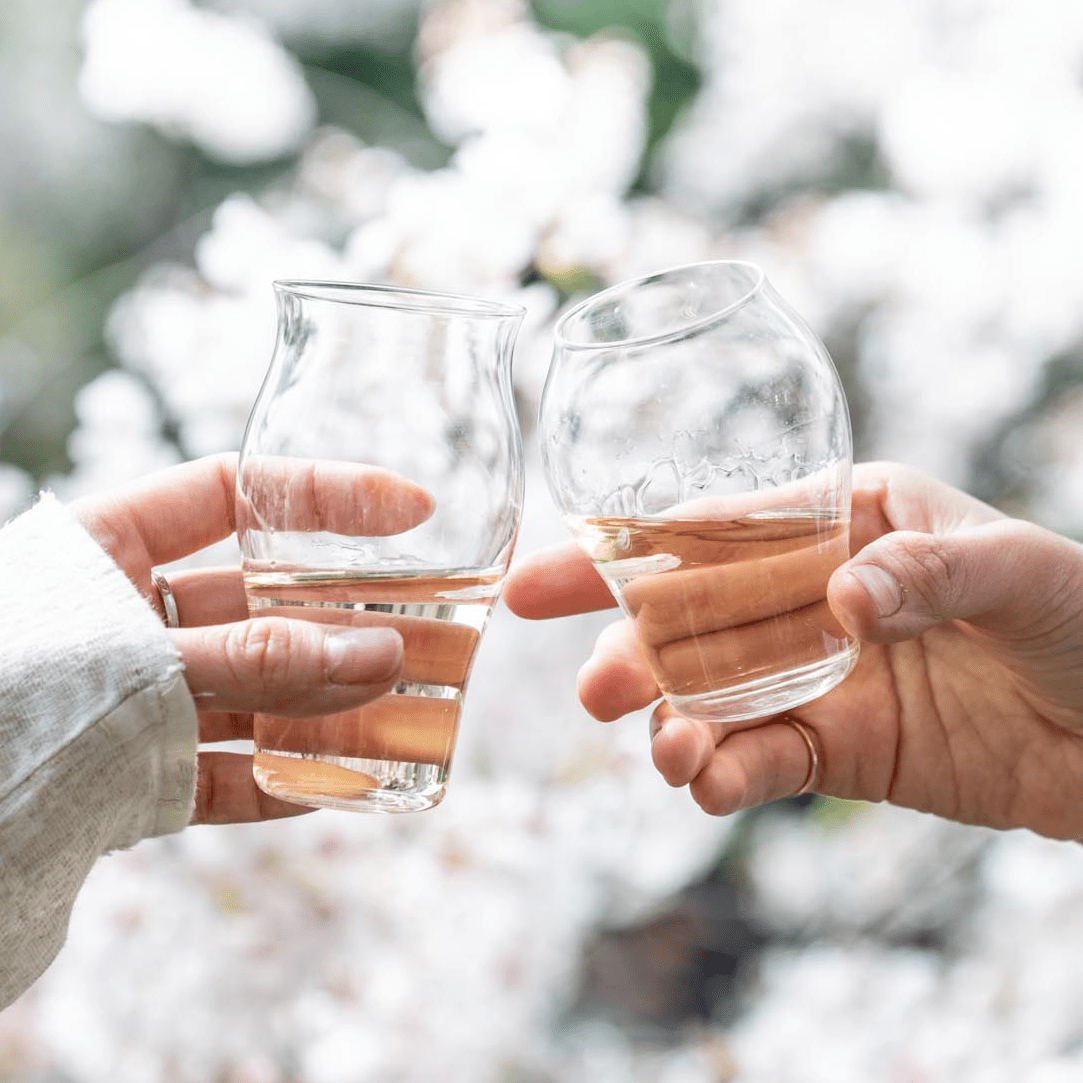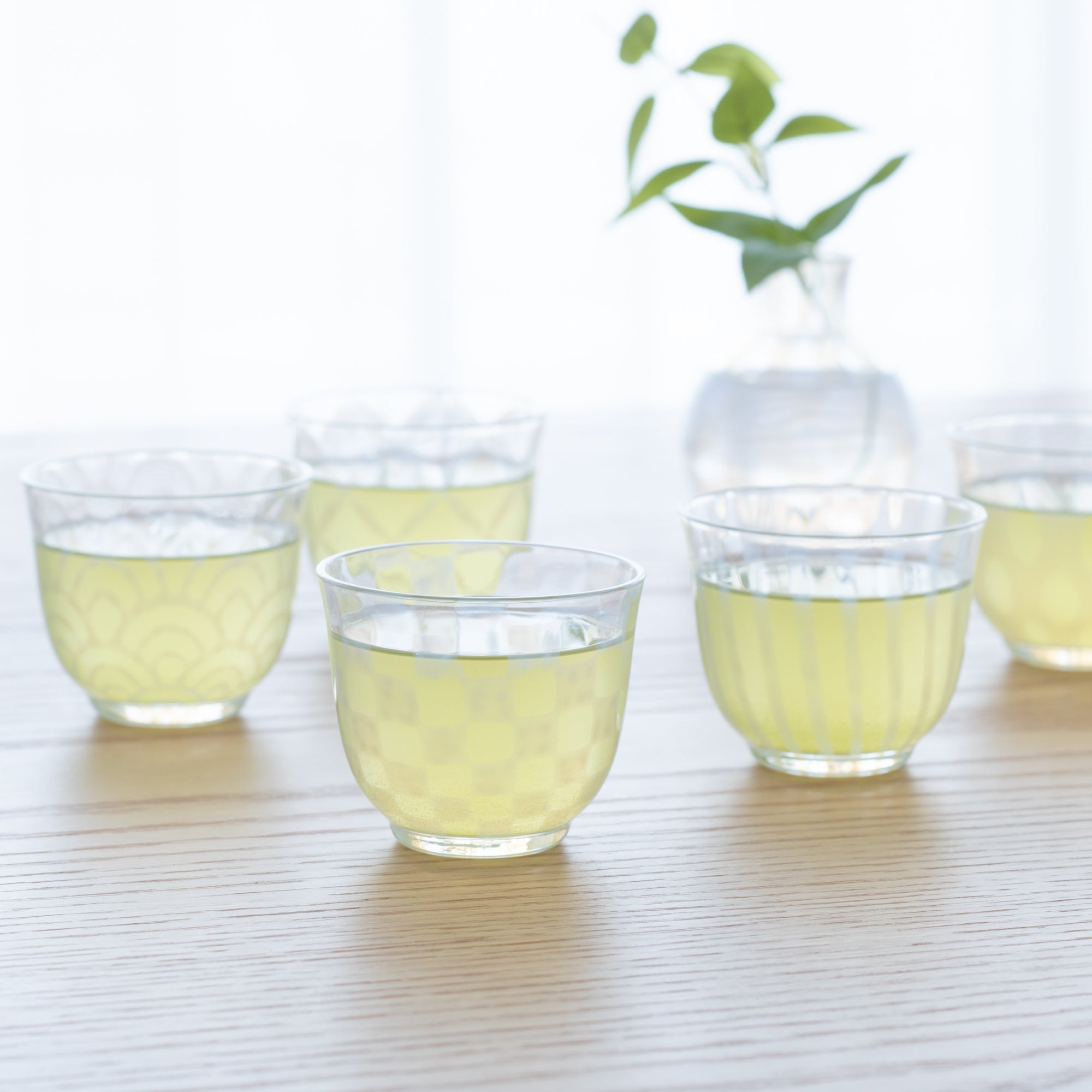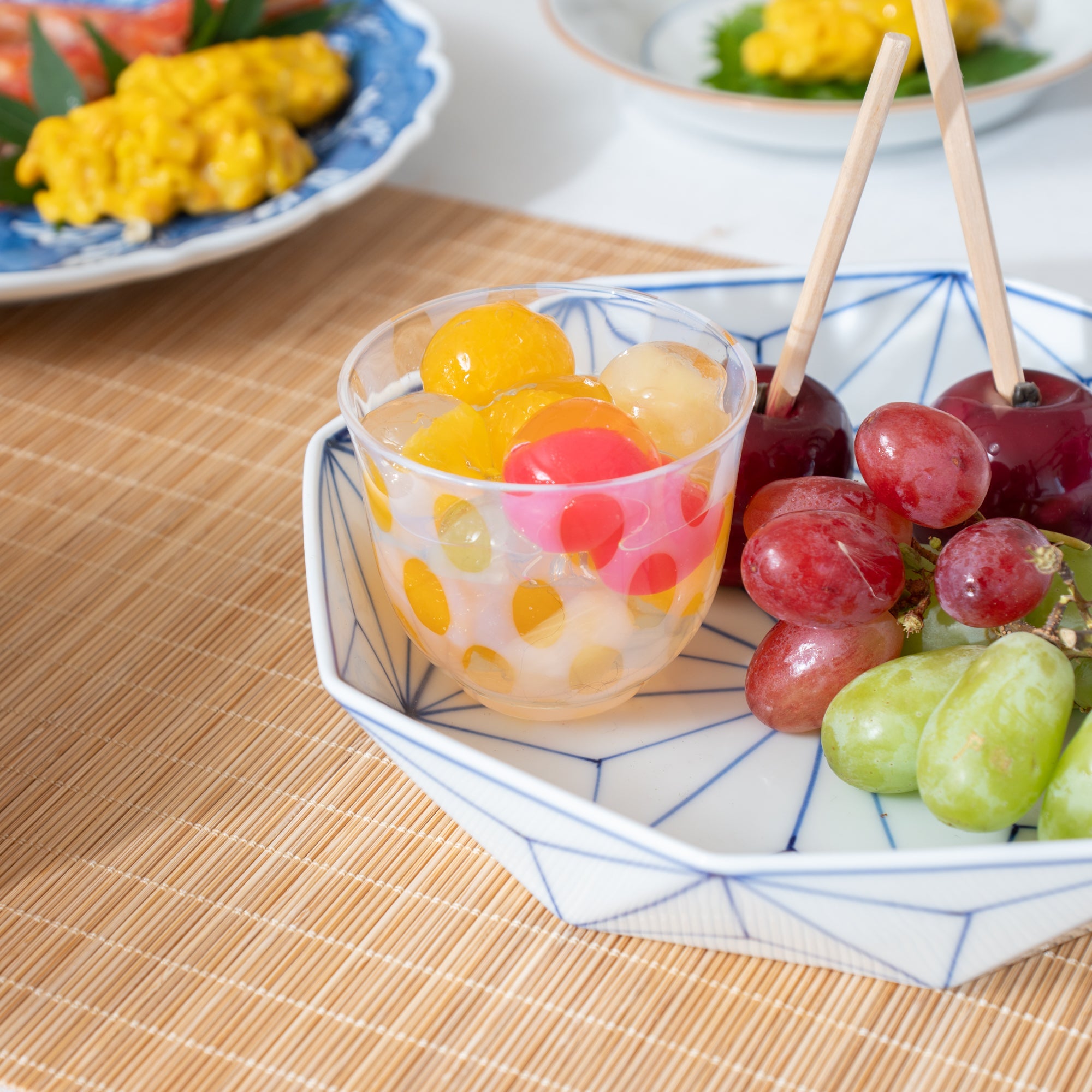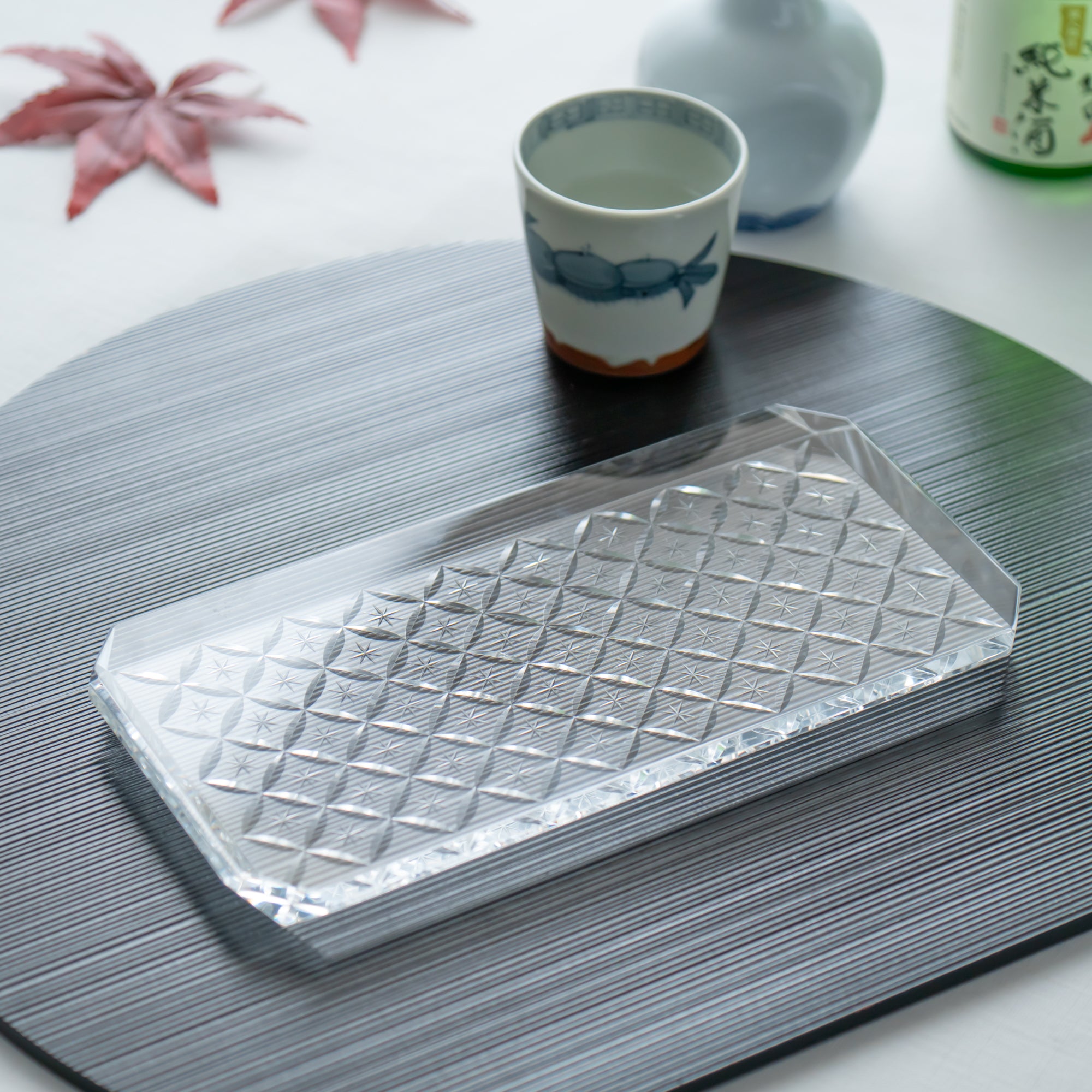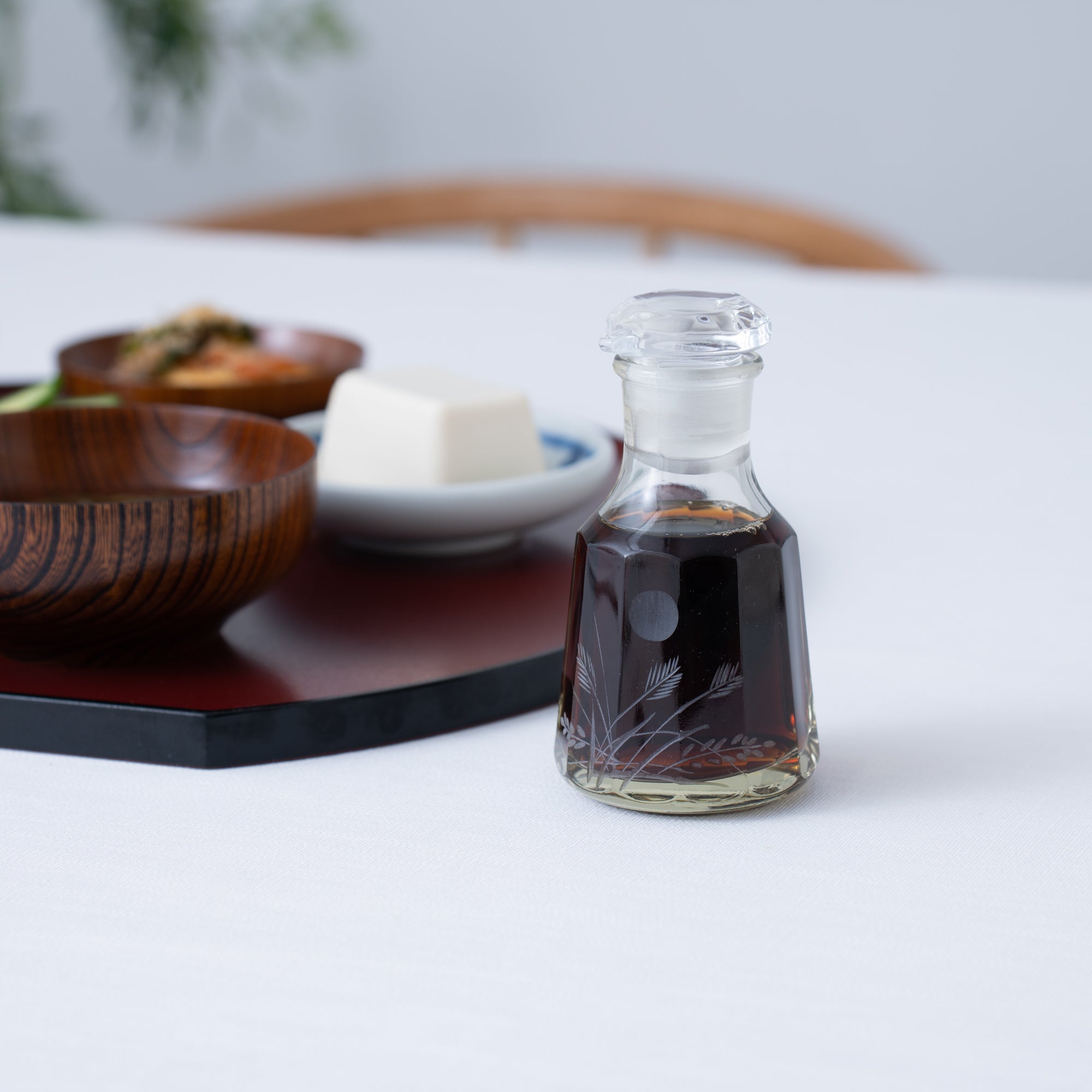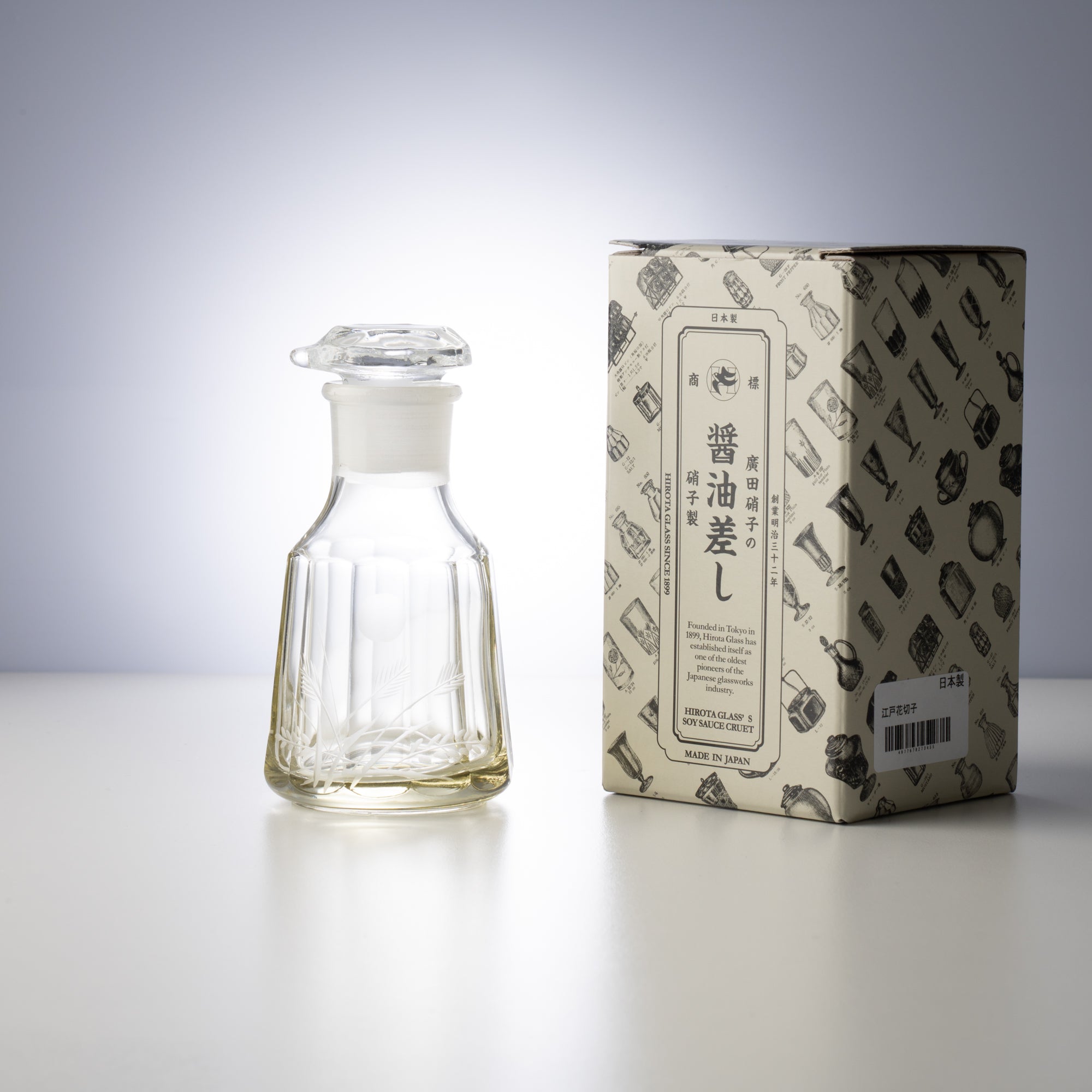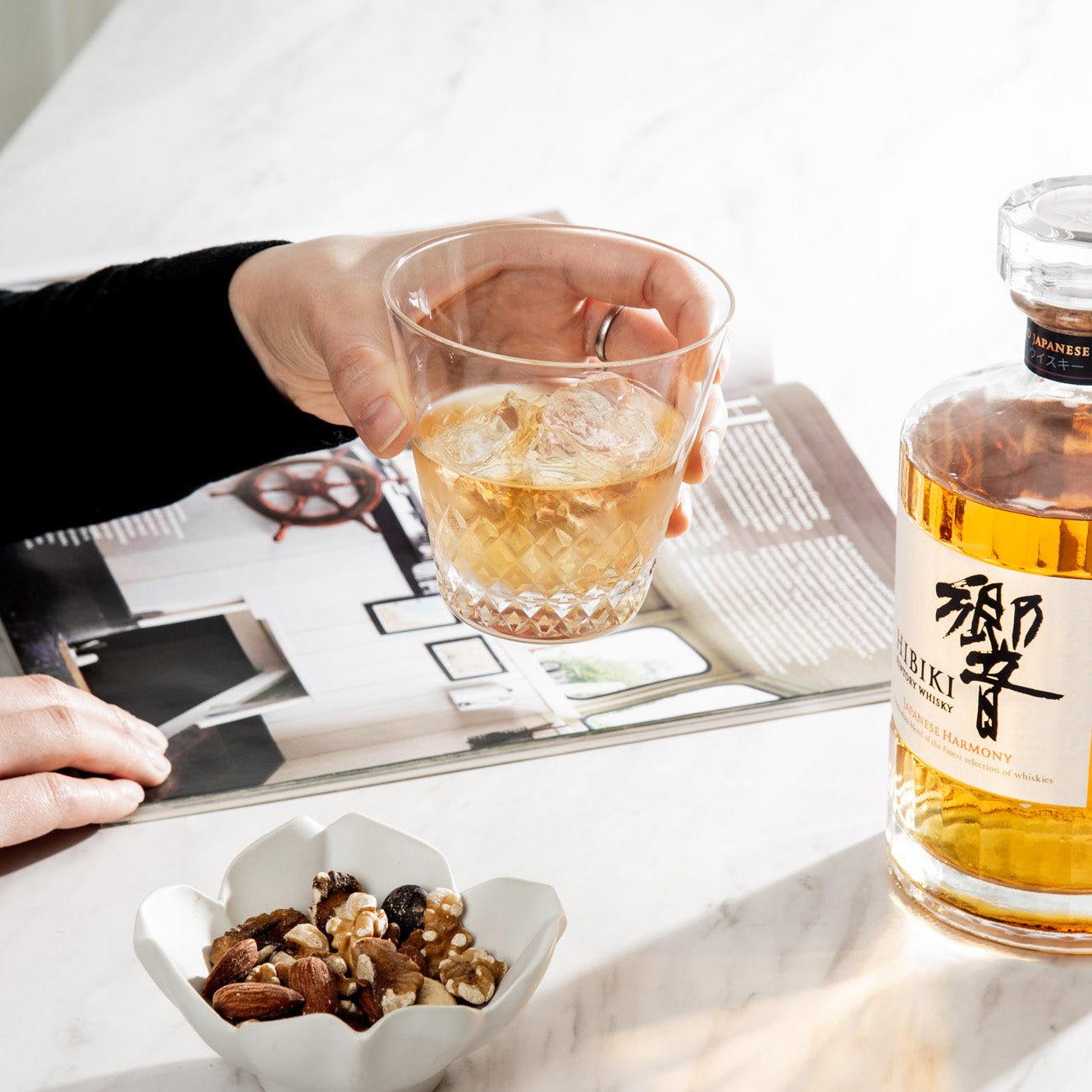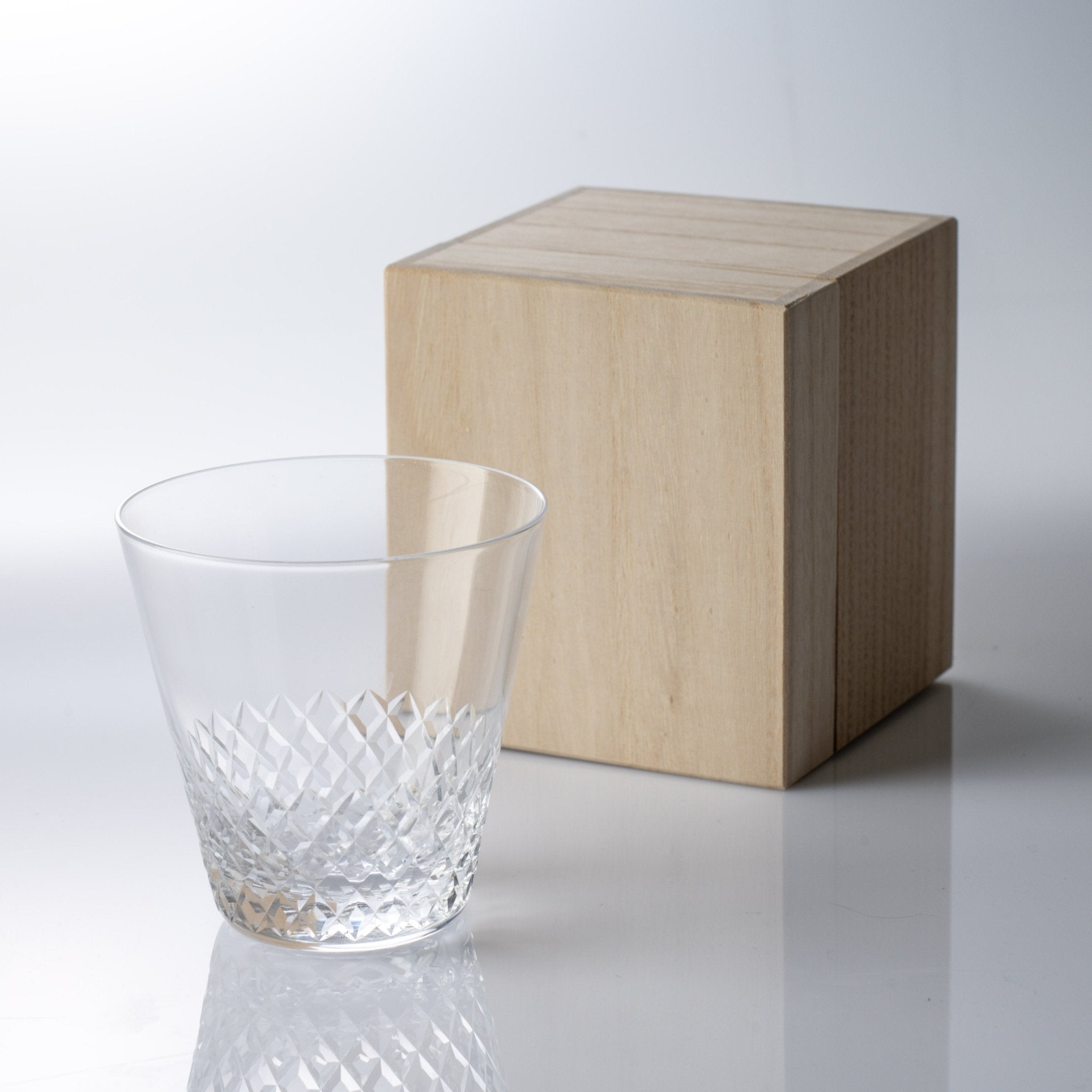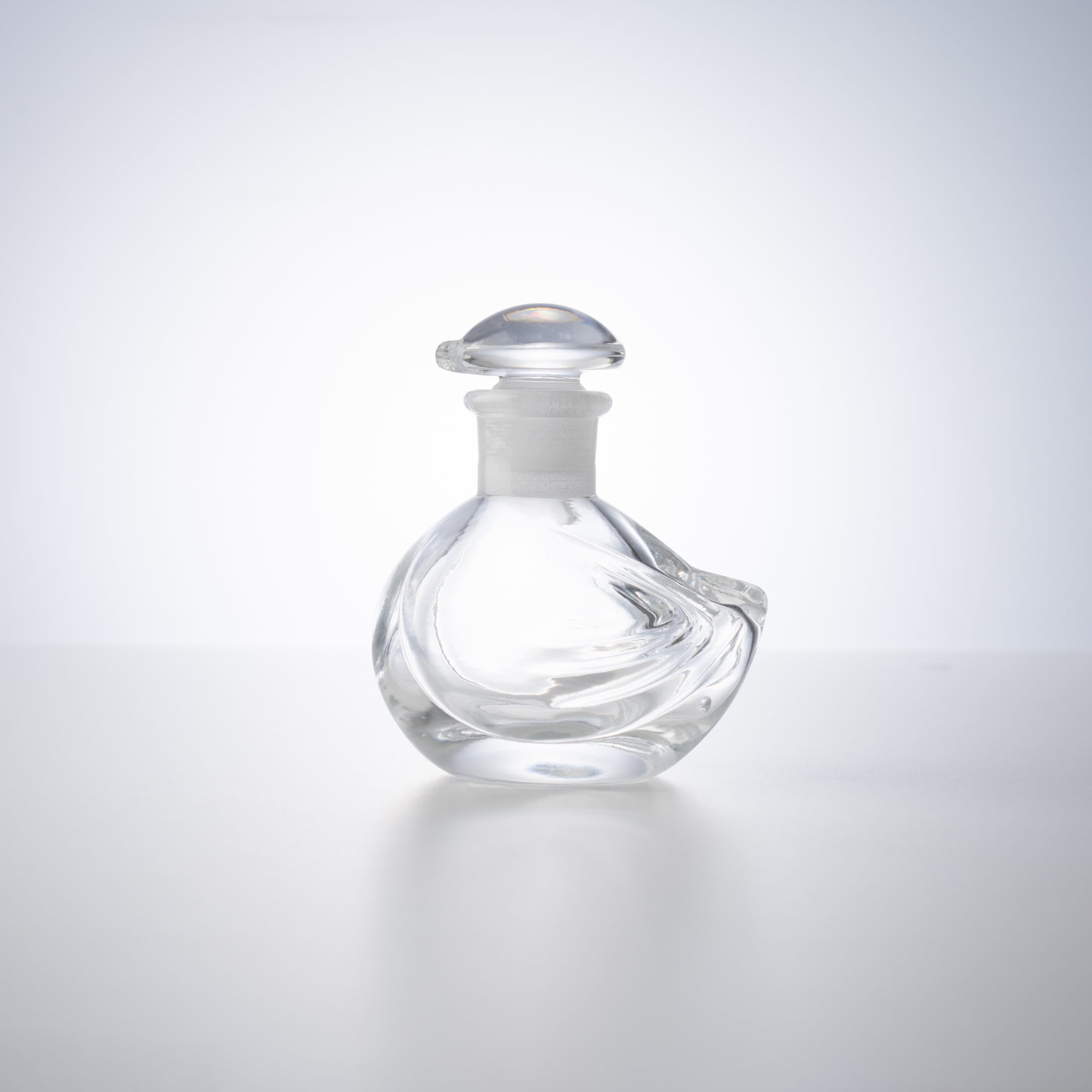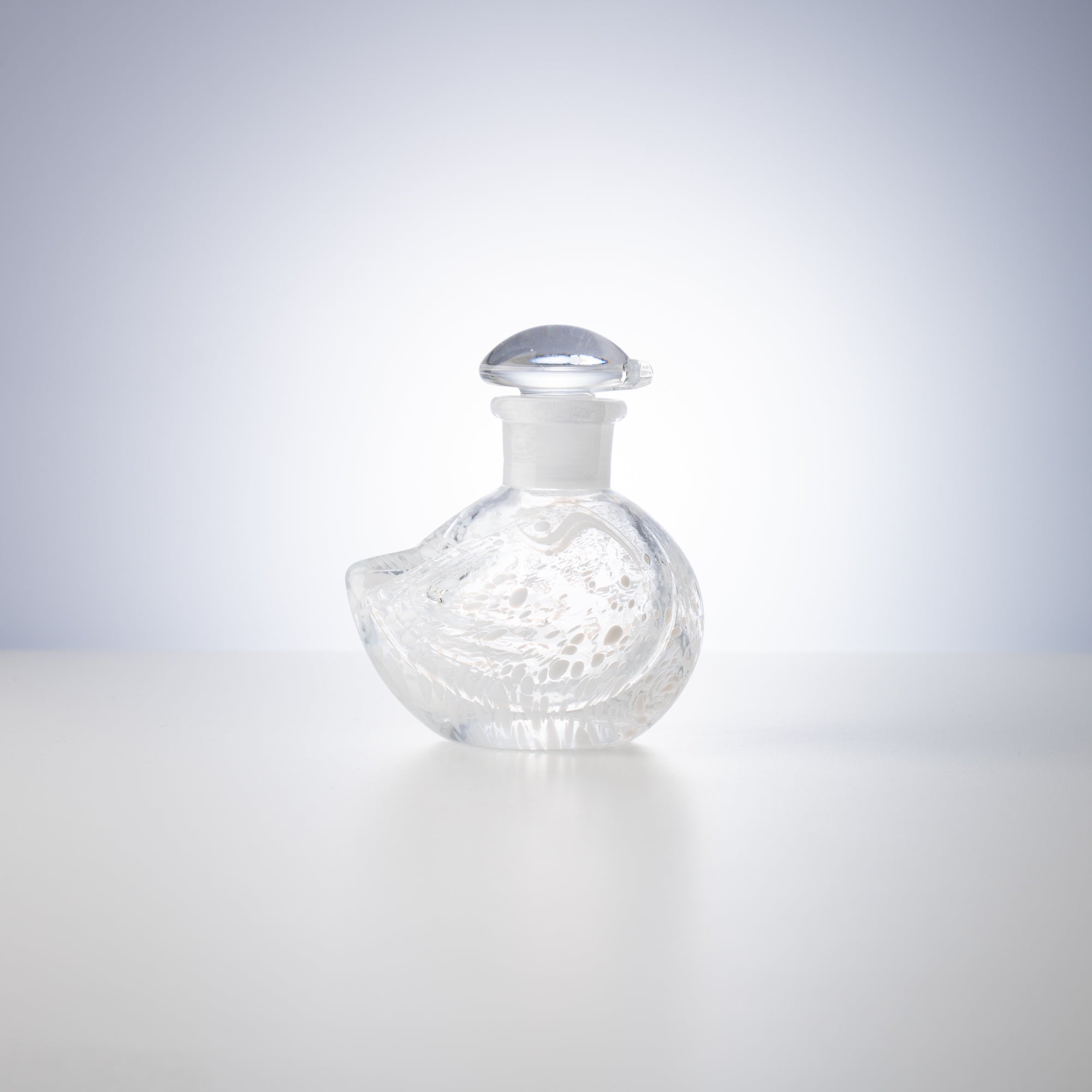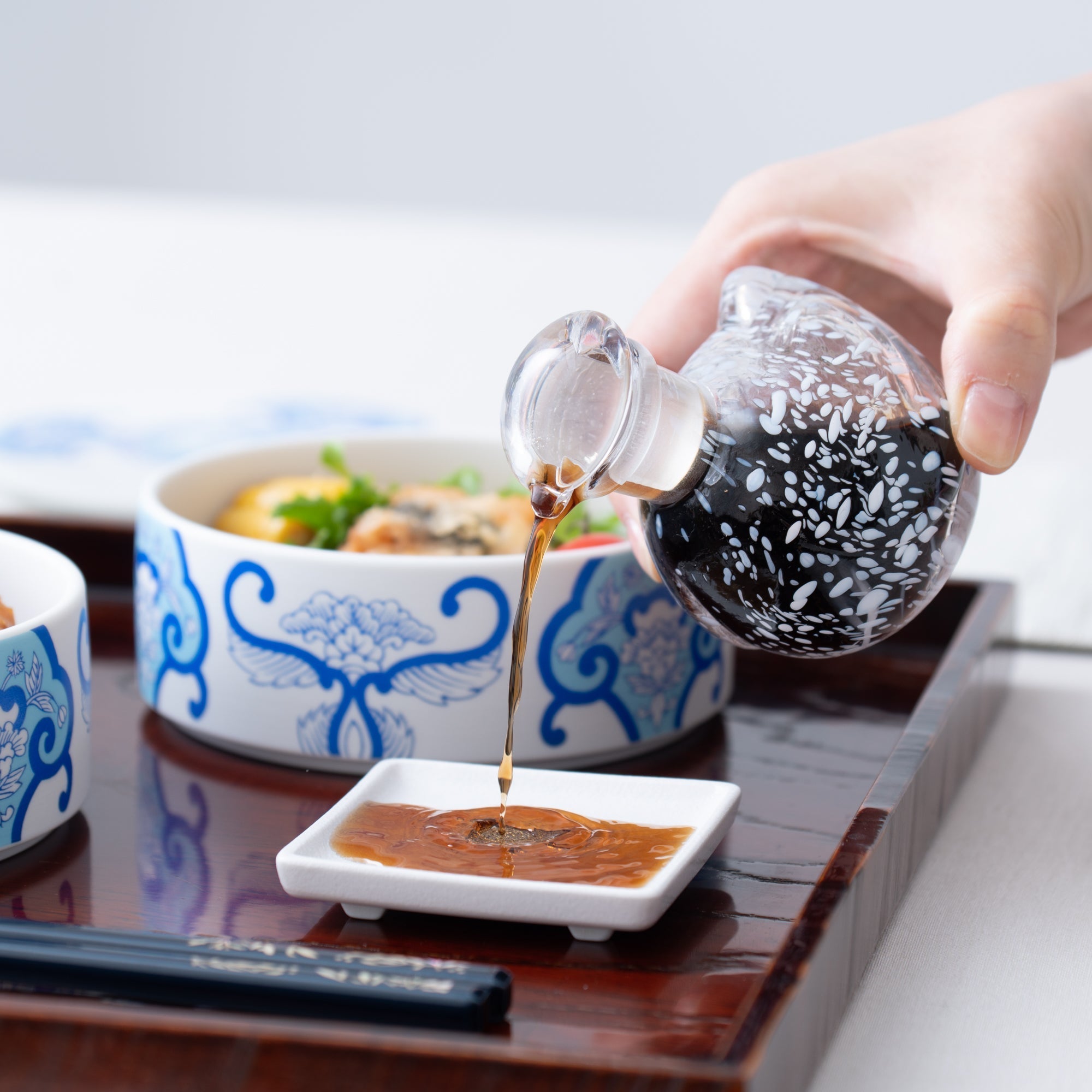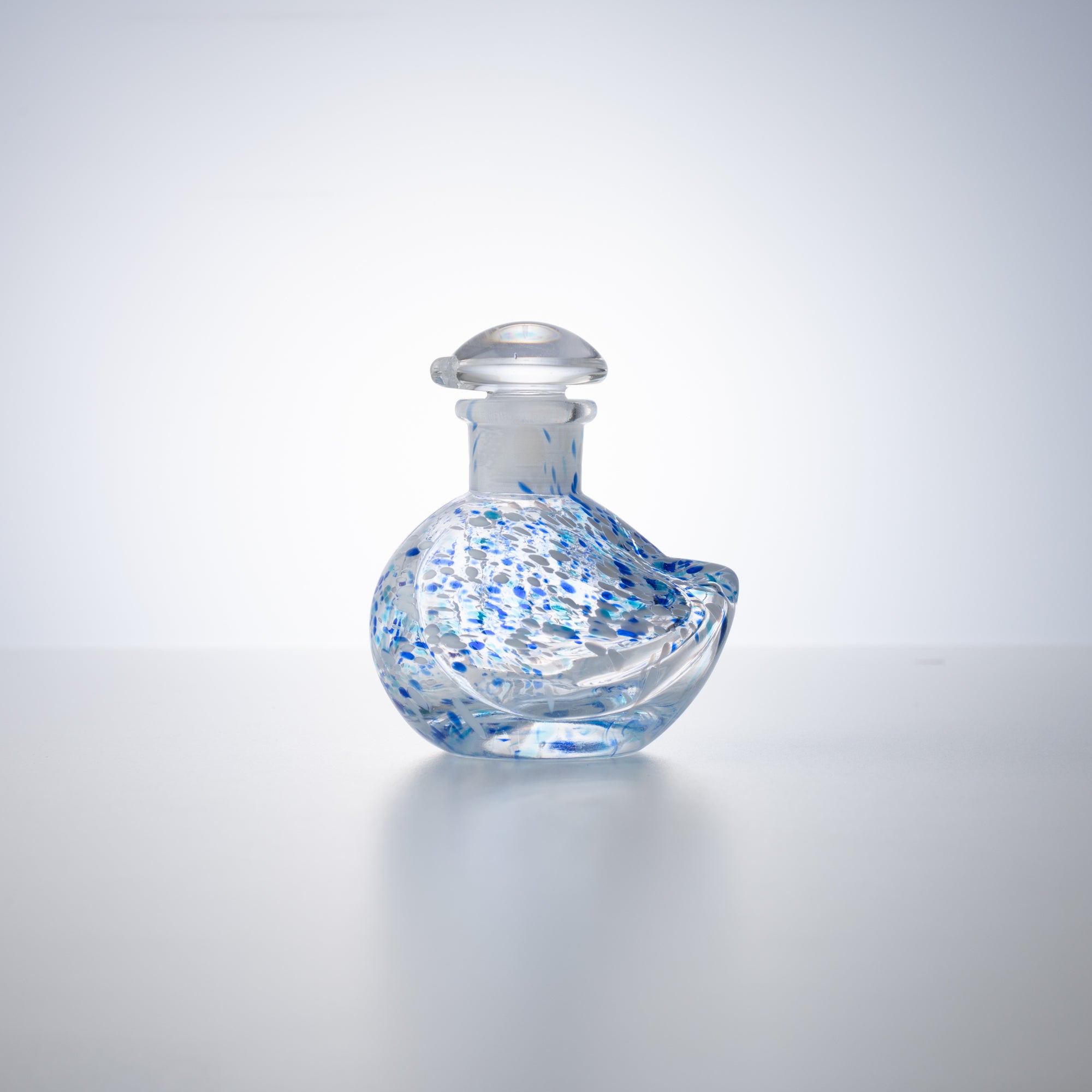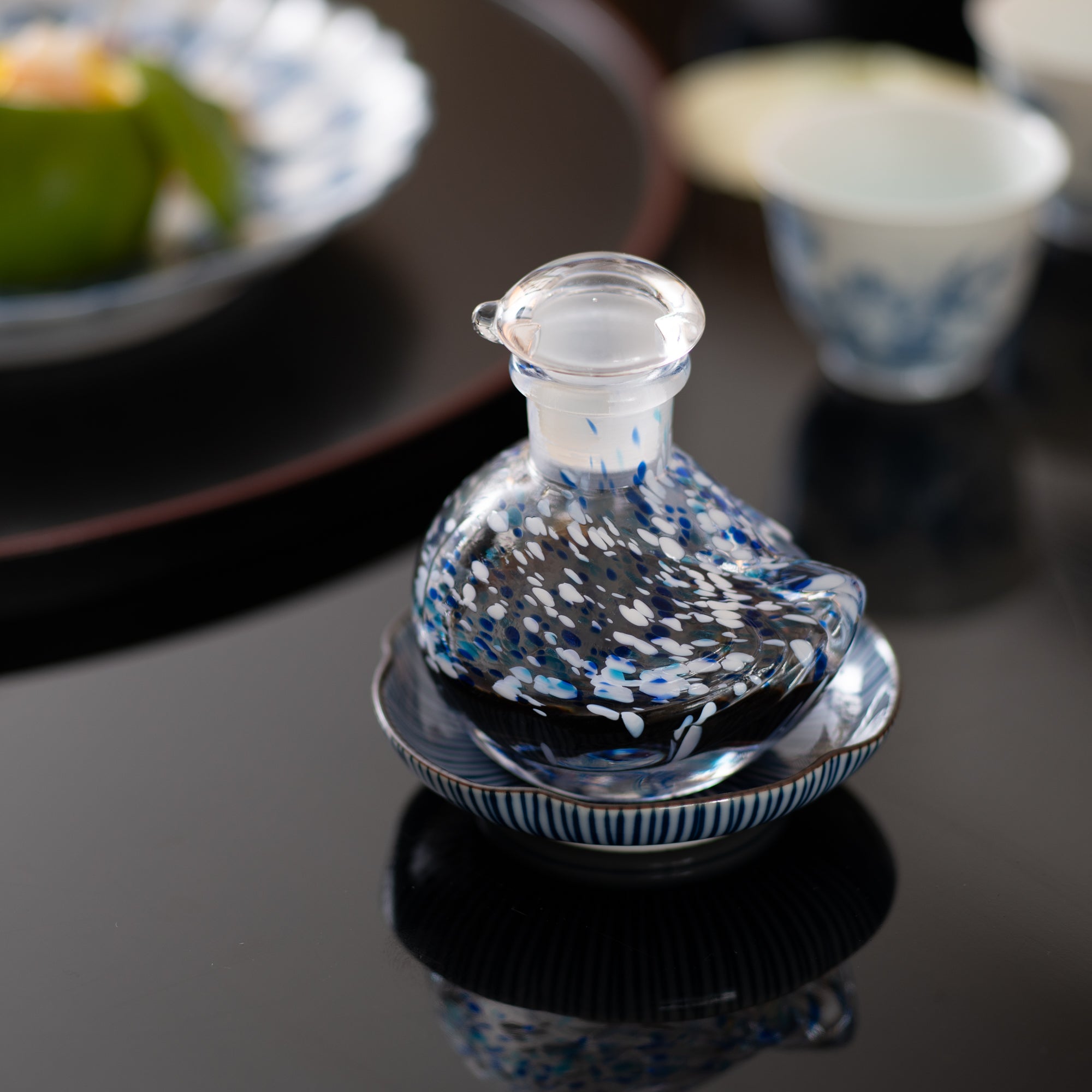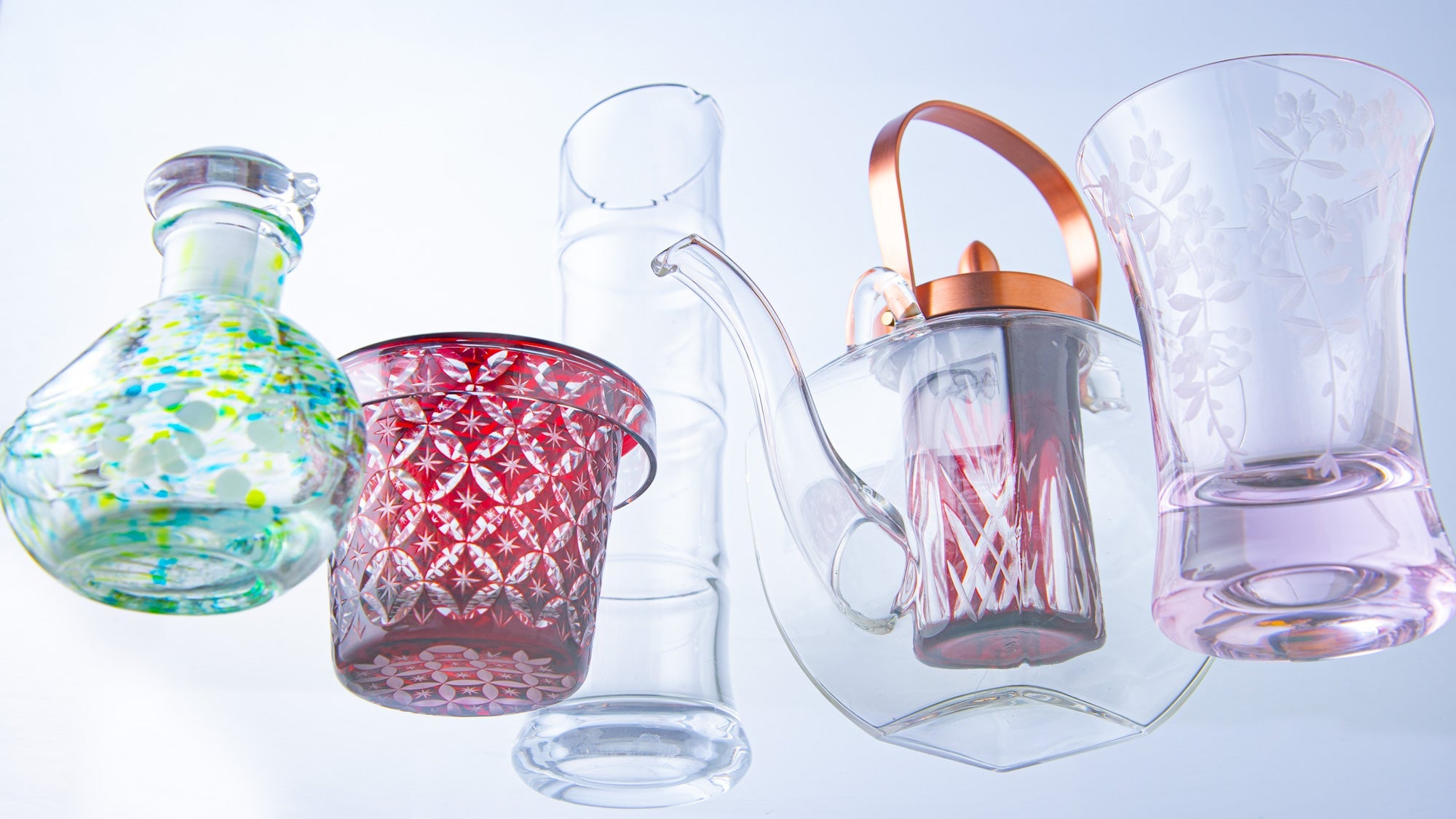
Vidrio Hirota
Fundada en 1899 durante la transformadora era Meiji (1868-1912 d. C.), Hirota Glass se erige como uno de los fabricantes de vidrio más antiguos de Tokio. Con más de un siglo de experiencia, la empresa conserva las delicadas técnicas del vidrio Edo y del Edo Kiriko, reinventando estilos clásicos. Desde las suaves curvas de la era Taisho (1912-1926 d. C.) hasta las reinterpretaciones modernas, cada pieza encarna la dedicación a la belleza, la funcionalidad y el encanto tradicional japonés.
Esta serie captura la luz y el color de las estaciones de Japón, vistos a través del cristal. Cada pieza presenta uno de cuatro tonos: el amarillo de las flores en primavera, el verde exuberante del verano, el rojo brillante de las hojas en otoño y el azul medianoche brillante del invierno. Con su diseño alegre y refinado, estos pequeños recipientes son perfectos para añadir un toque estacional a su mesa, ya sea para las comidas diarias o para momentos especiales.

La serie Taisho Roman revive una cautivadora técnica de fabricación de vidrio de principios del siglo XX conocida como nyuhaku Vidrio, traducido como "vidrio blanco lechoso". Apreciado desde la era Meiji, este método casi había desaparecido, hasta que Hirota Glass lo recuperó en la década de 1980 tras un largo y minucioso proceso de experimentación. Los suaves patrones blancos no se pintan, sino que se forman dentro del vidrio utilizando ceniza de hueso y cambios repentinos de temperatura durante el moldeado. El resultado es un acabado opalescente y de ensueño, poco común fuera de las tiendas de antigüedades, que confiere a cada pieza un brillo nostálgico.
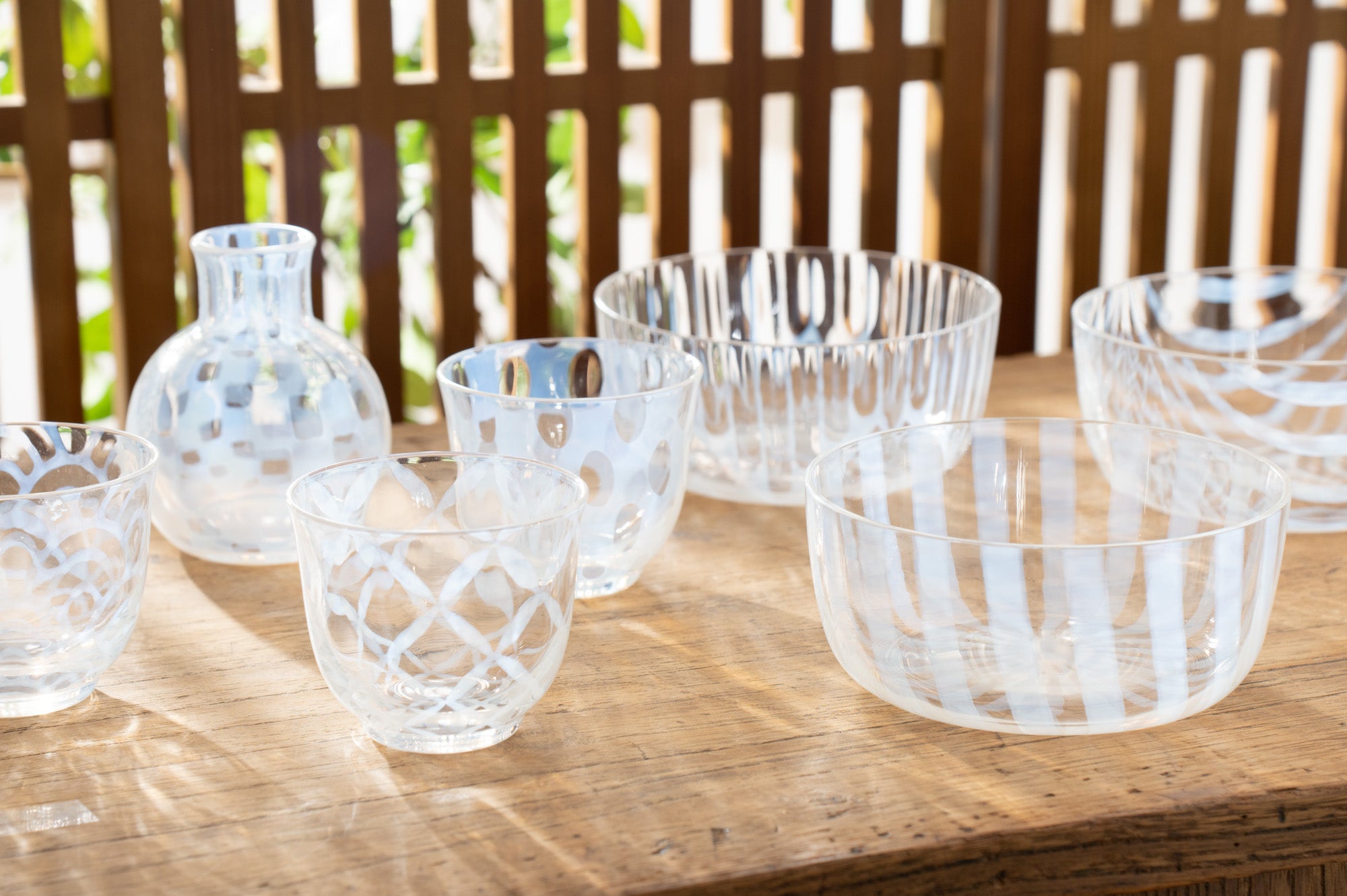
El encanto del romanticismo de Taisho
La era Taisho duró solo quince años, pero marcó un punto de inflexión en la cultura japonesa. El rápido crecimiento industrial transformó la vida cotidiana: ferrocarriles, autobuses, teléfonos y medios impresos se integraron en un nuevo panorama moderno. Este período también presenció el auge de los ideales democráticos, con un creciente apoyo a los derechos de las mujeres y la libertad individual, especialmente entre la clase media.
En el diseño, el Romanticismo Taisho tomó forma: una fusión del Art Déco occidental y motivos tradicionales japoneses. Con sus líneas delicadas y elegancia nostálgica, evocaba el espíritu de la Era del Jazz. Hirota Glass captura esta sensación en la serie Taisho Roman, donde los tonos opalescentes y la artesanía detallada conservan el encanto romántico de la época hasta nuestros días.

Esta serie, que lleva el nombre de arare (la palabra japonesa para granizo), presenta pequeños cuencos y platos elaborados con técnicas de vidrio prensado. Cada pieza está adornada con delicados puntos en relieve, una interpretación moderna de un motivo tradicional muy apreciado en Japón.
Su textura suave y su superficie que atrapa la luz crean un brillo sutil, mientras que tonos sutiles como el blanco lechoso y el rosa pálido evocan paisajes nevados y flores de ciruelo. Perfectos para guarniciones o dulces, estos recipientes compactos aportan un toque nostálgico a las mesas de todos los días.
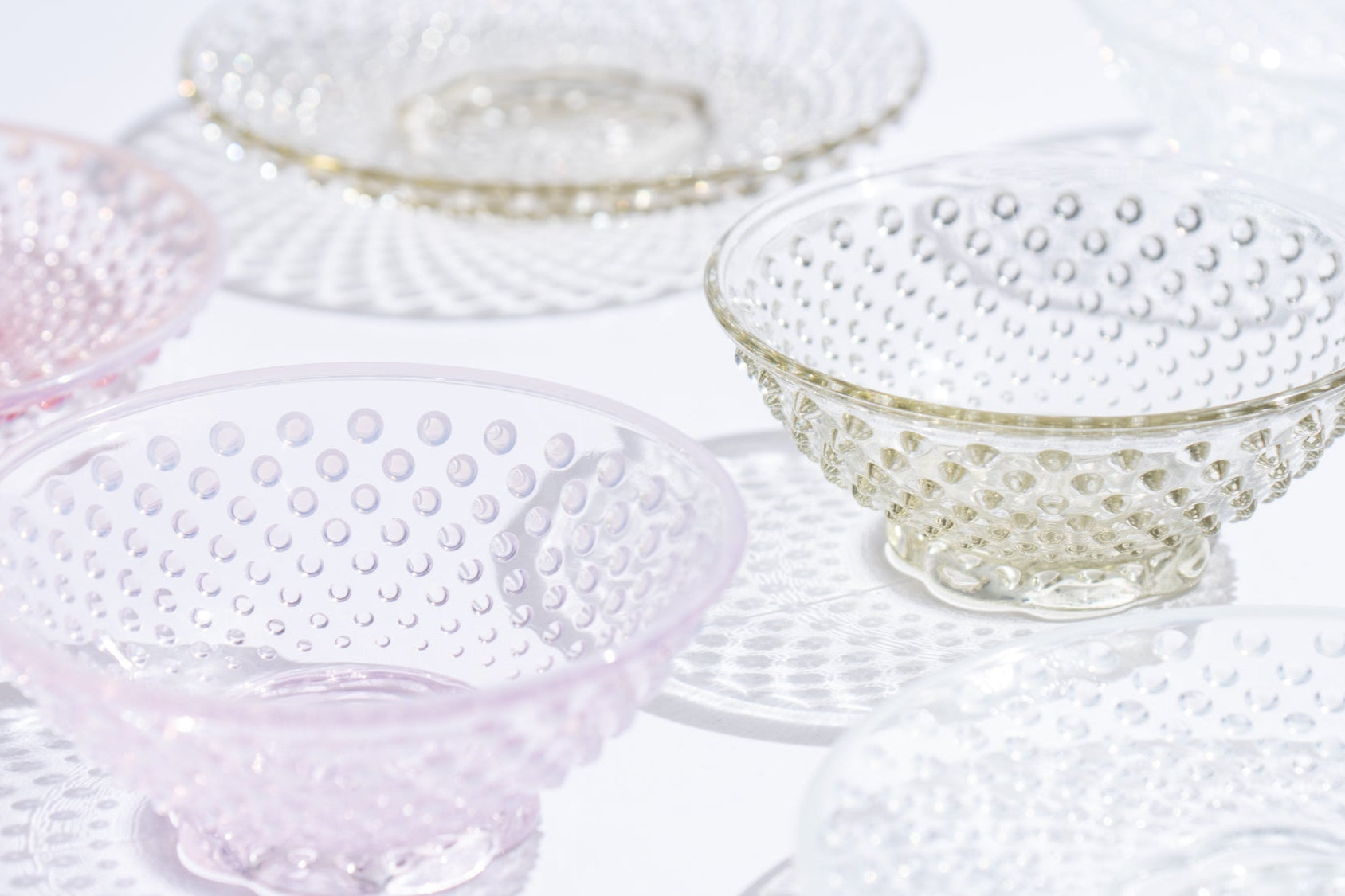
Taza de chocolate soba
Para quienes aprecian el refinado detalle de Edo Kiriko, las tazas con tapa para soba choko de esta serie presentan patrones tradicionales de vidrio tallado, reinventados con un toque moderno. Toda la superficie, desde el borde hasta la base, está intrincadamente tallada, creando ricos reflejos que cambian sutilmente con la luz. La tapa también presenta finos detalles y puede utilizarse también como plato pequeño para condimentos o guarniciones.
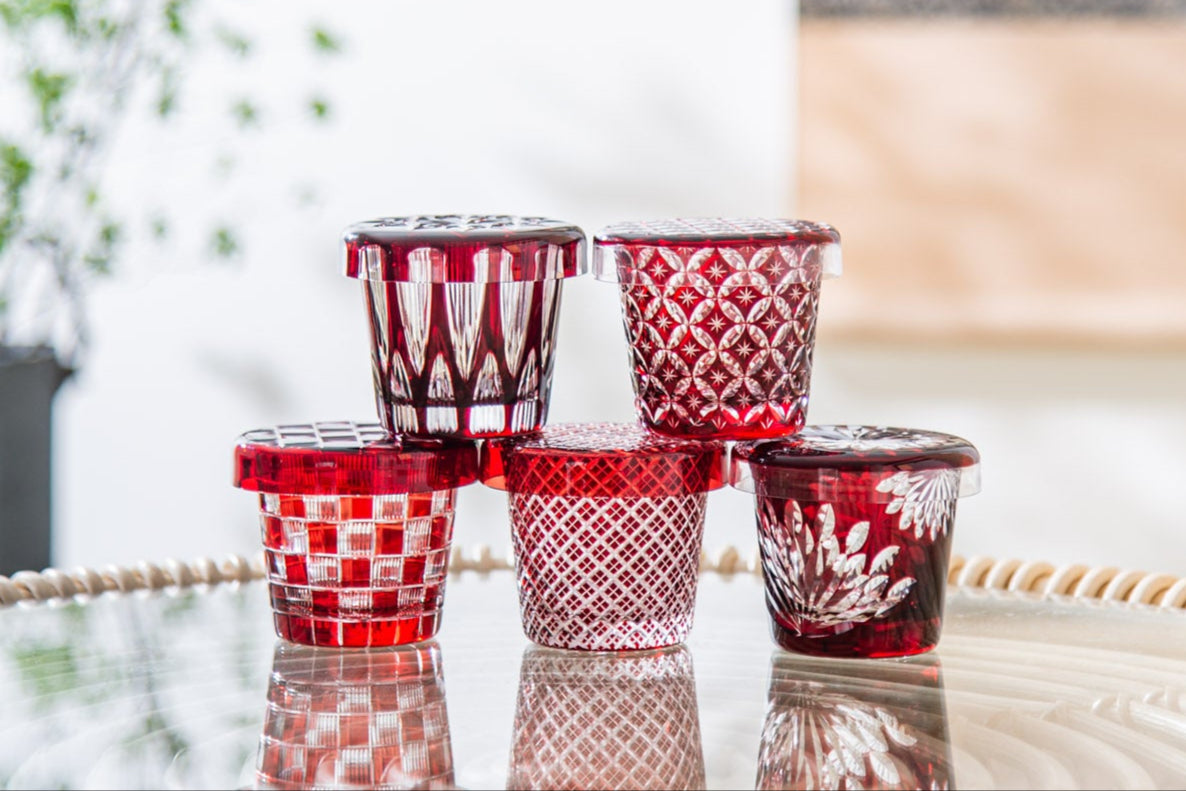
Soy Sauce Dispenser
Hirota Glass fue la primera empresa en introducir dispensadores de salsa de soja con juntas de vidrio esmerilado, un diseño que ahora se considera el estándar por su vertido limpio y sin goteo. Los encantadores dispensadores de salsa de soja de esta serie tienen la forma de un pequeño y colorido pájaro, combinando funcionalidad con un diseño divertido.
Diseñado para verter con suavidad y detenerse limpiamente sin fugas, es ideal no solo para salsa de soja, sino también para otros condimentos ligeros como vinagre, aderezos o jarabes ligeros. Disponibles en una gama de colores, estos pequeños pájaros son un placer para coleccionar o formar una alegre bandada.
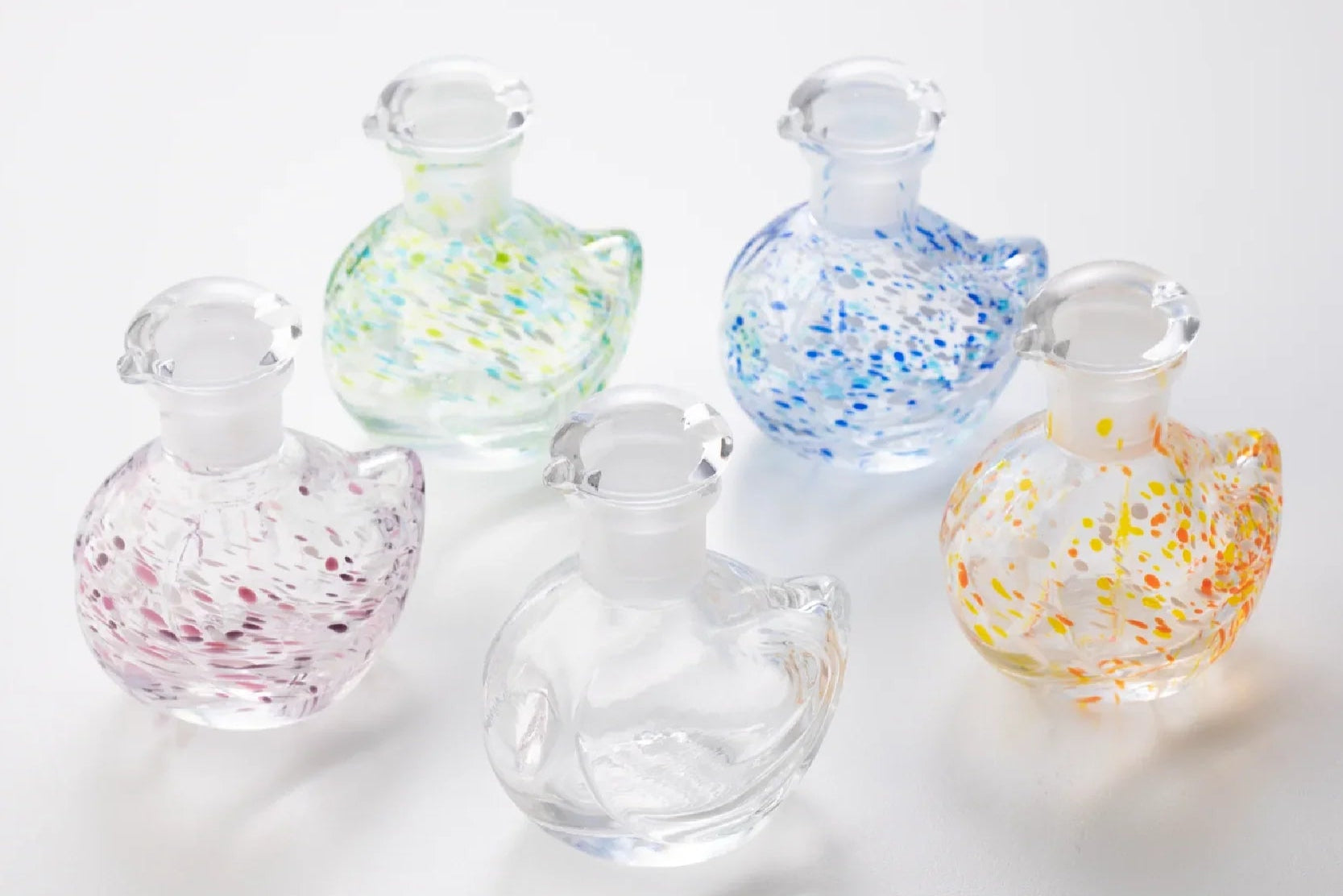
Origen y otros creadores
Artículos relacionados
Filtros


